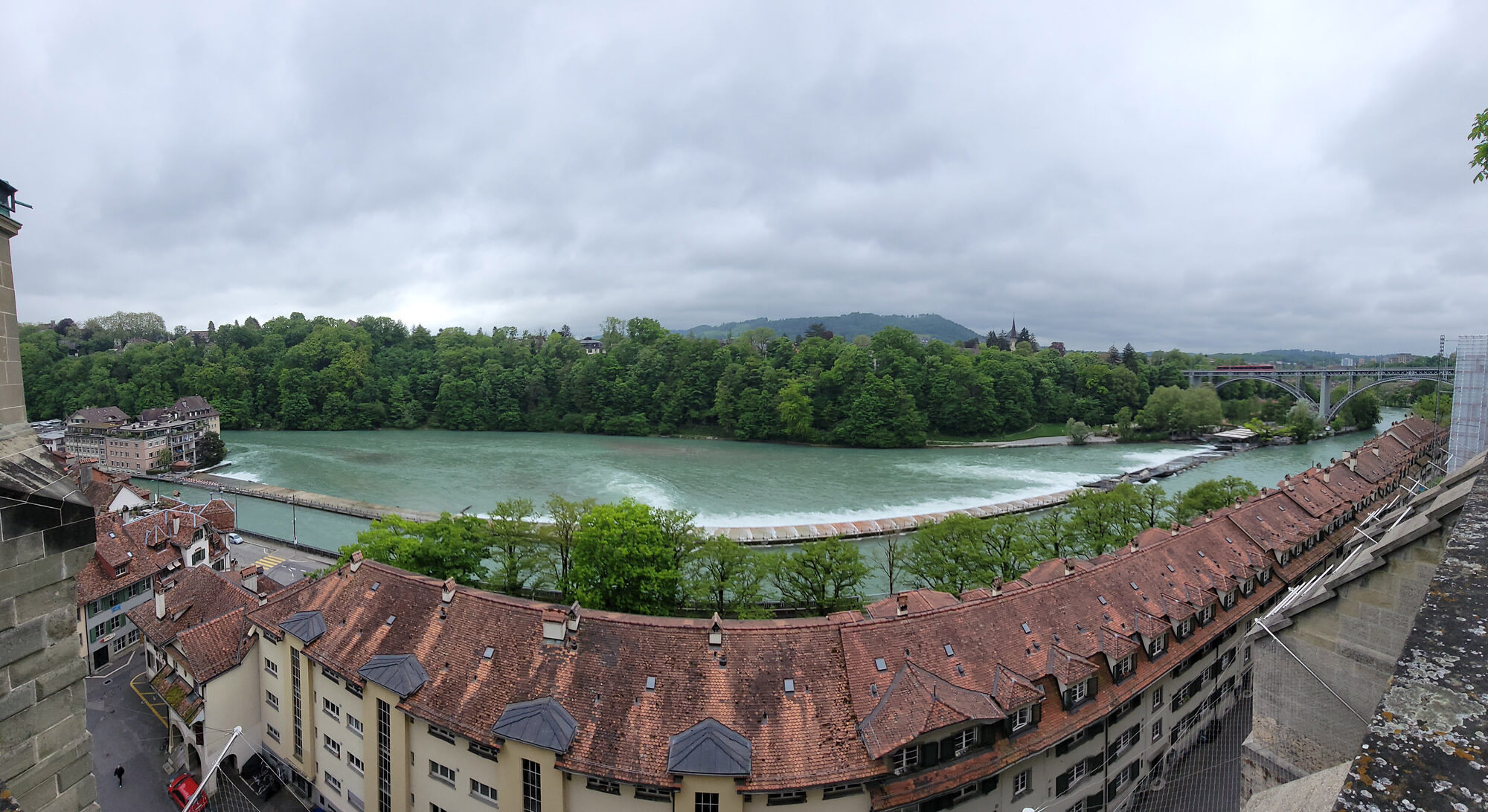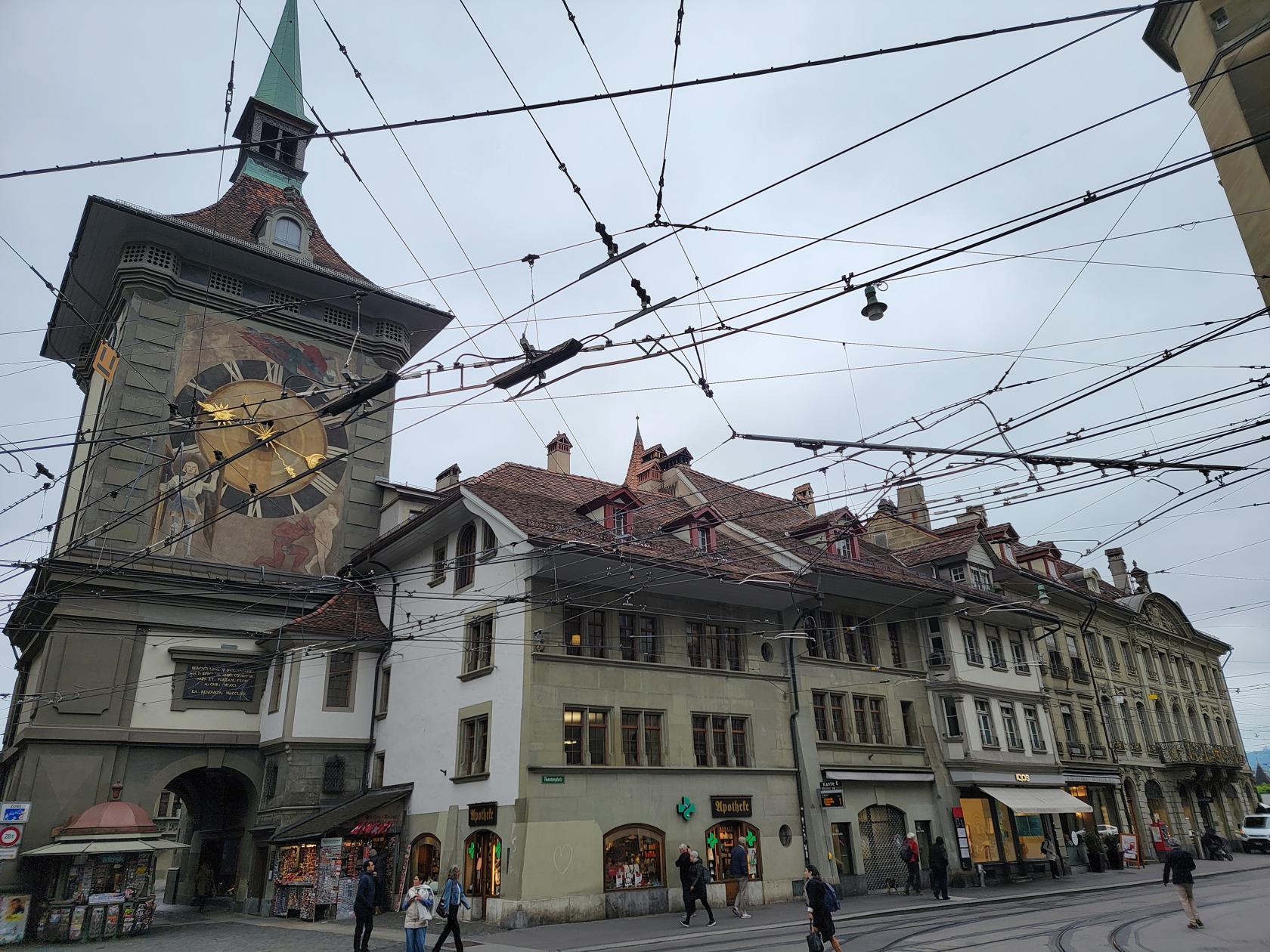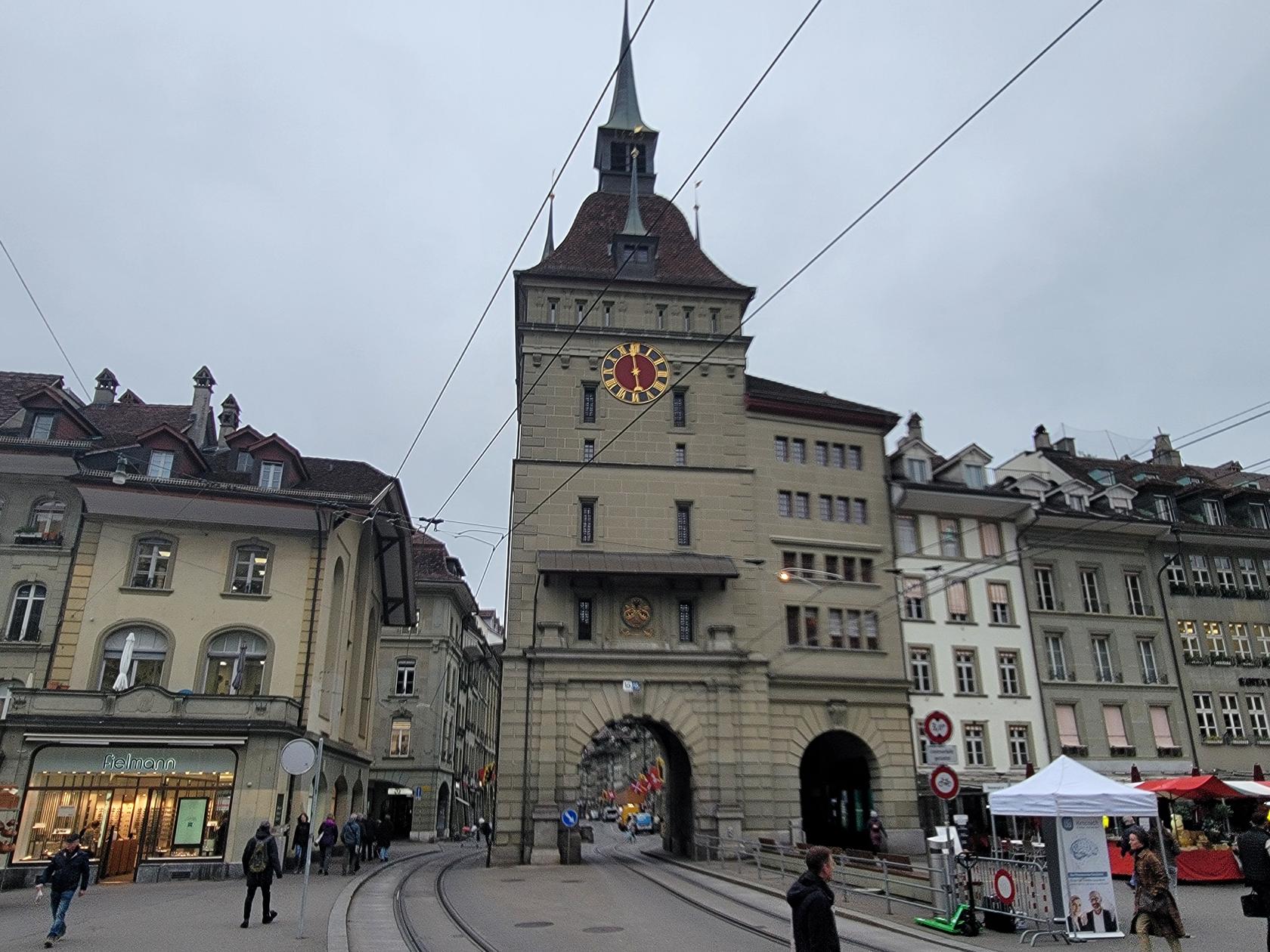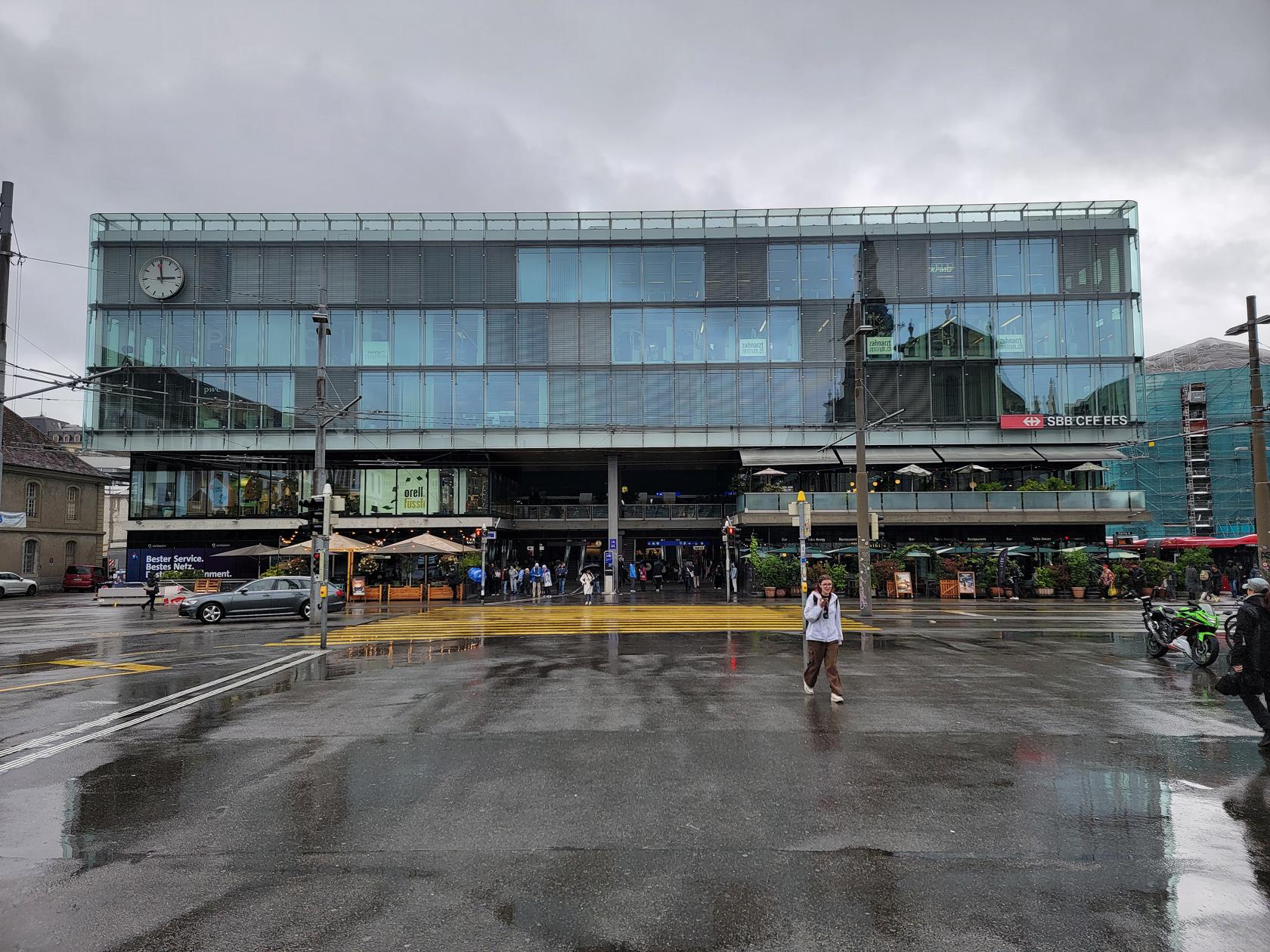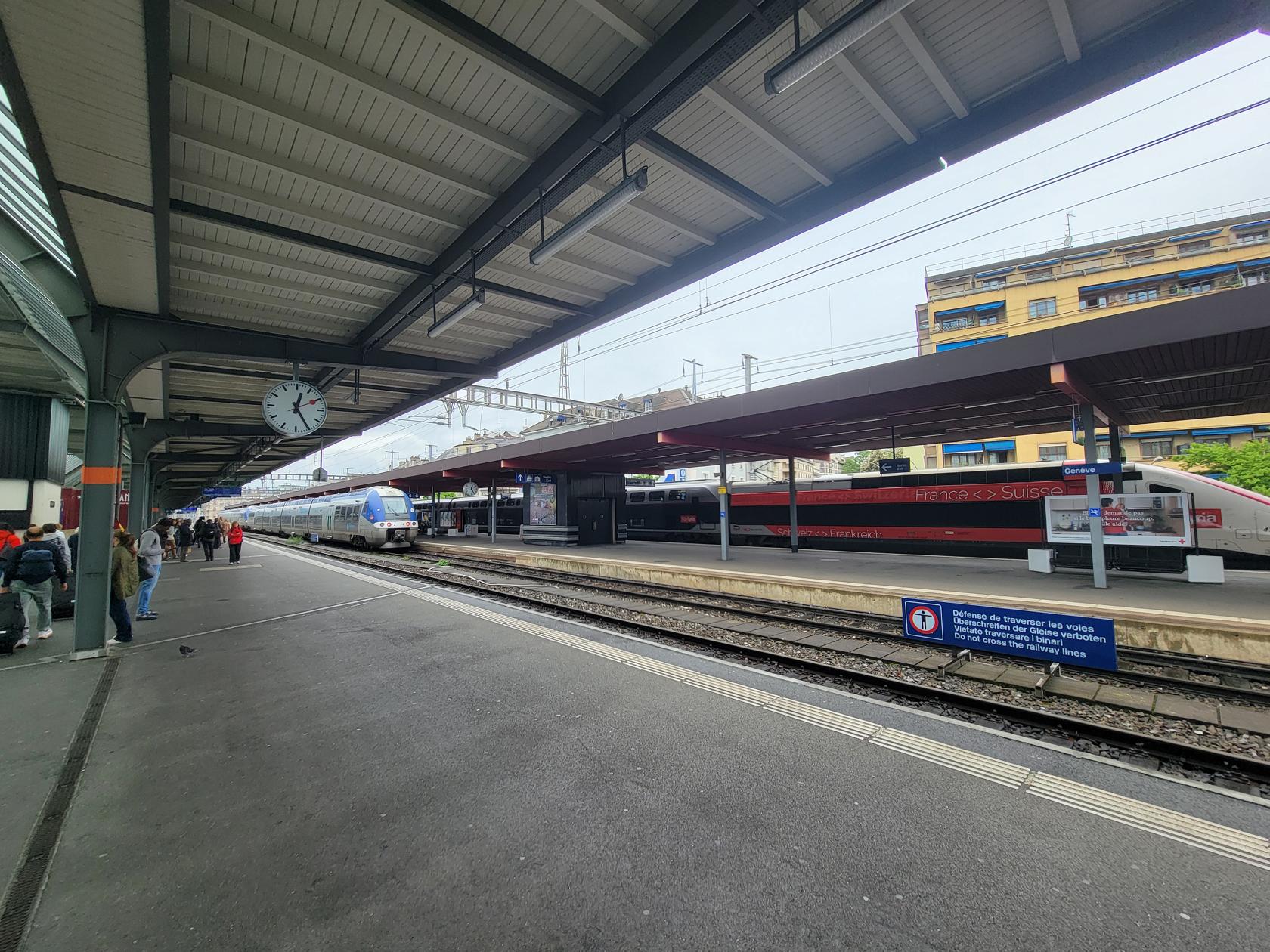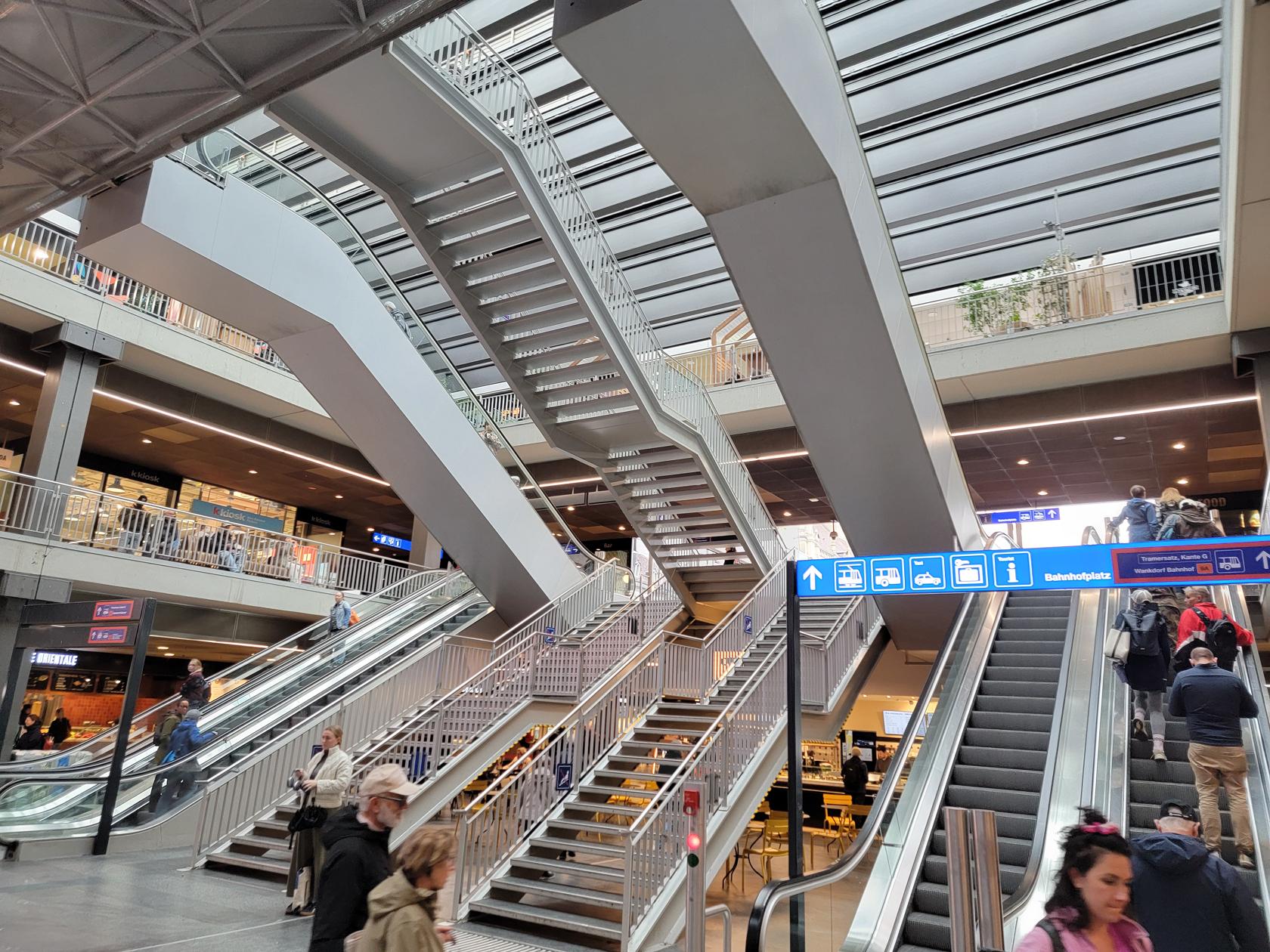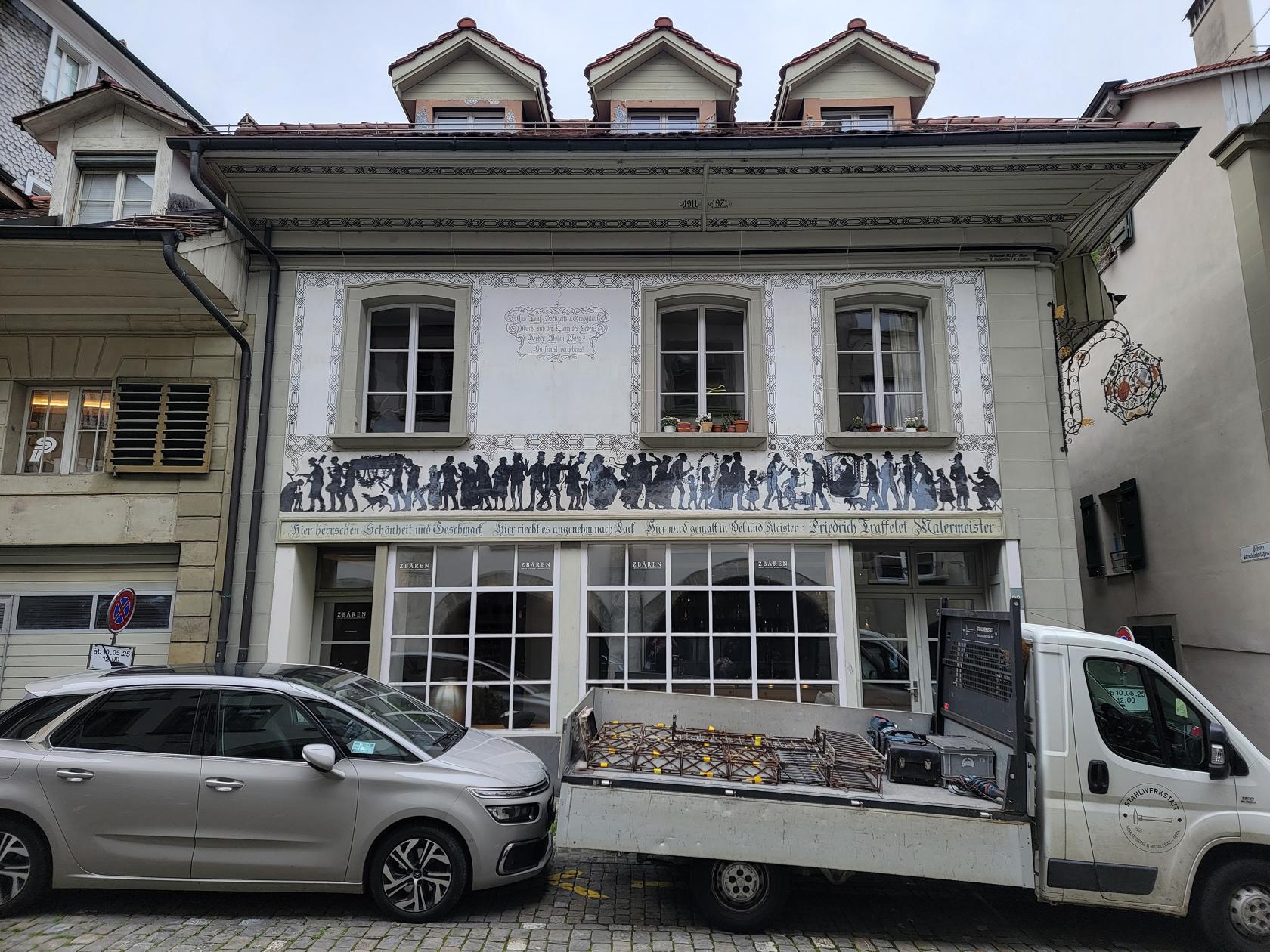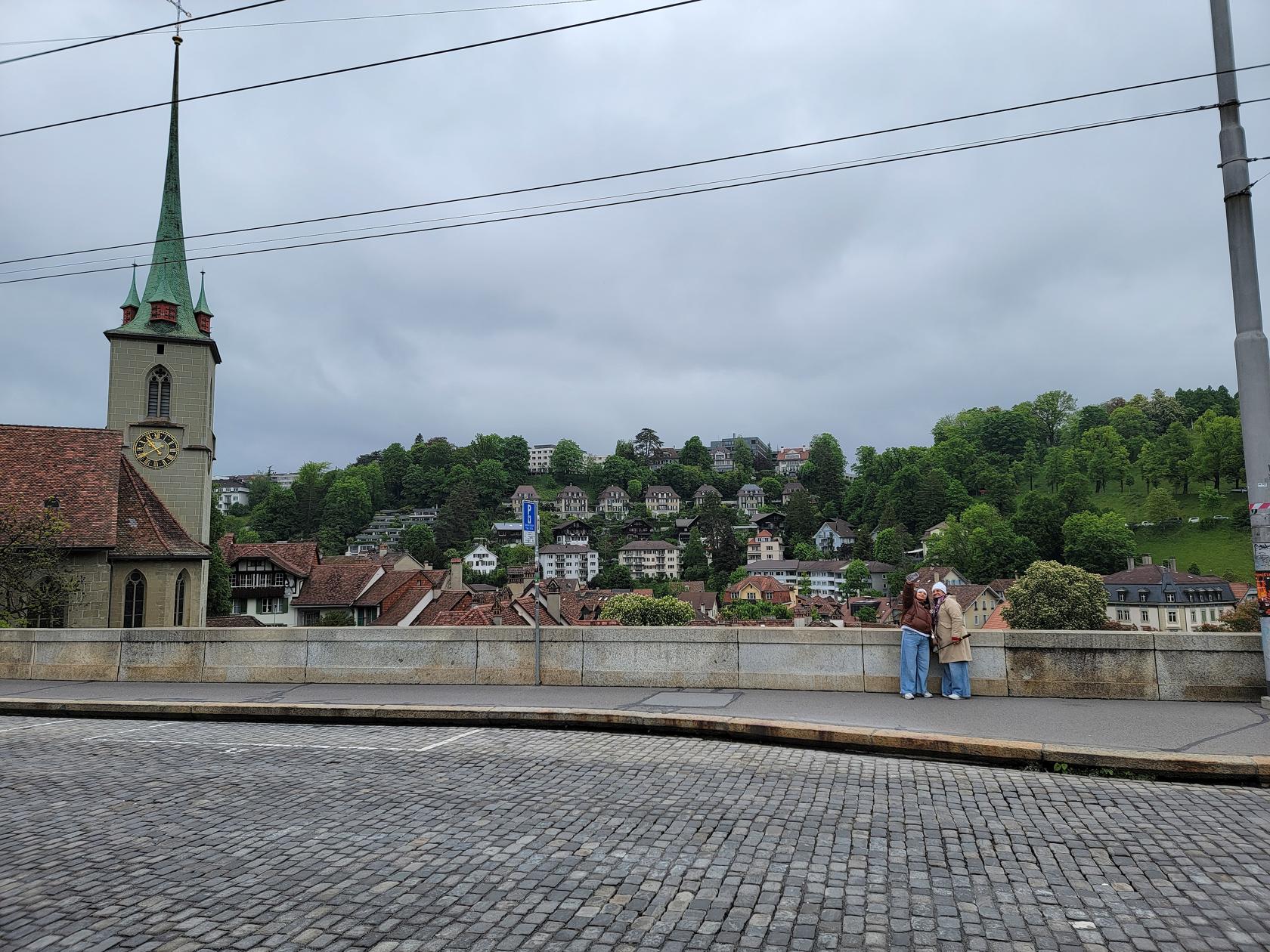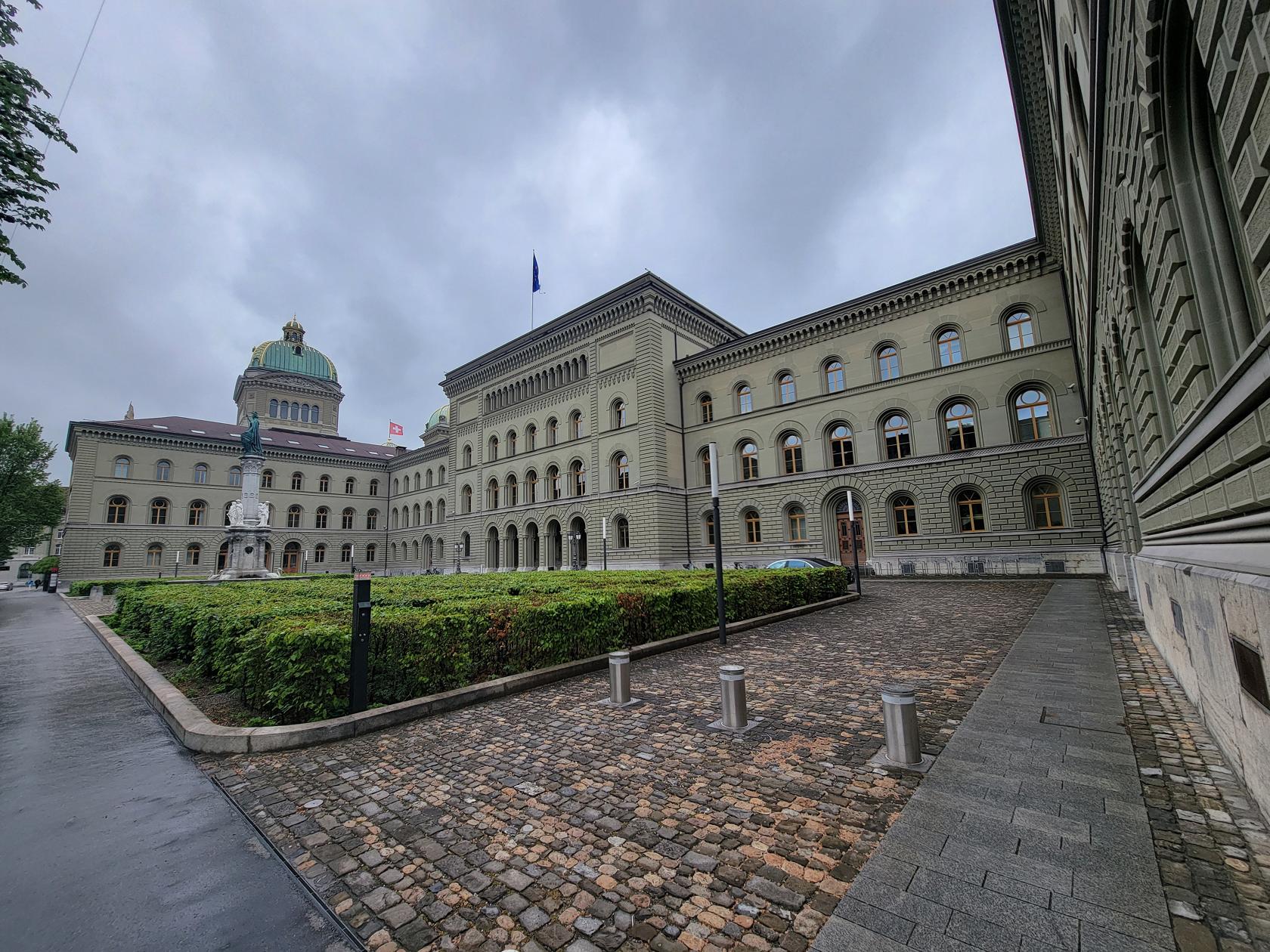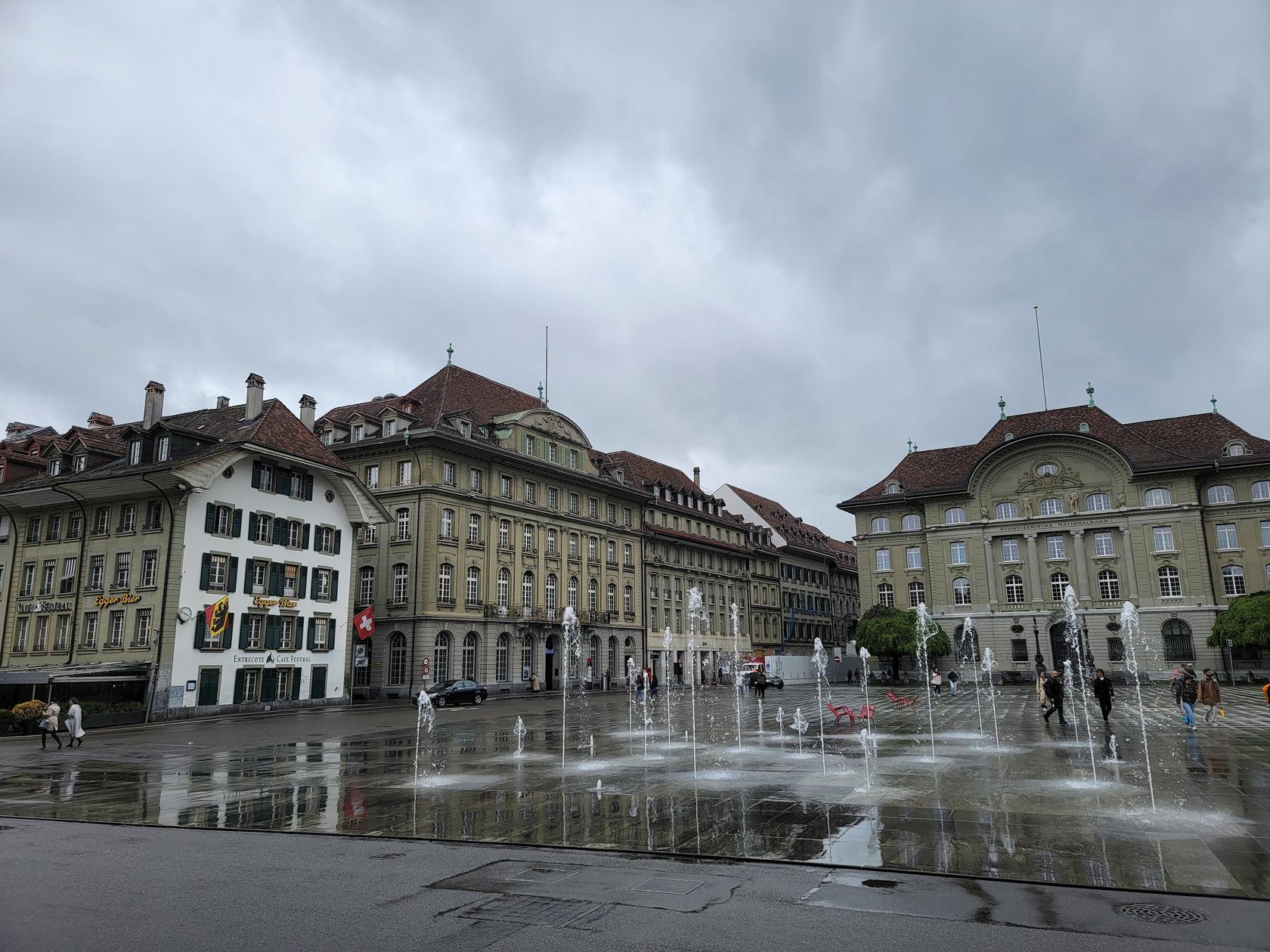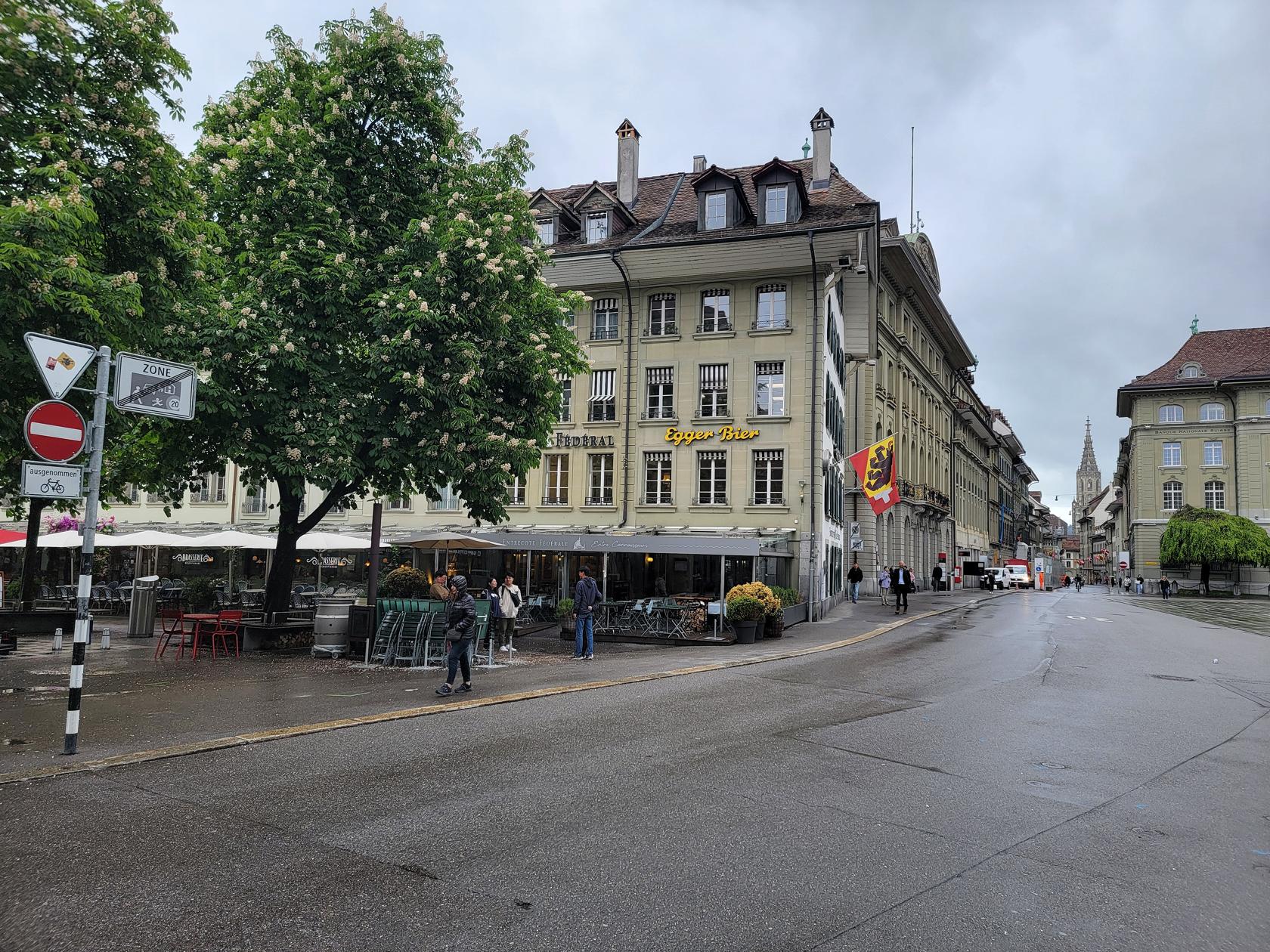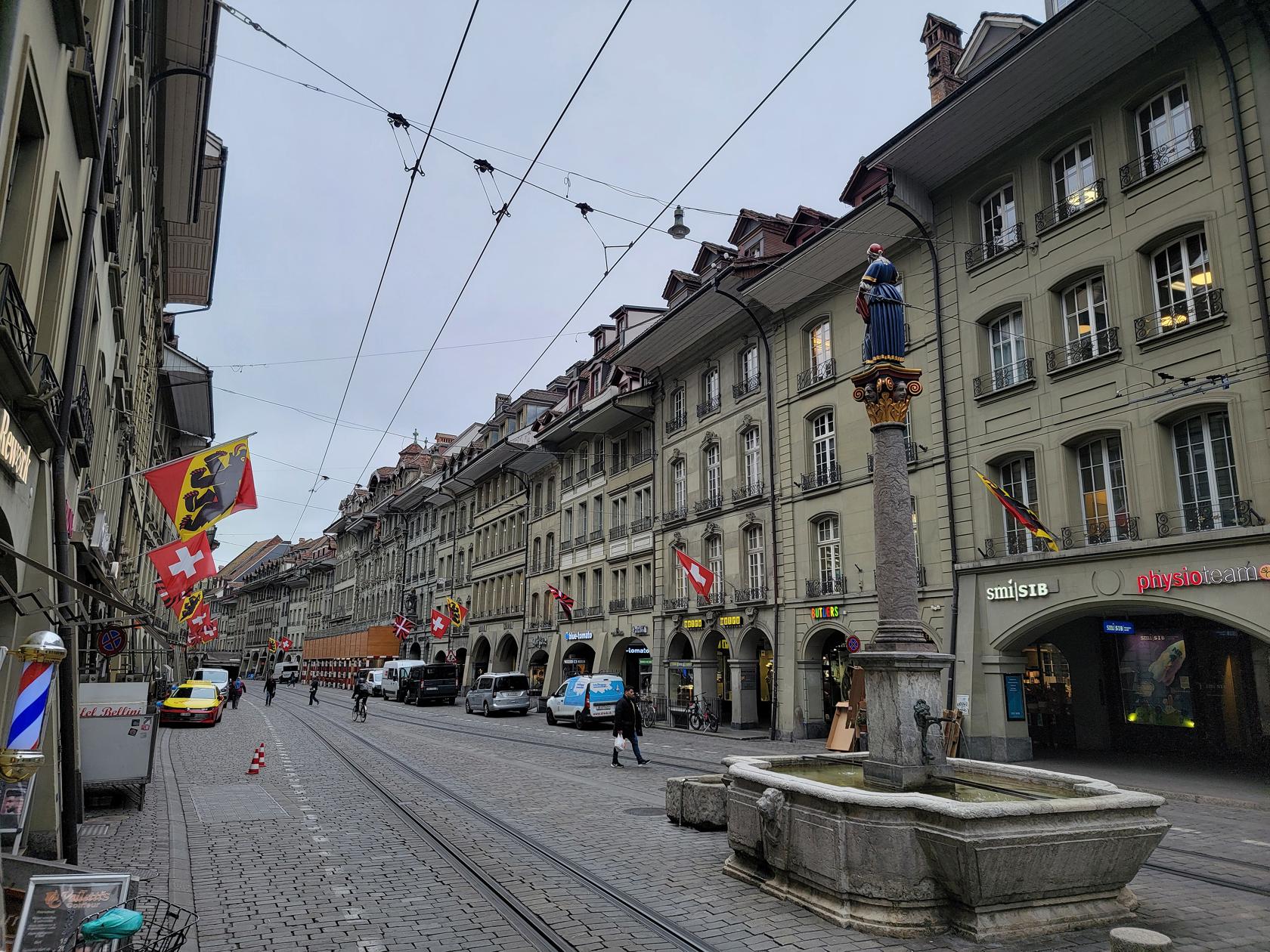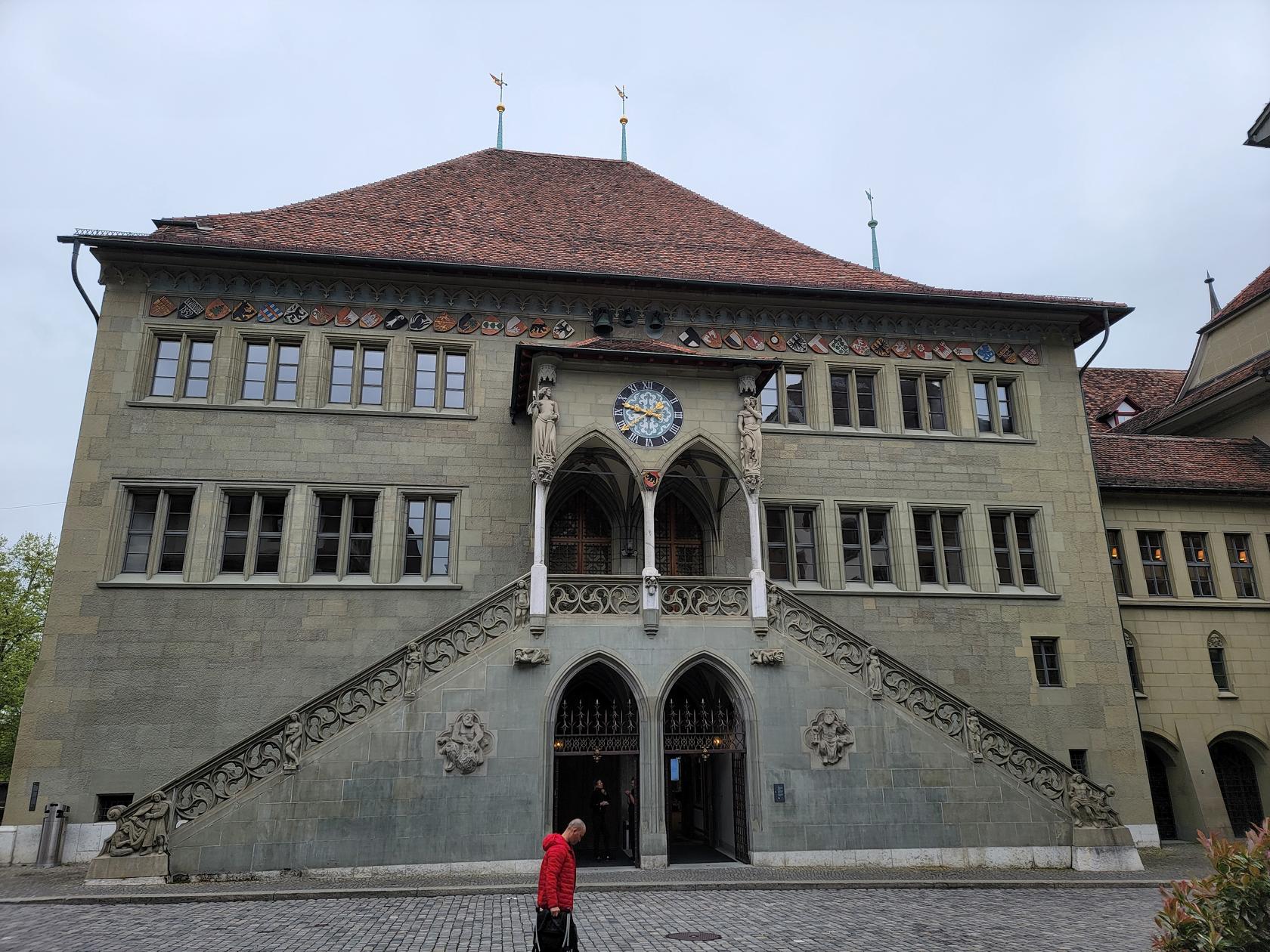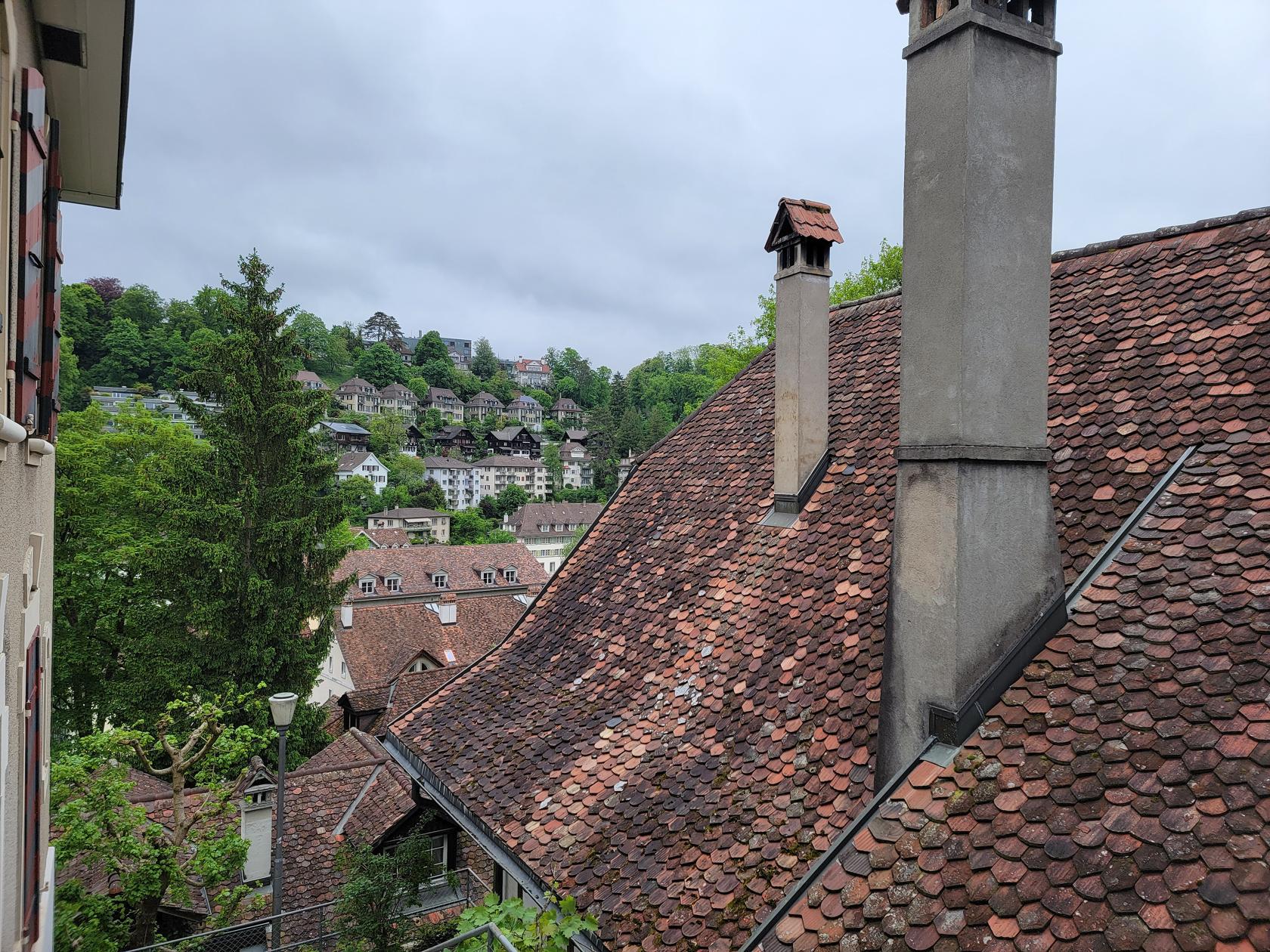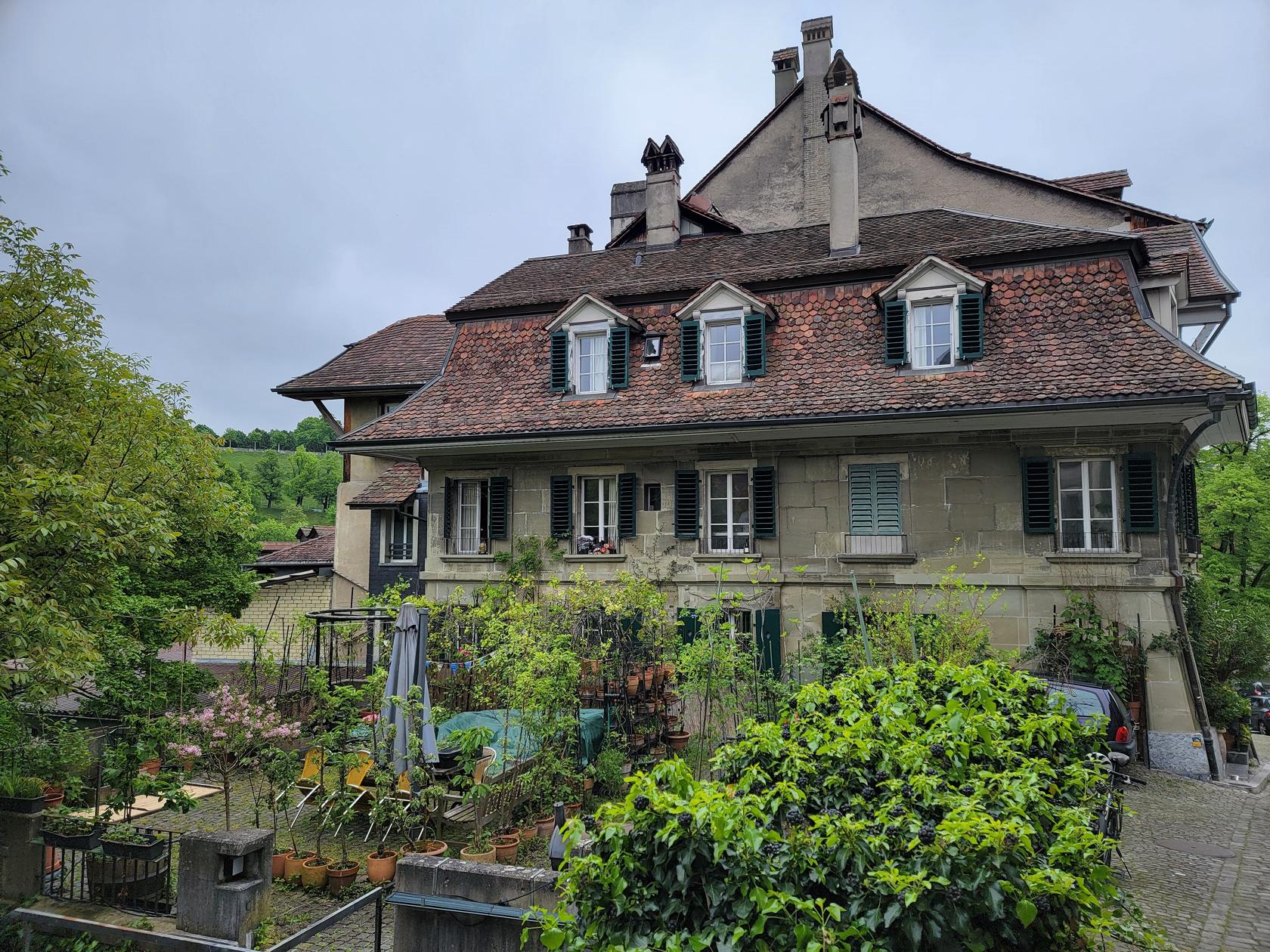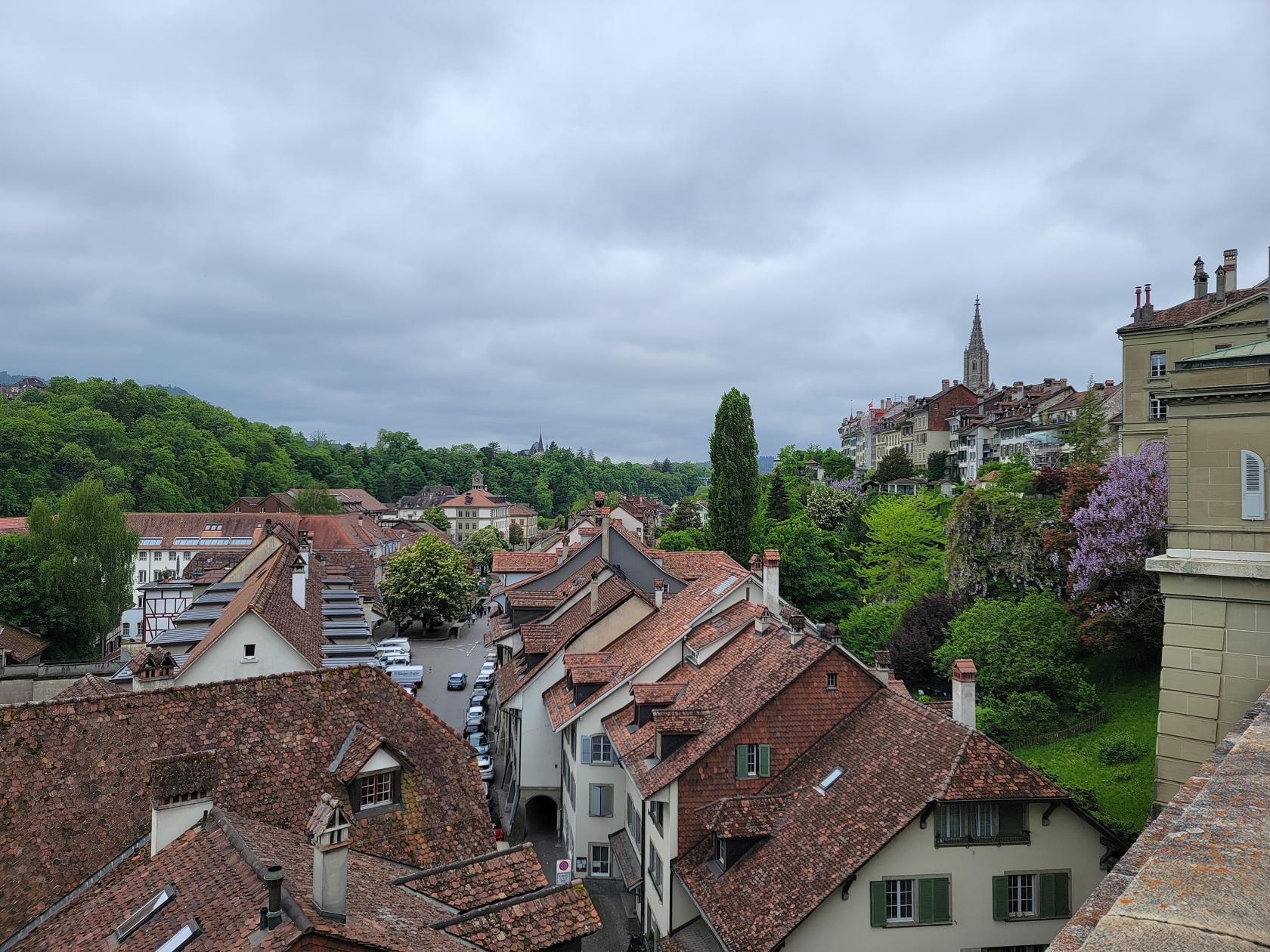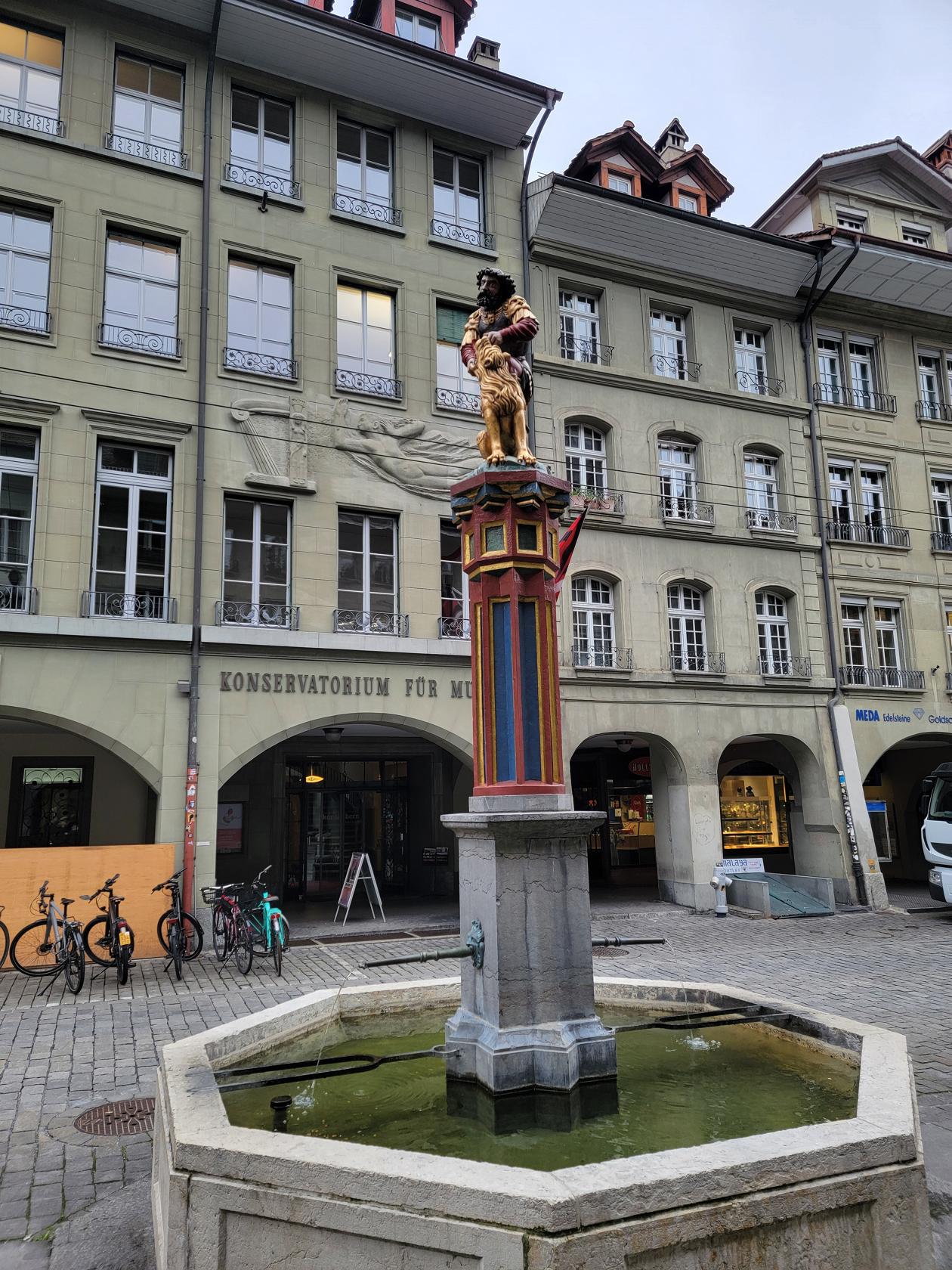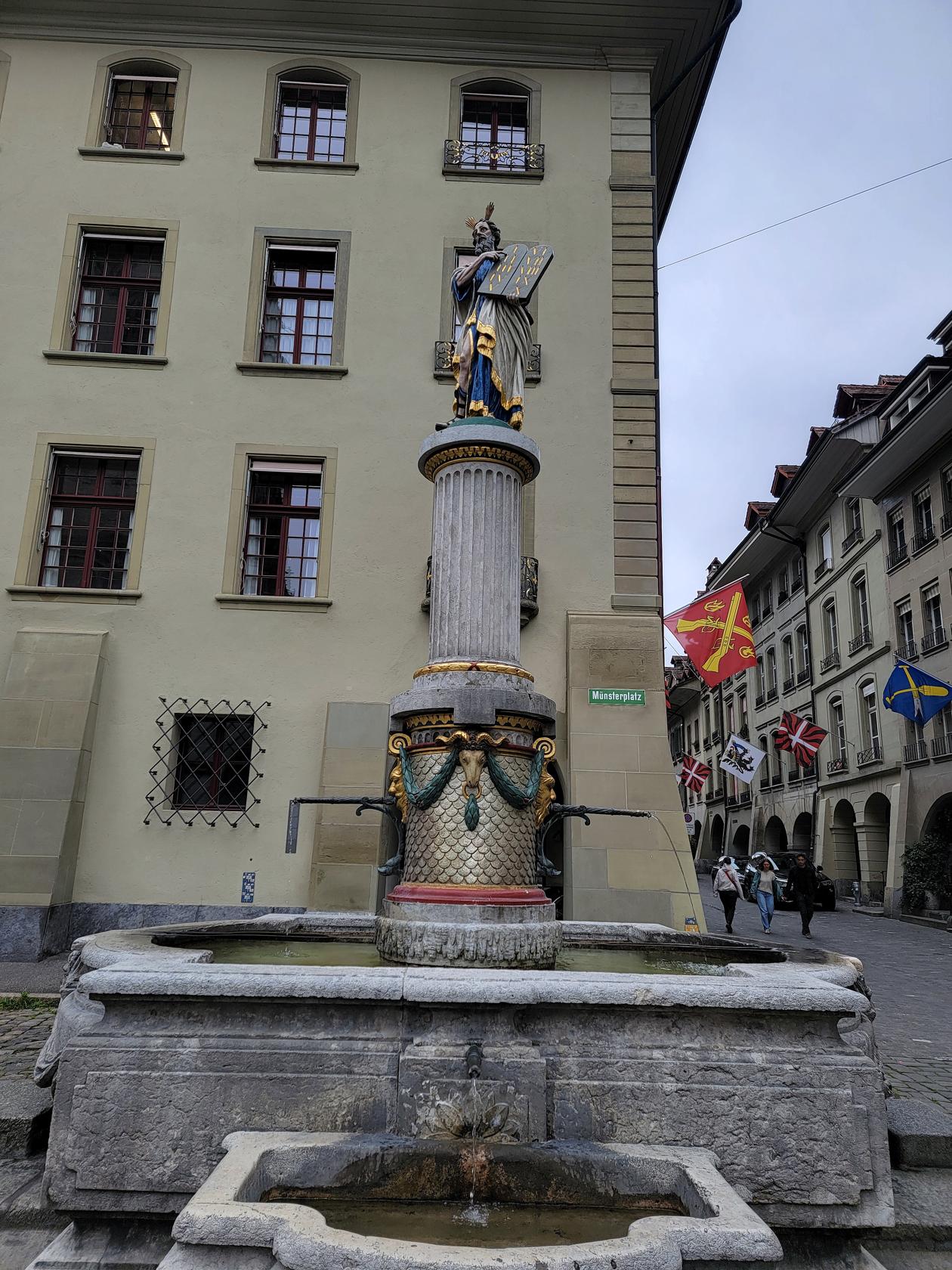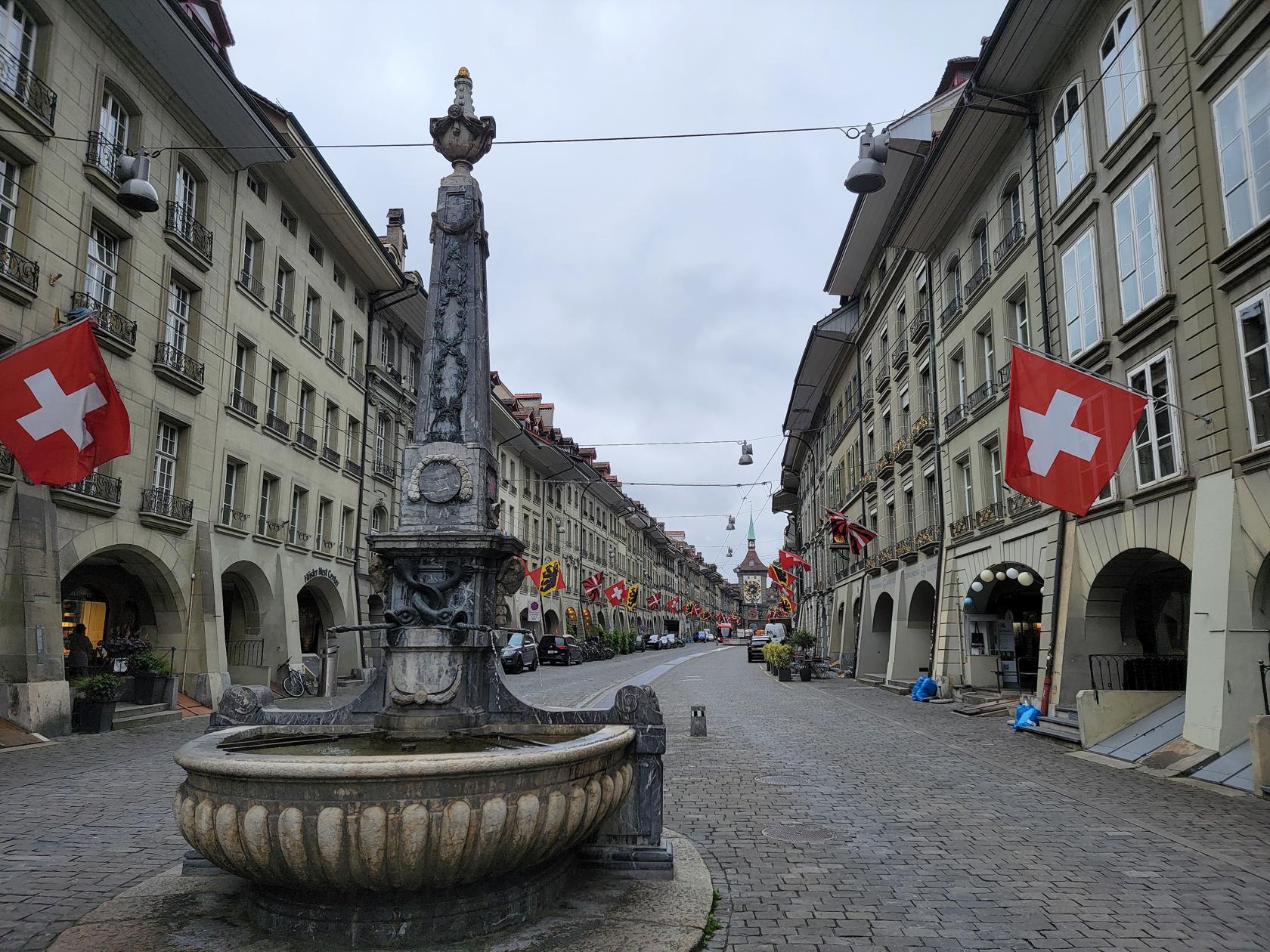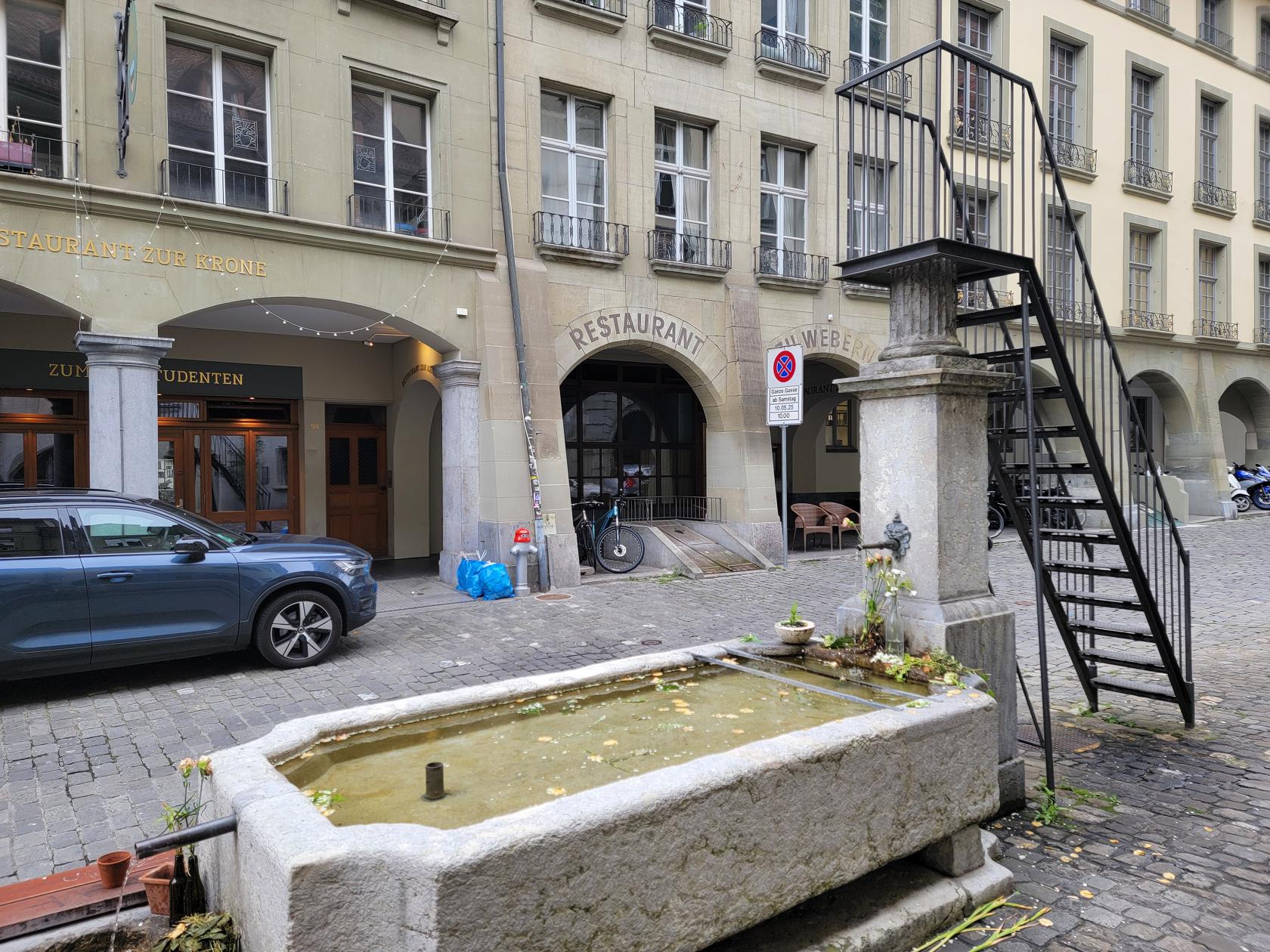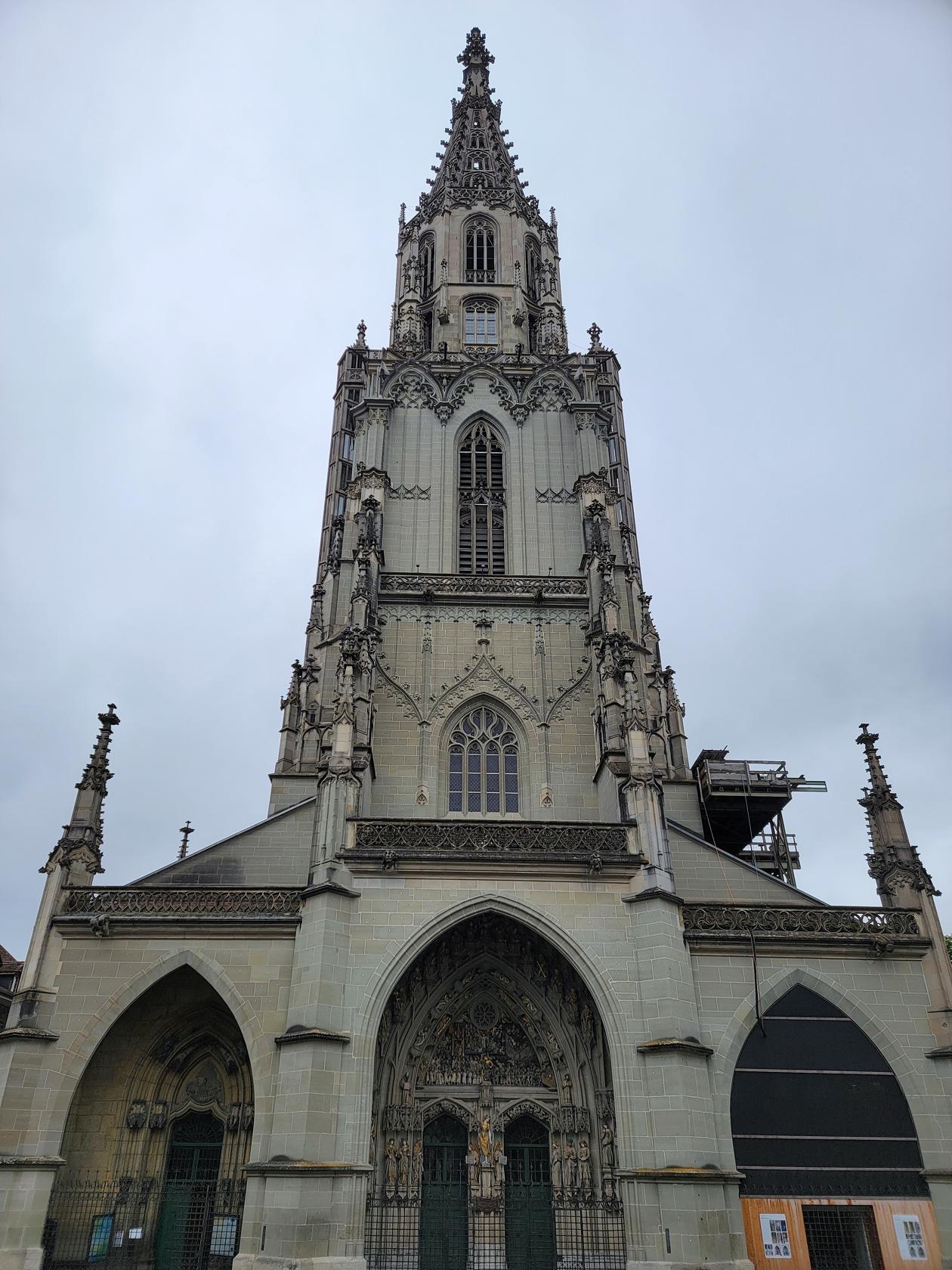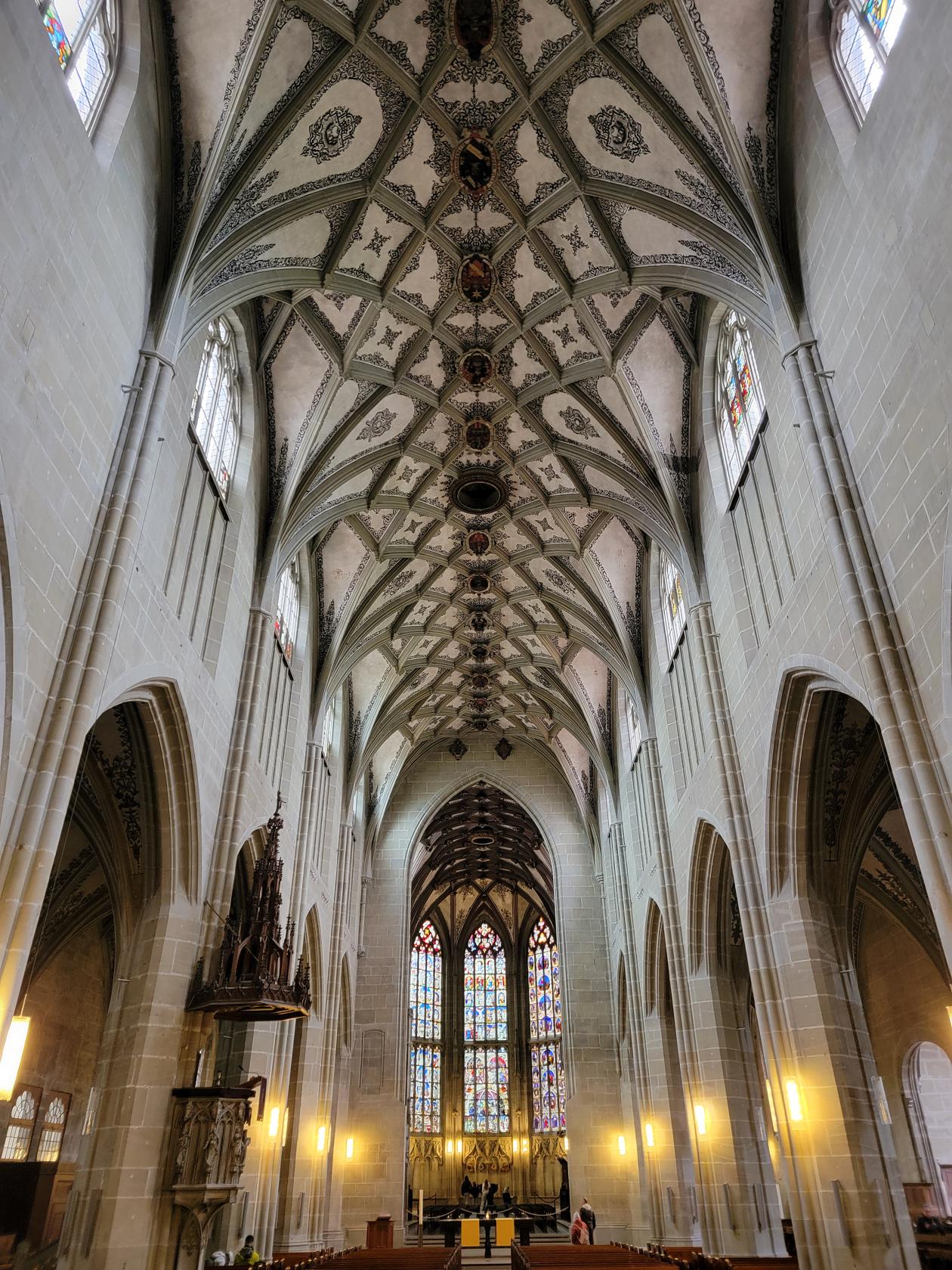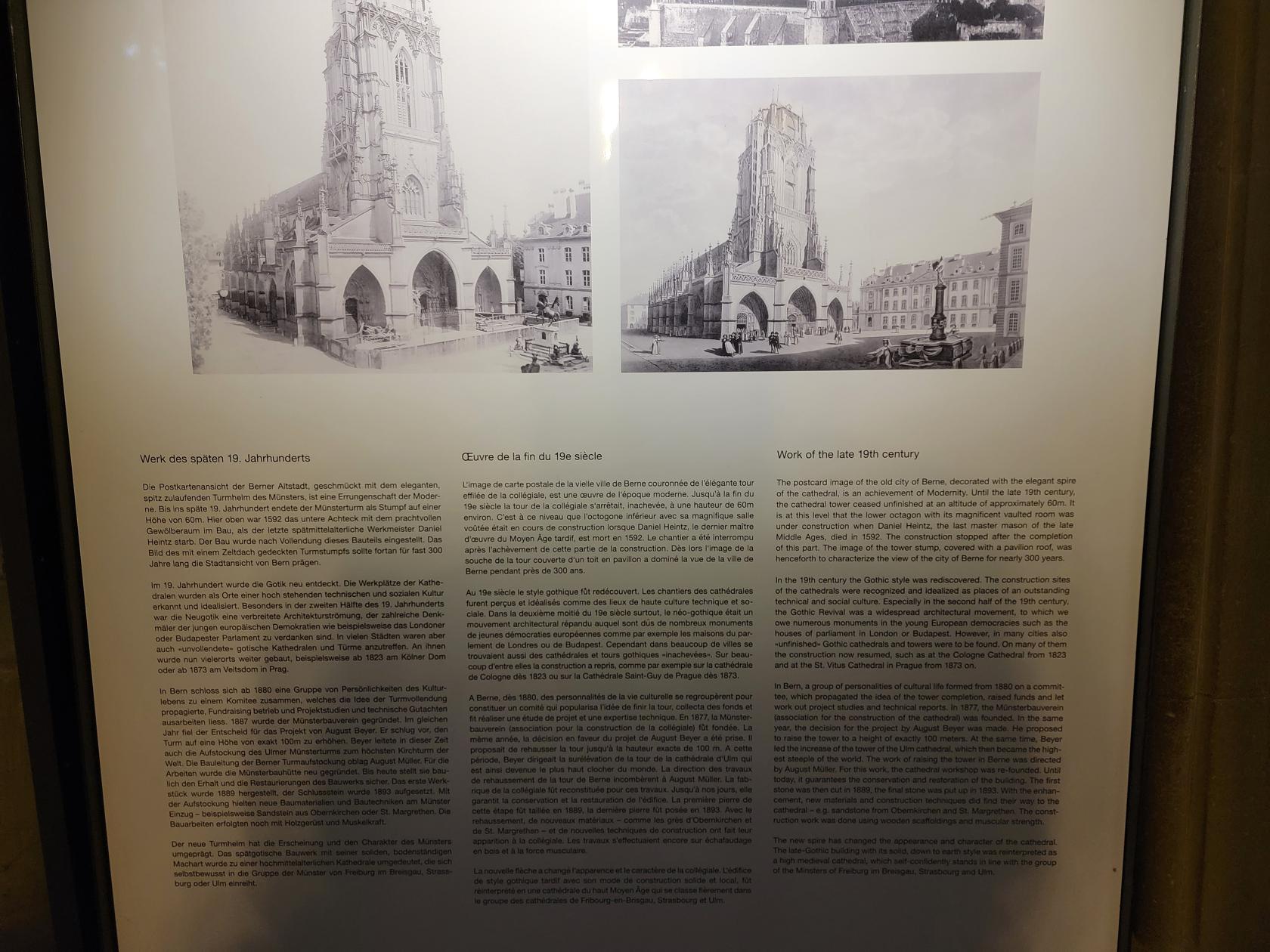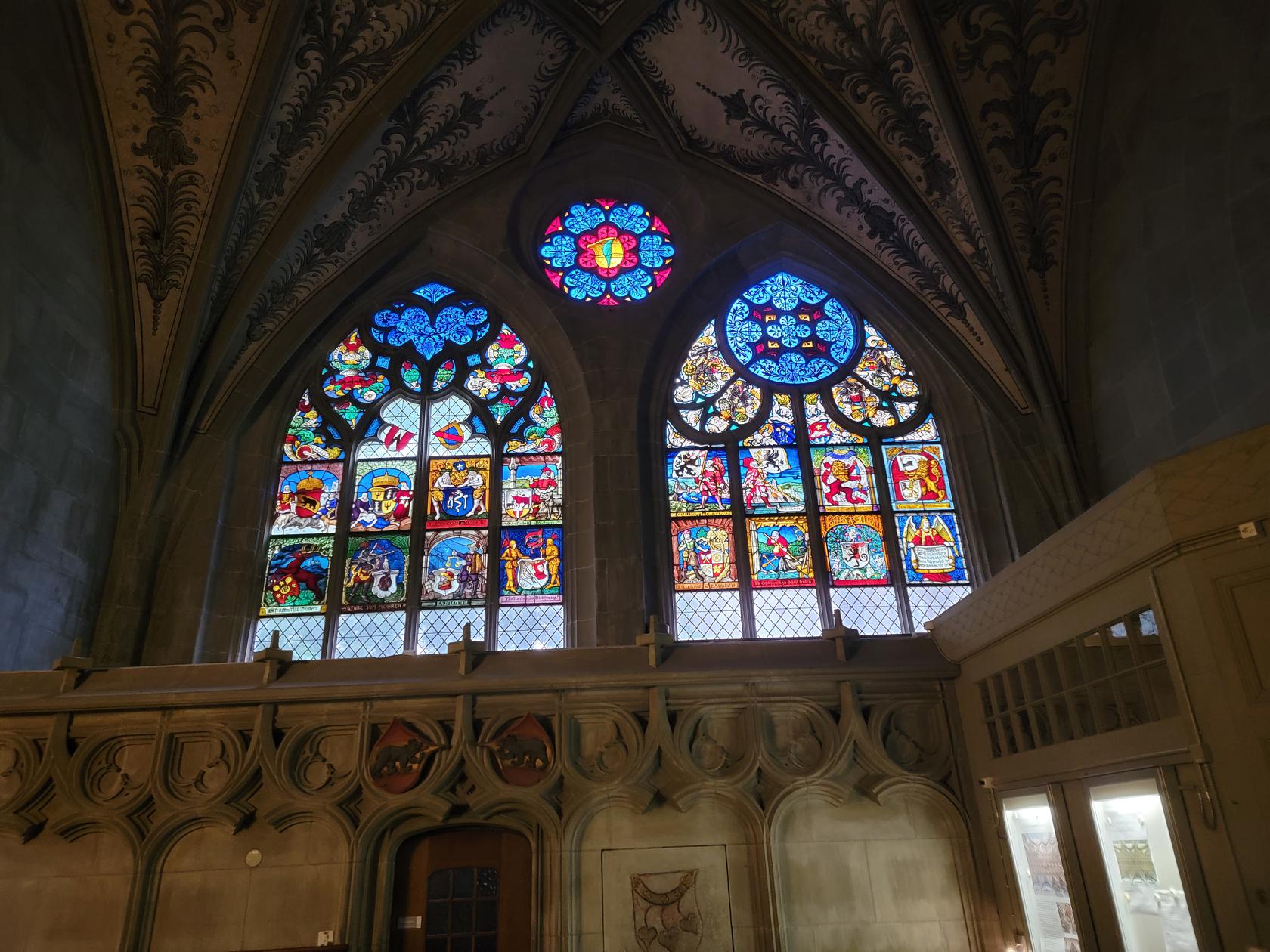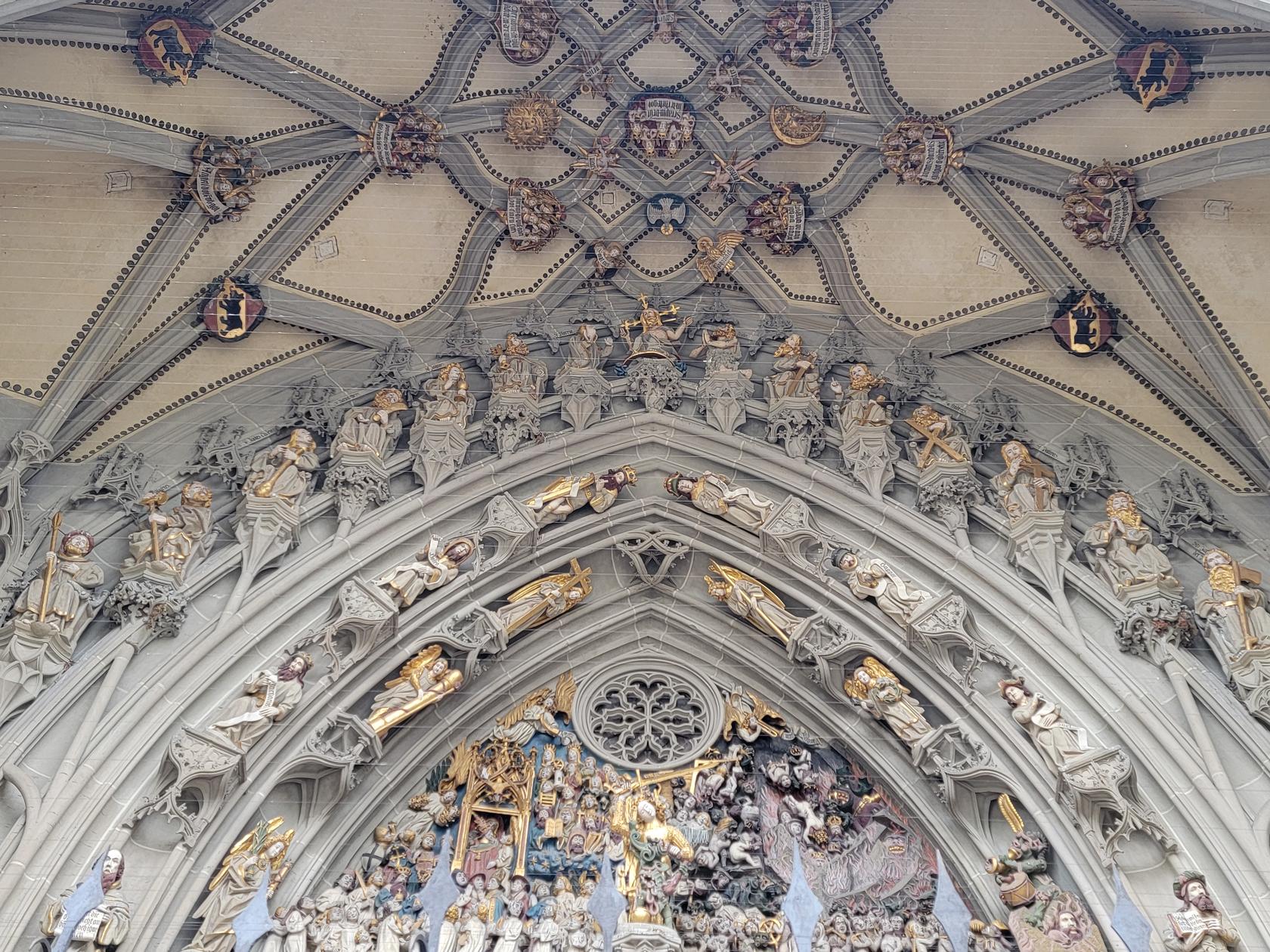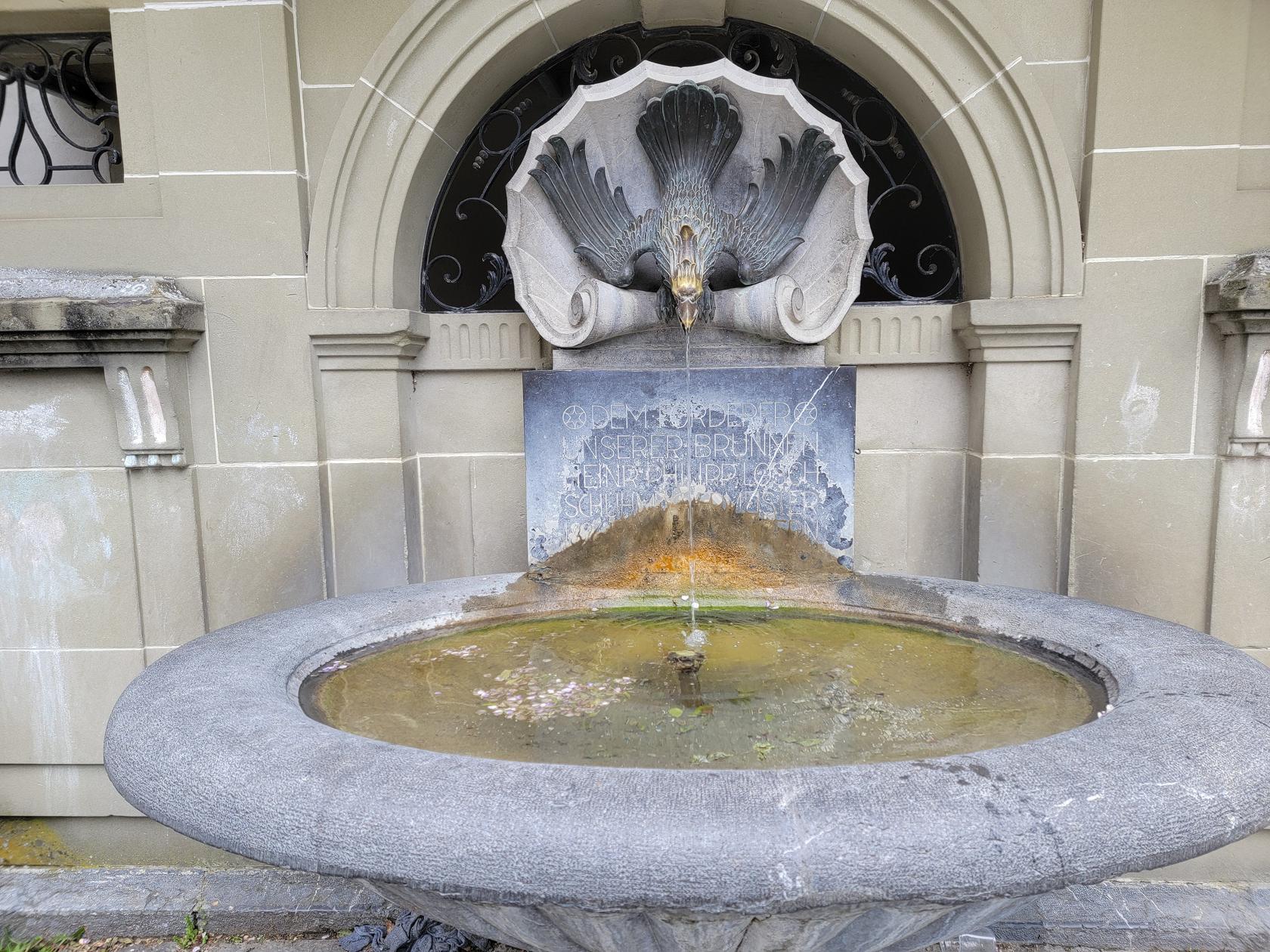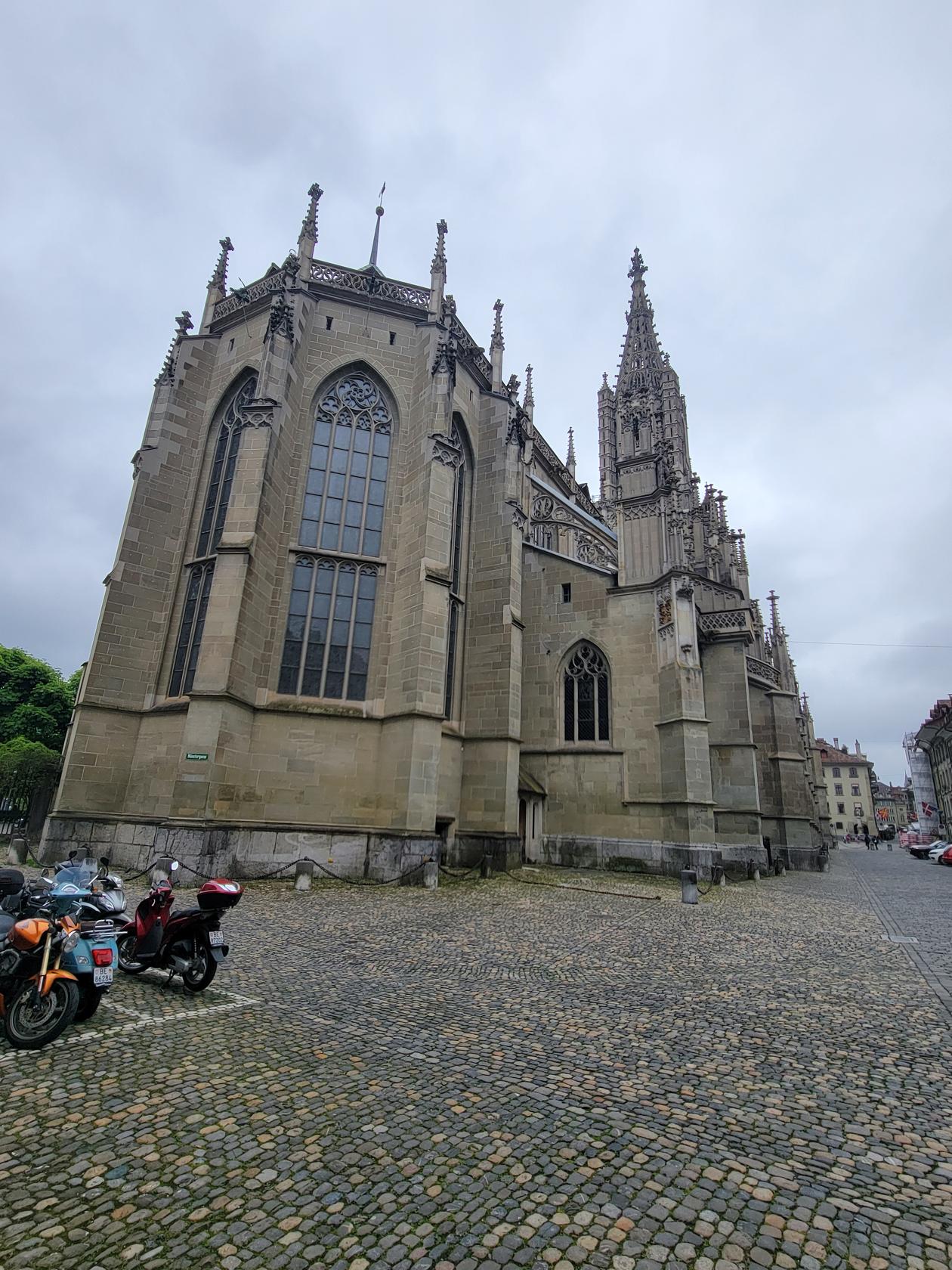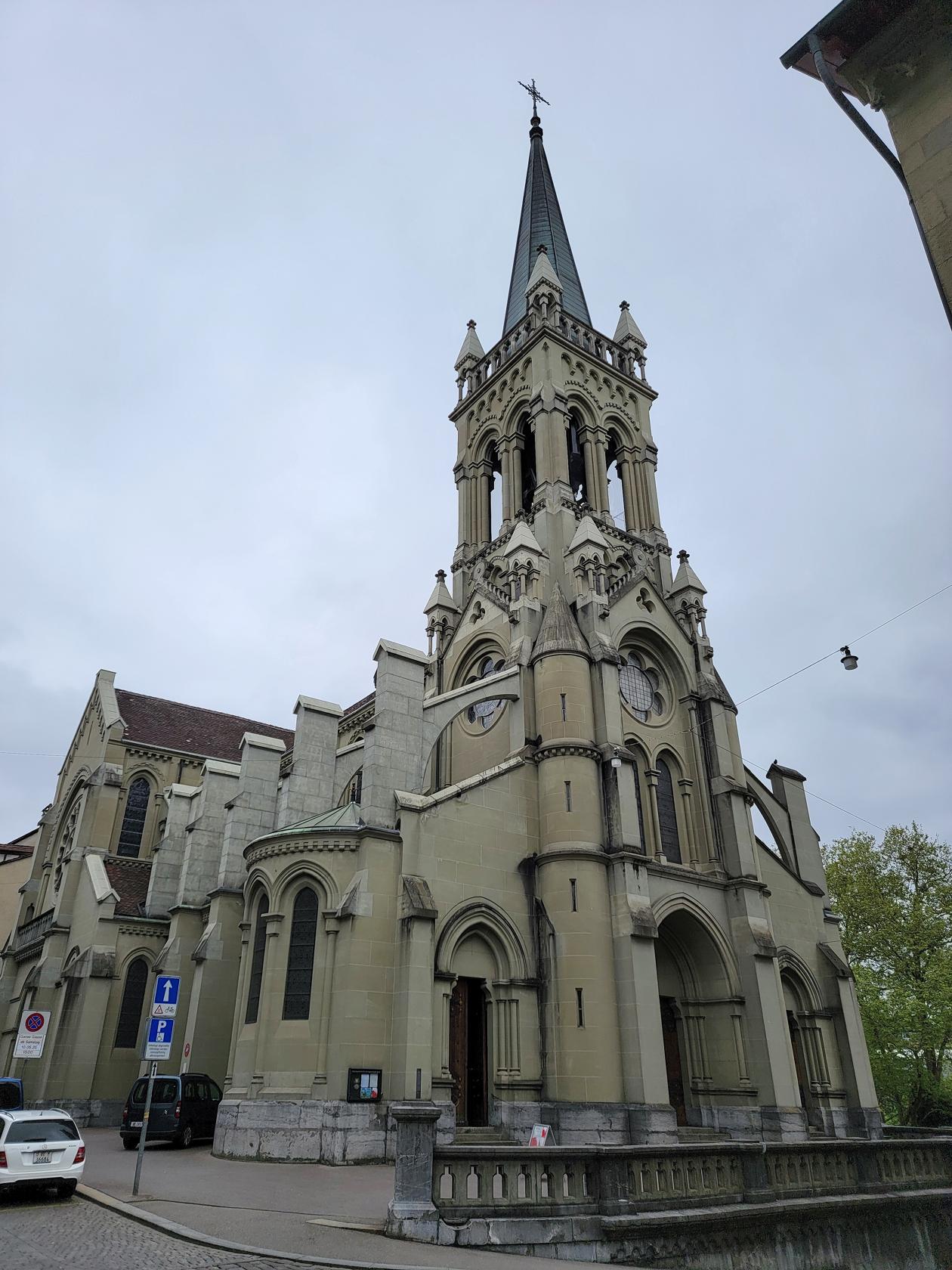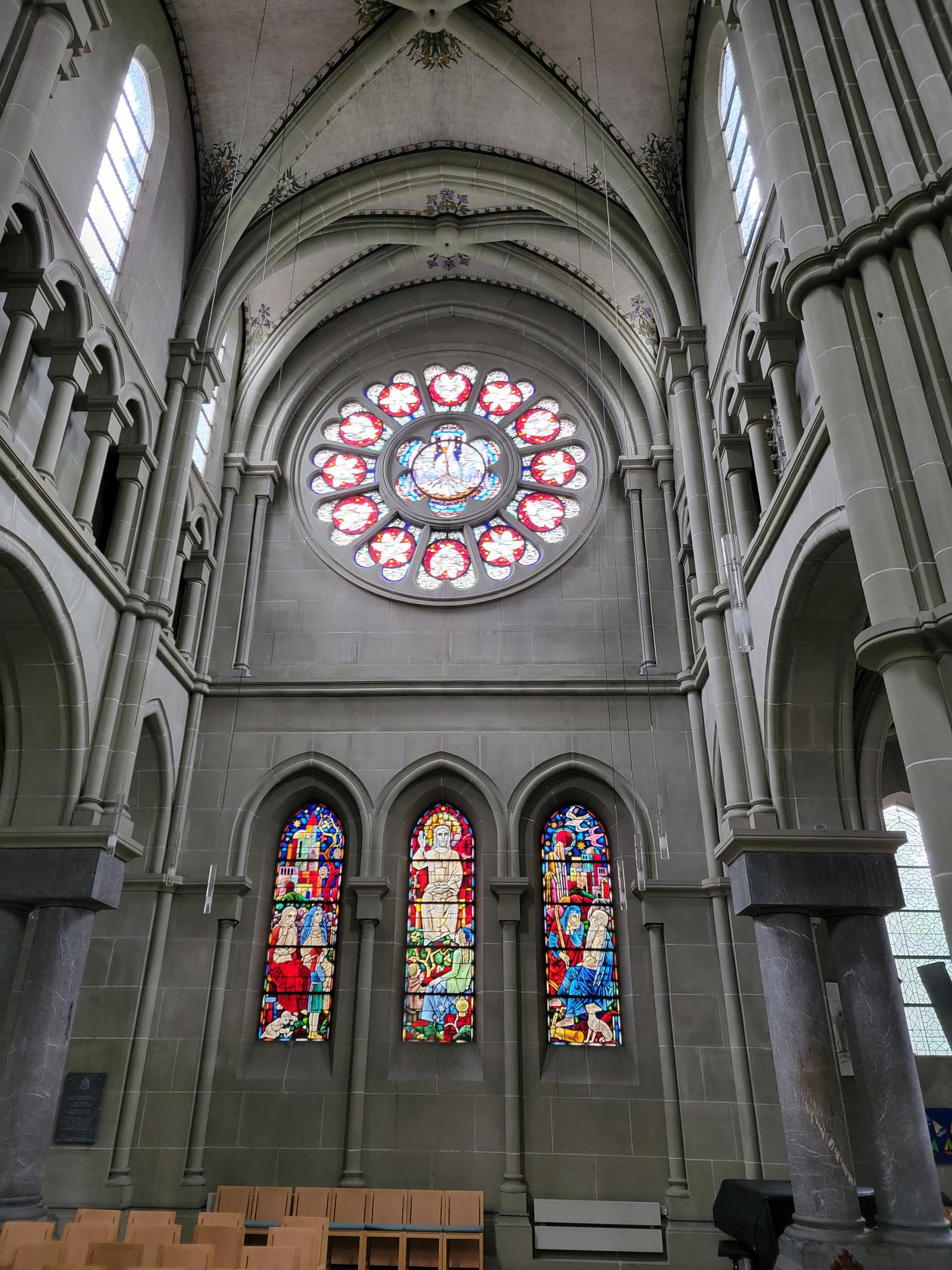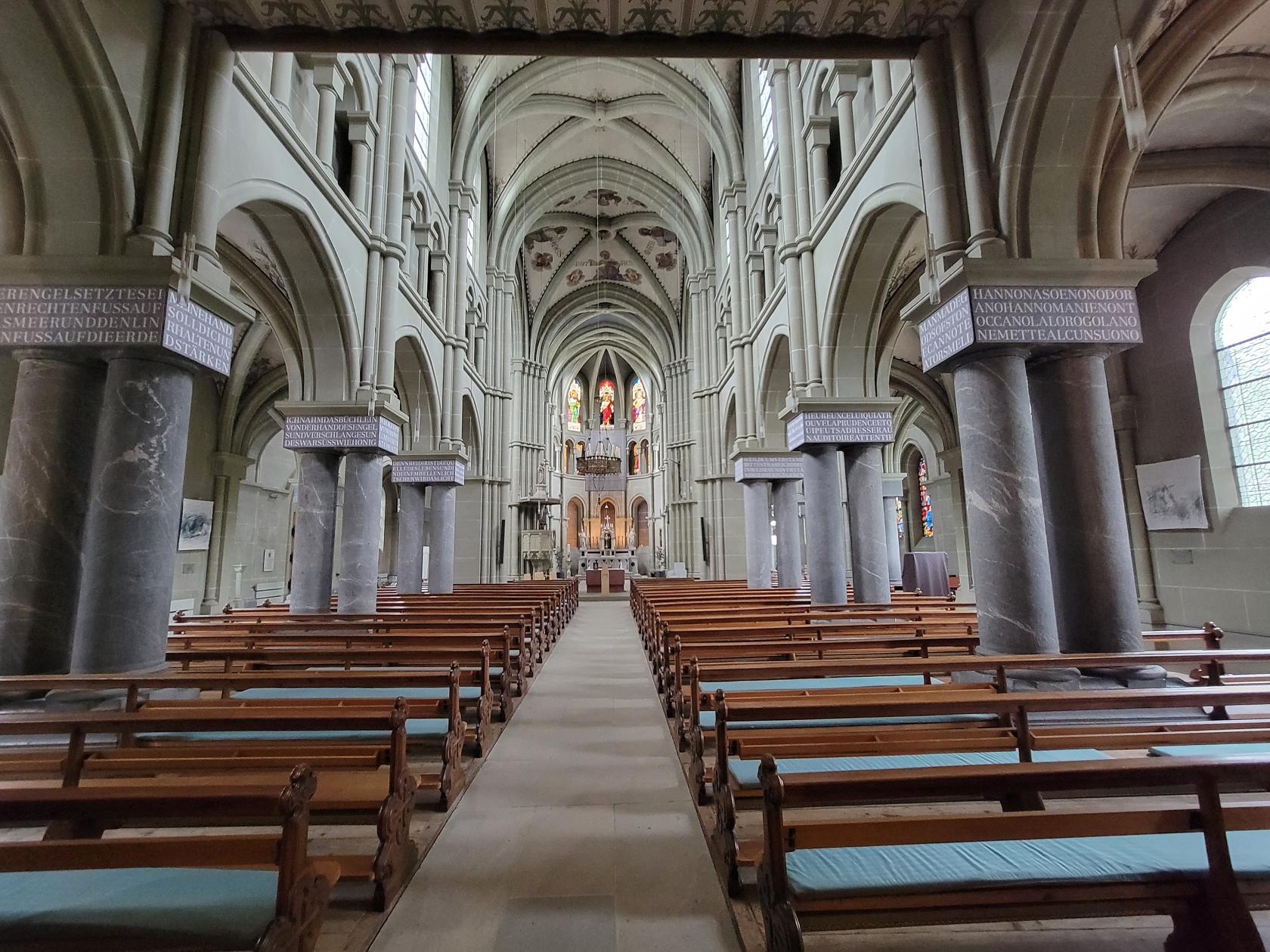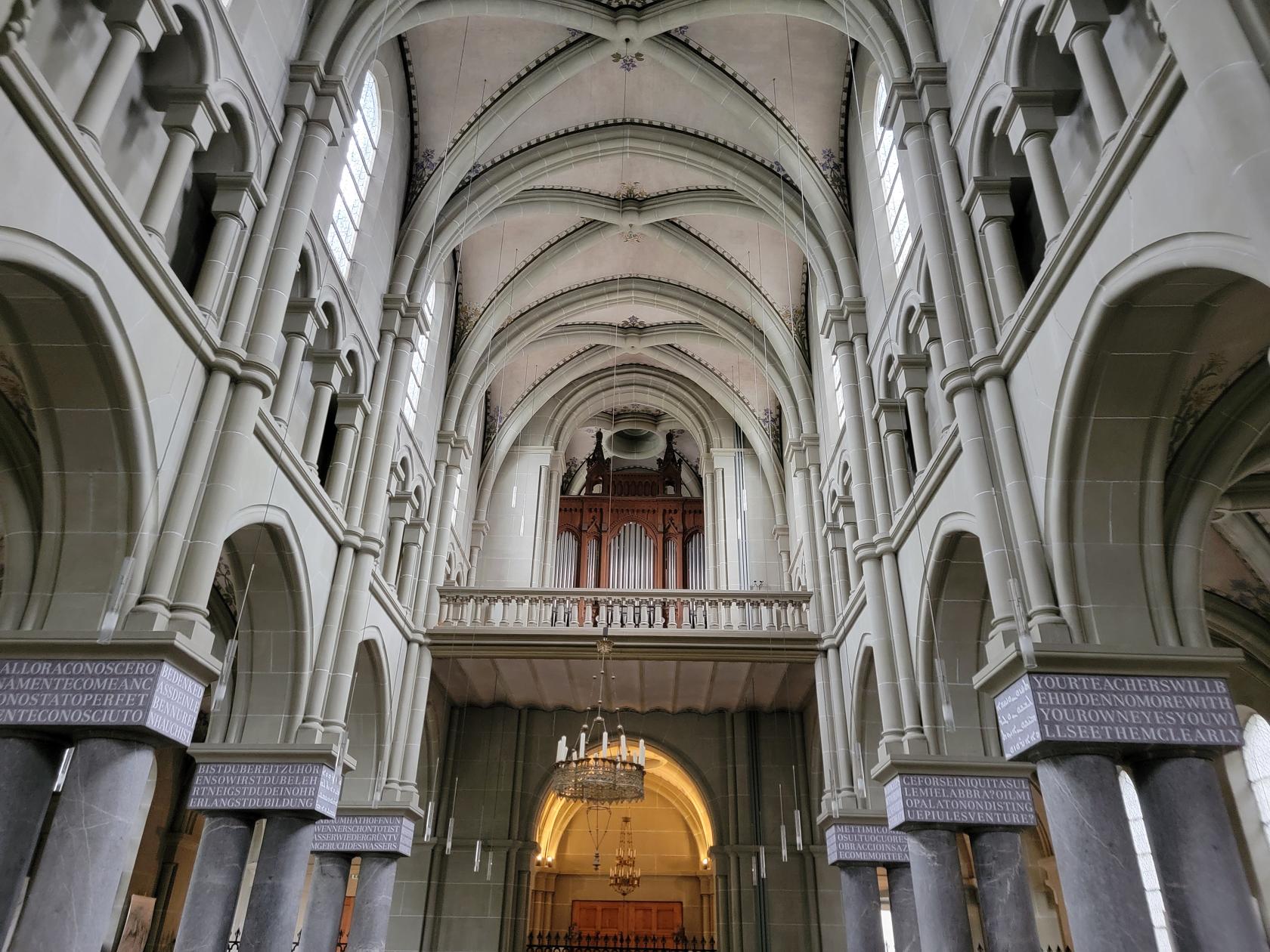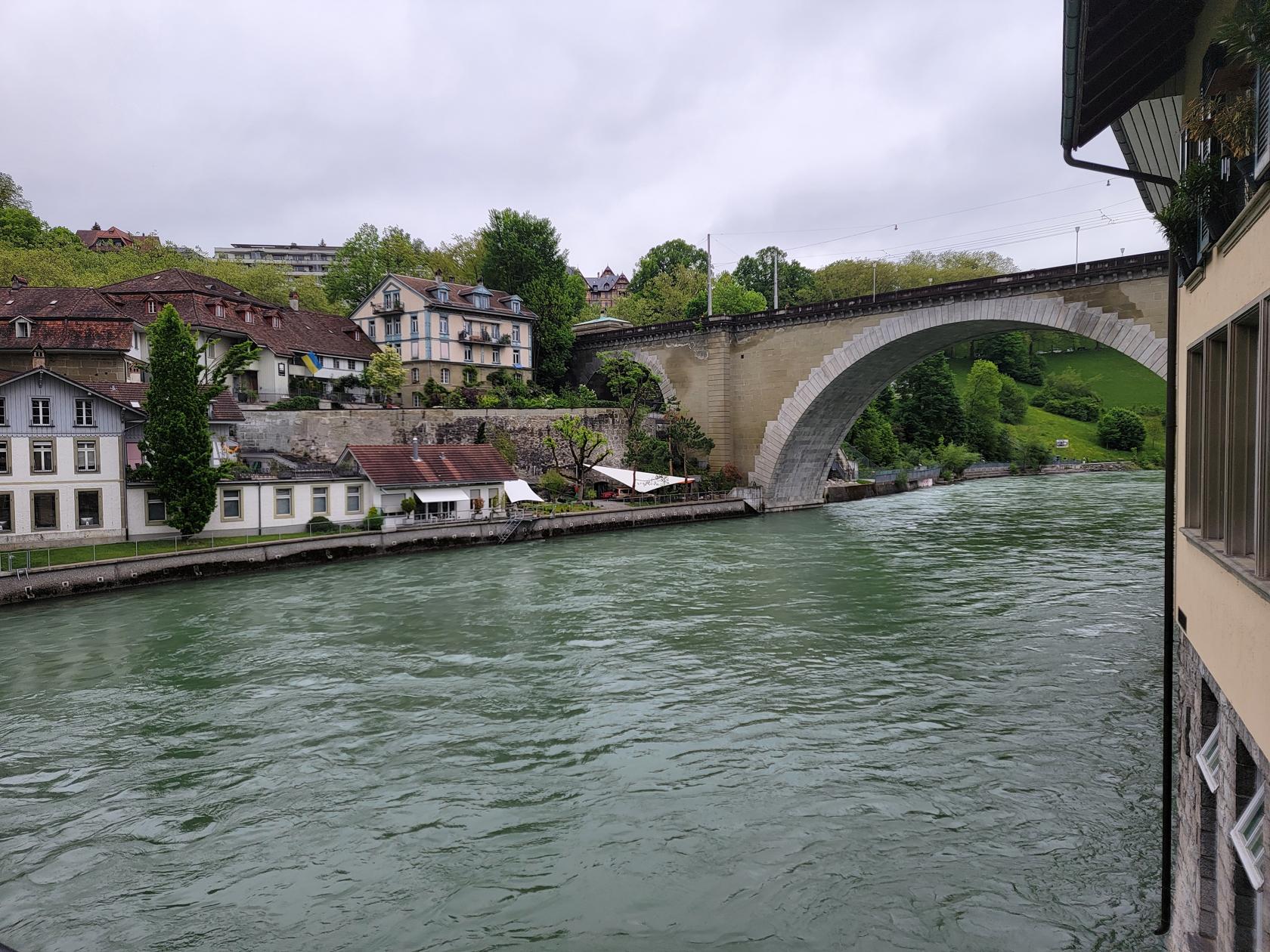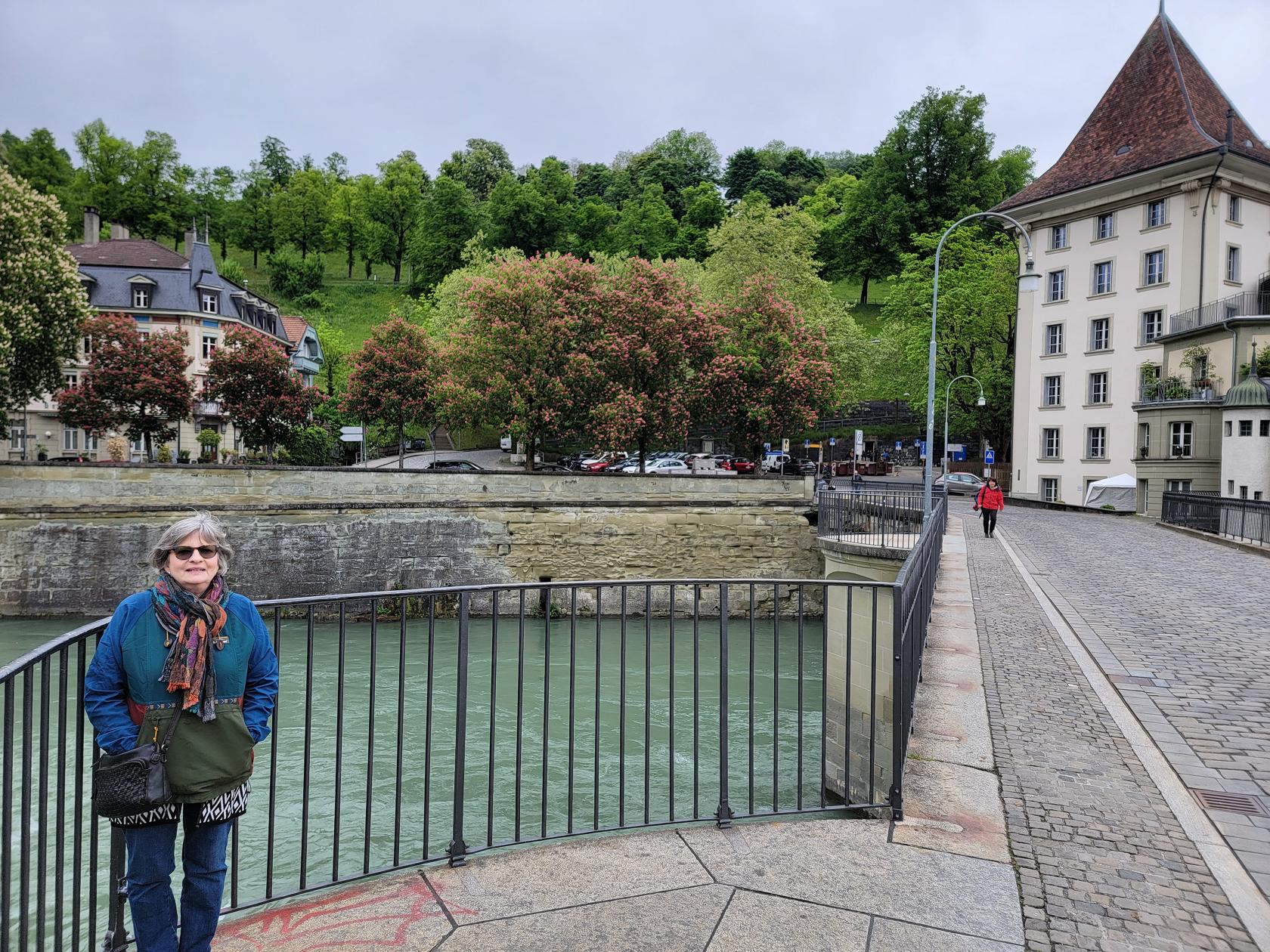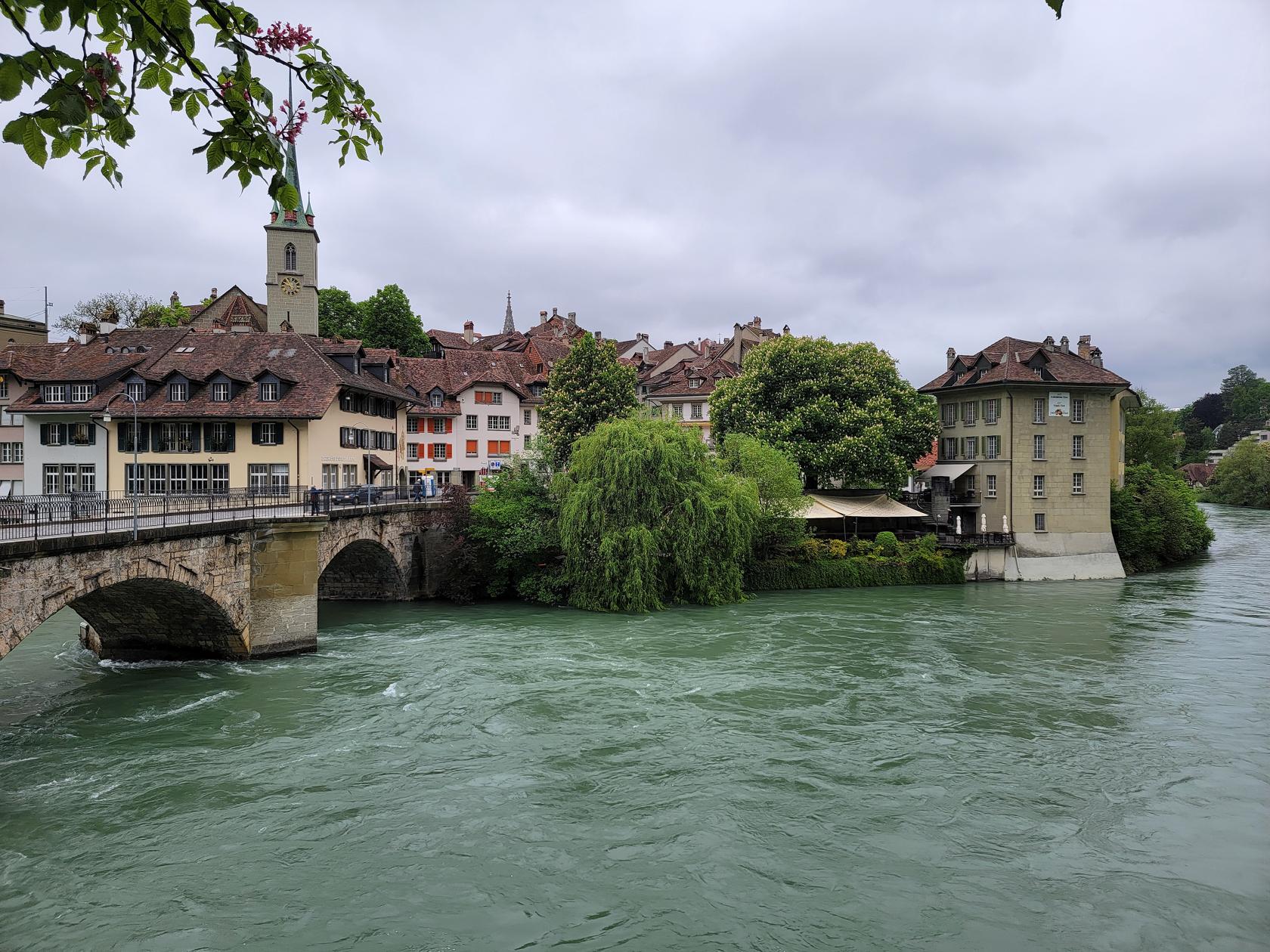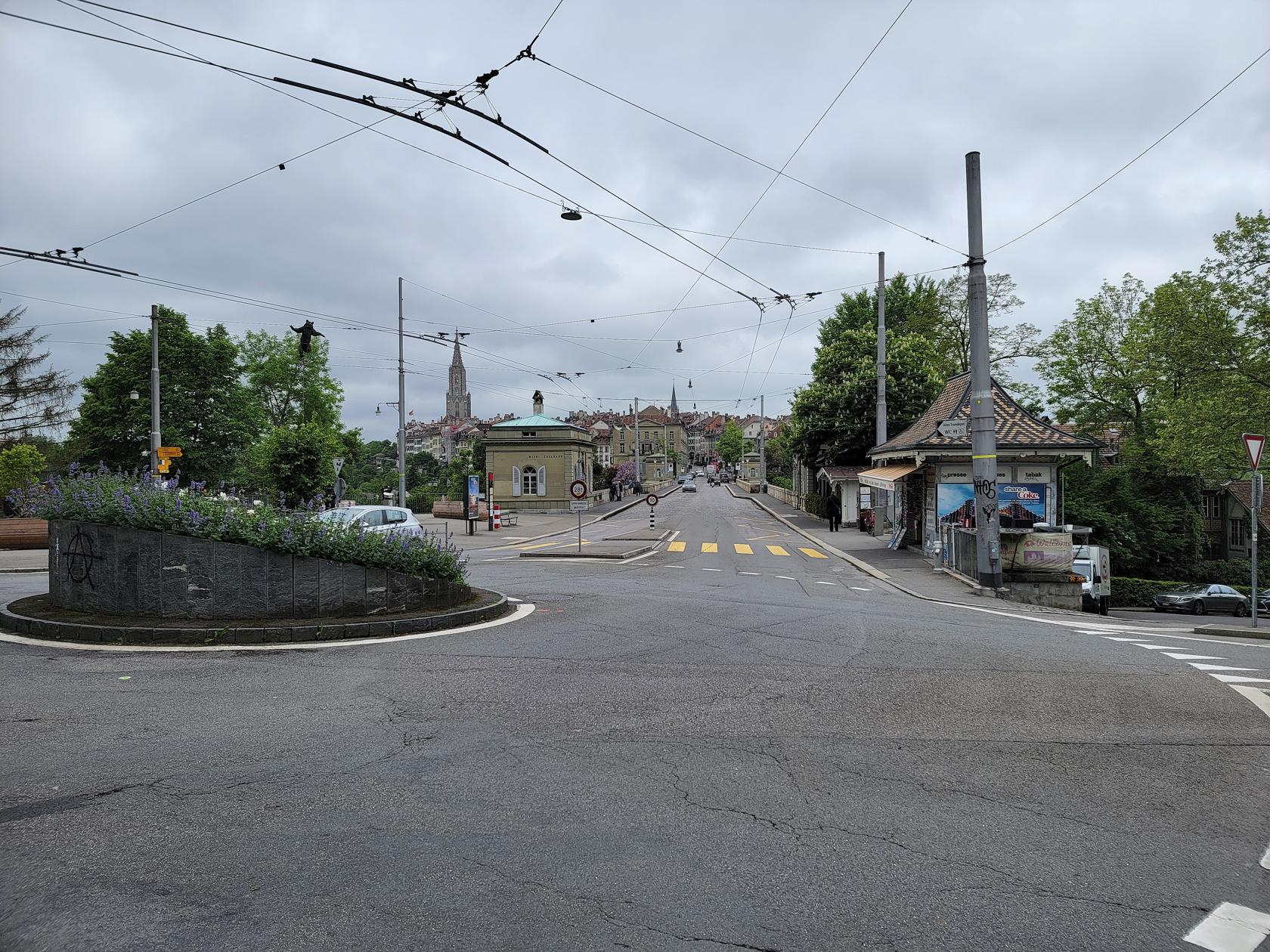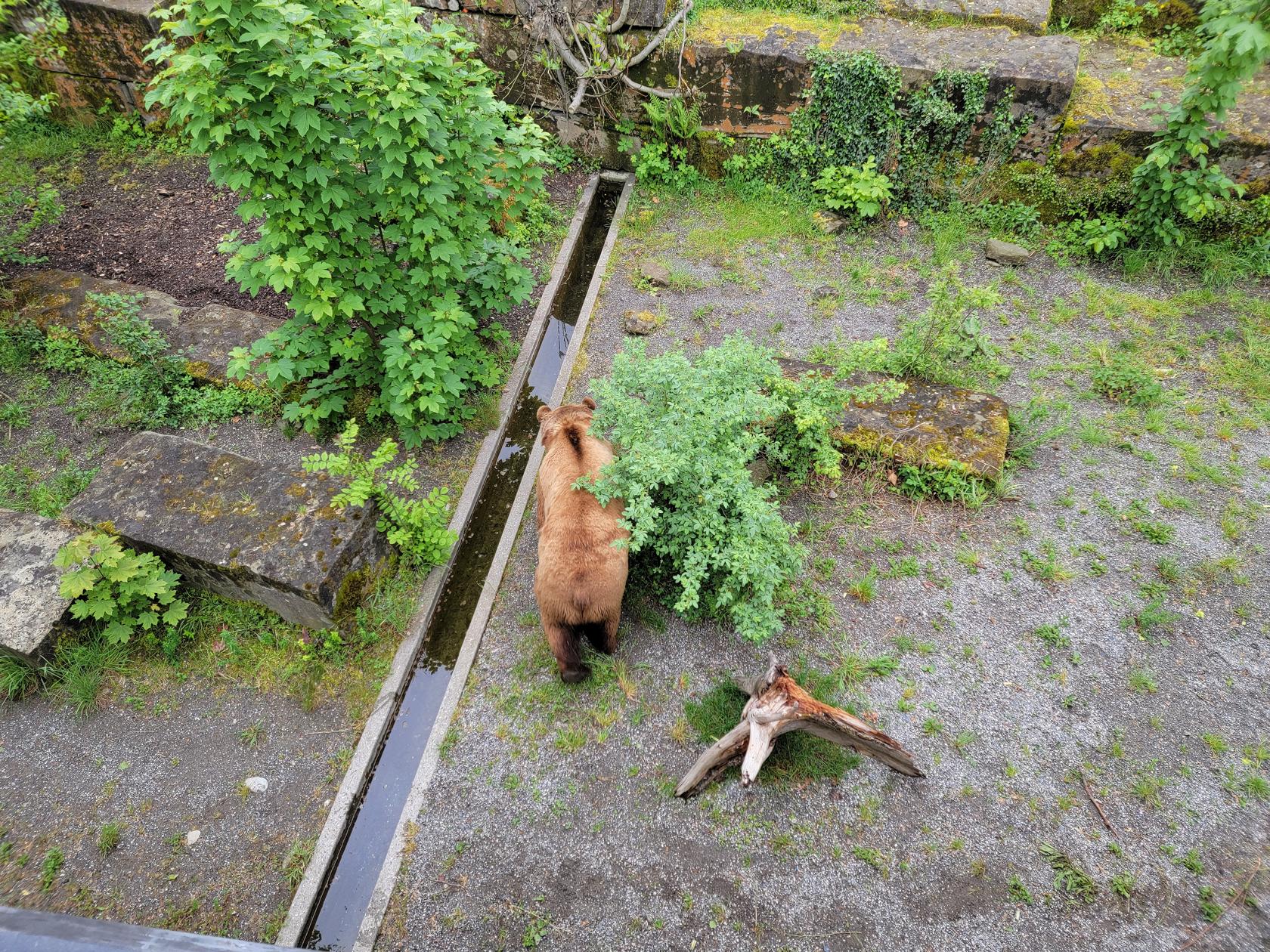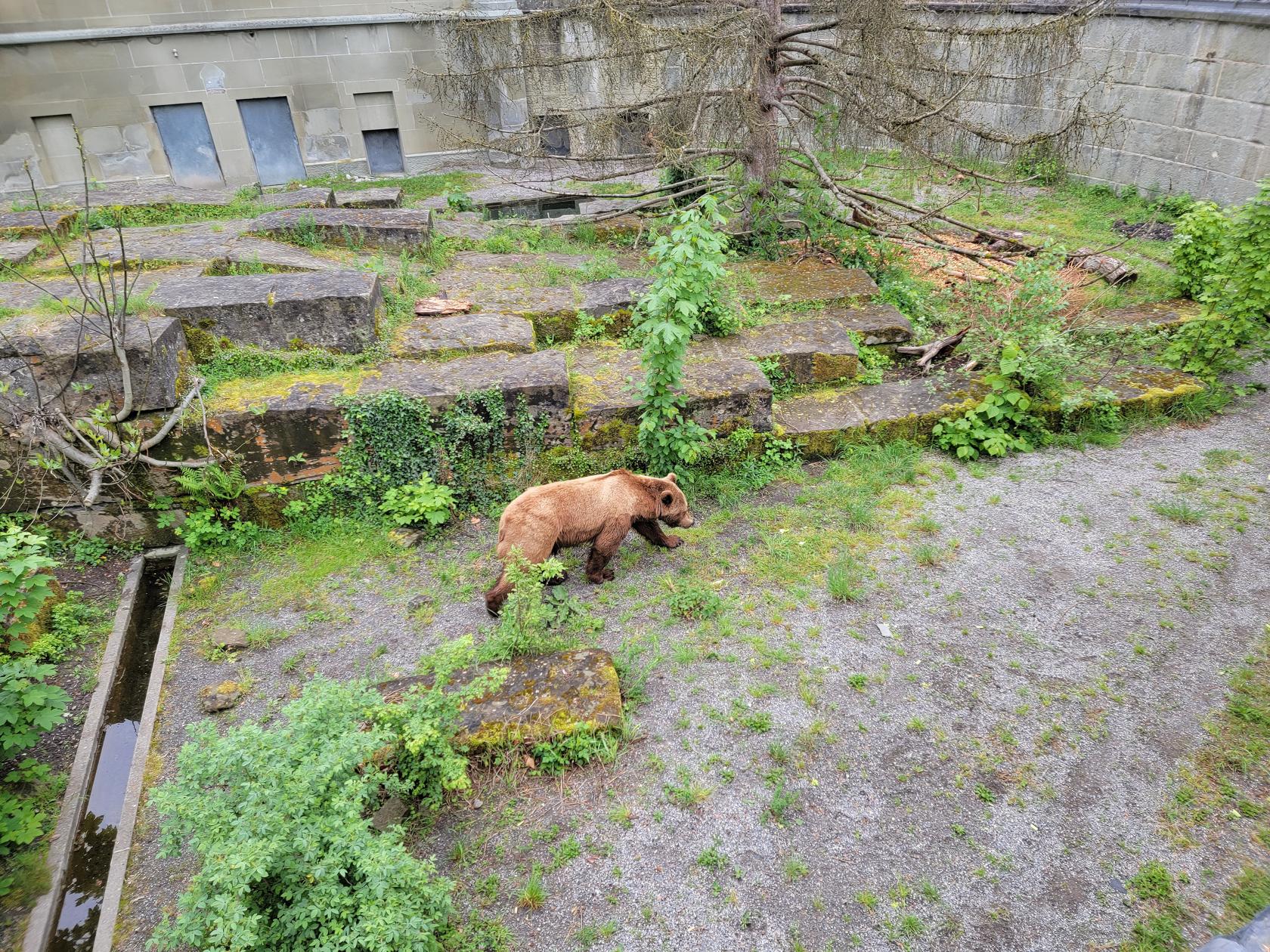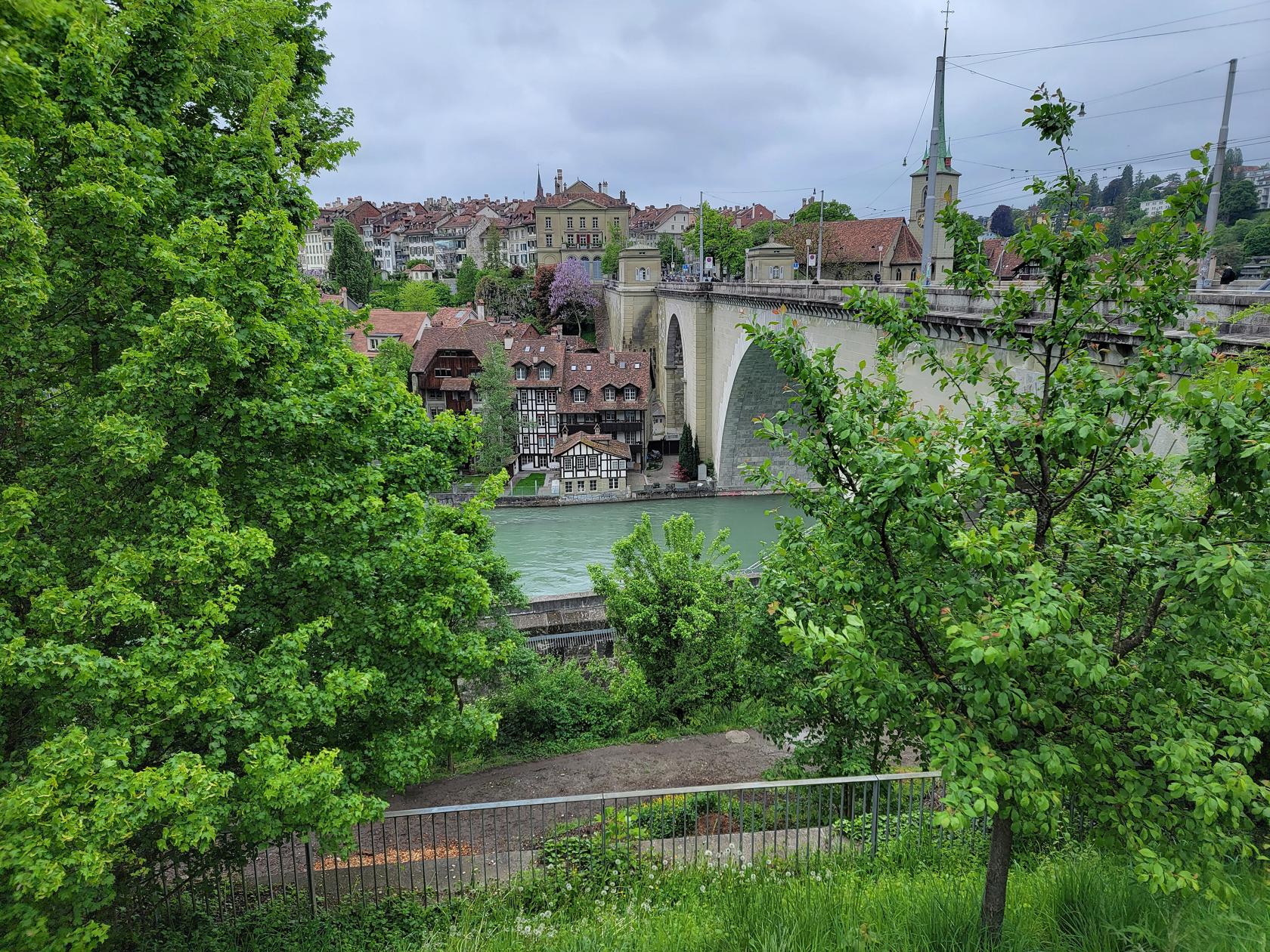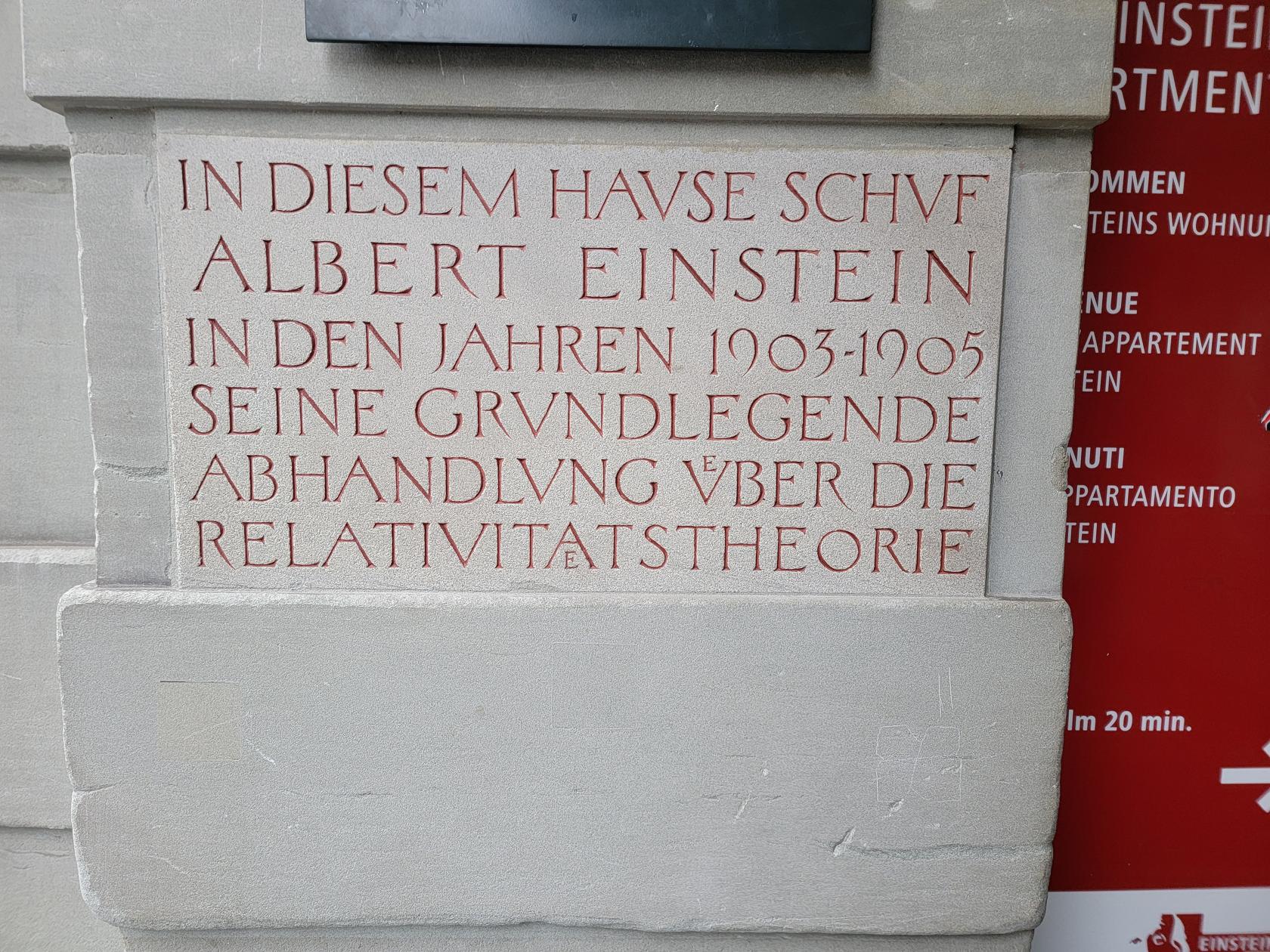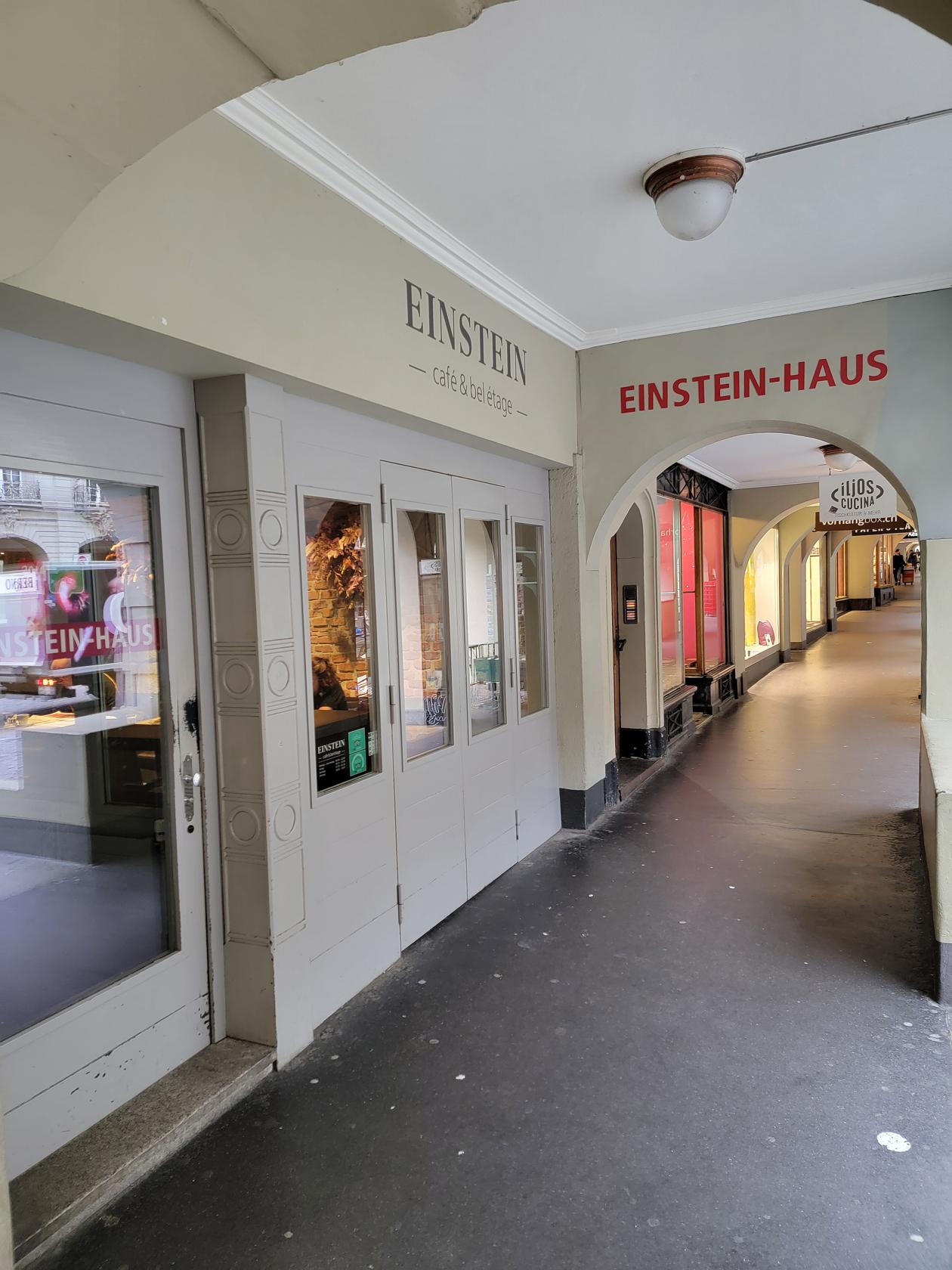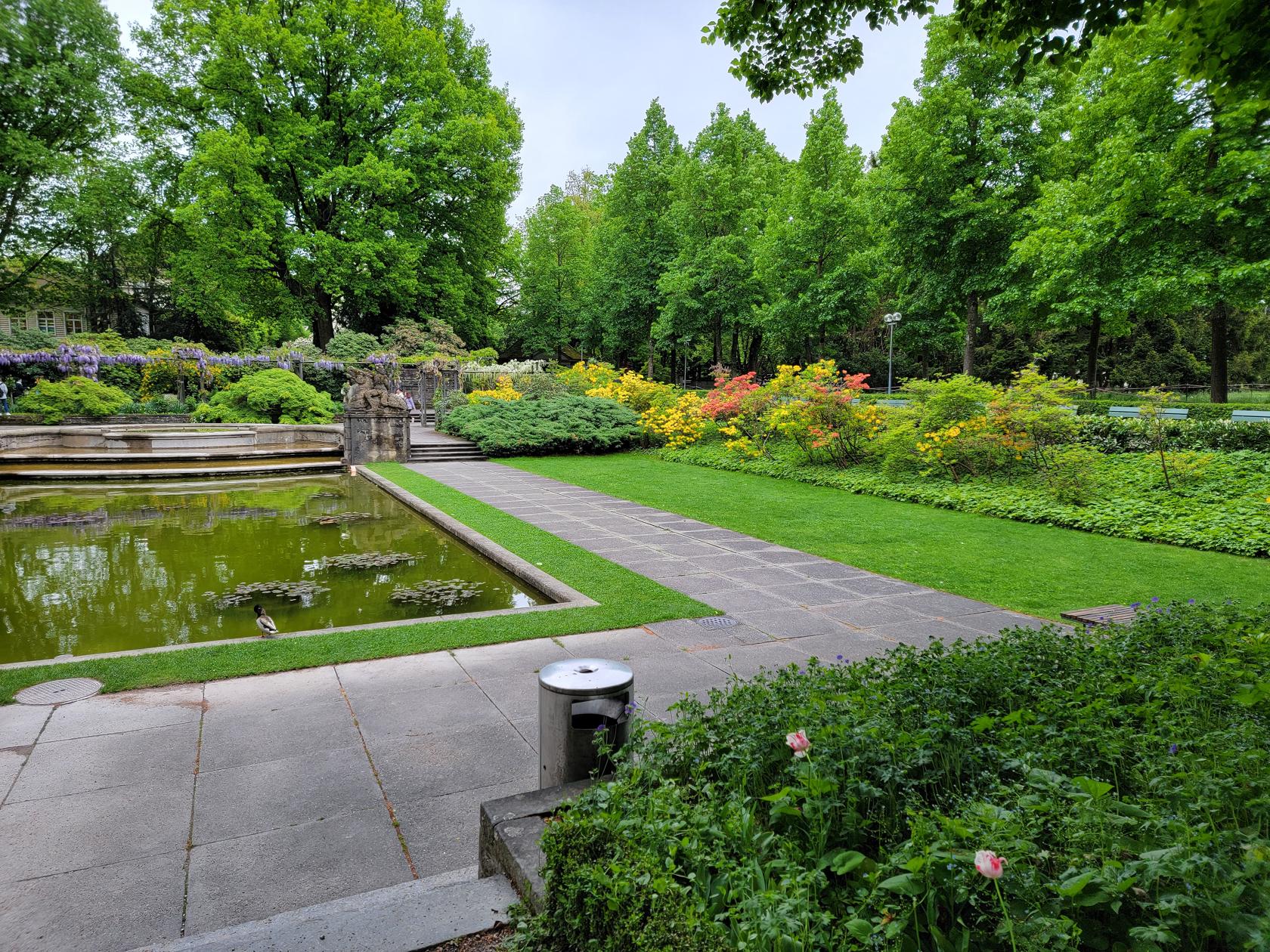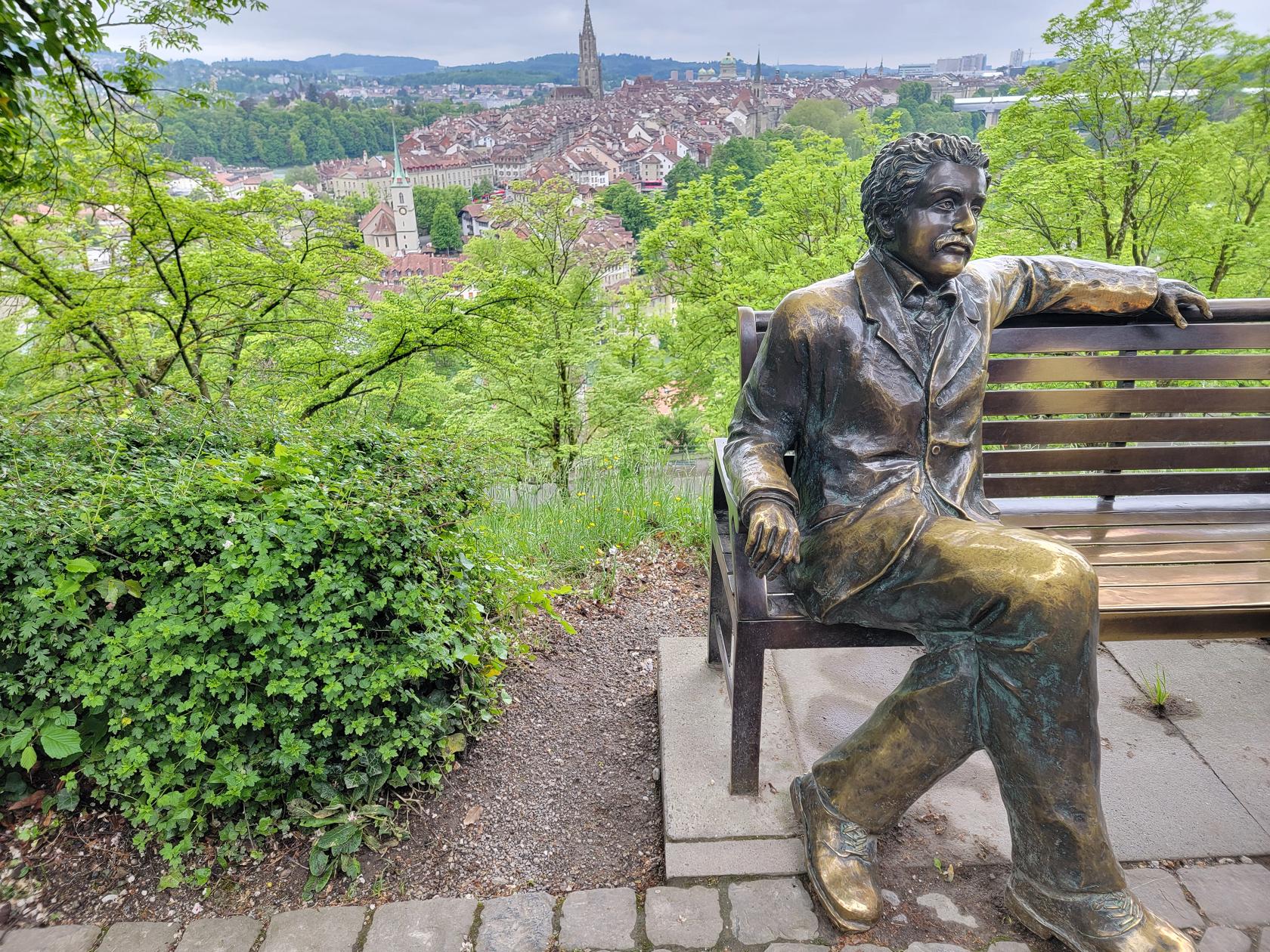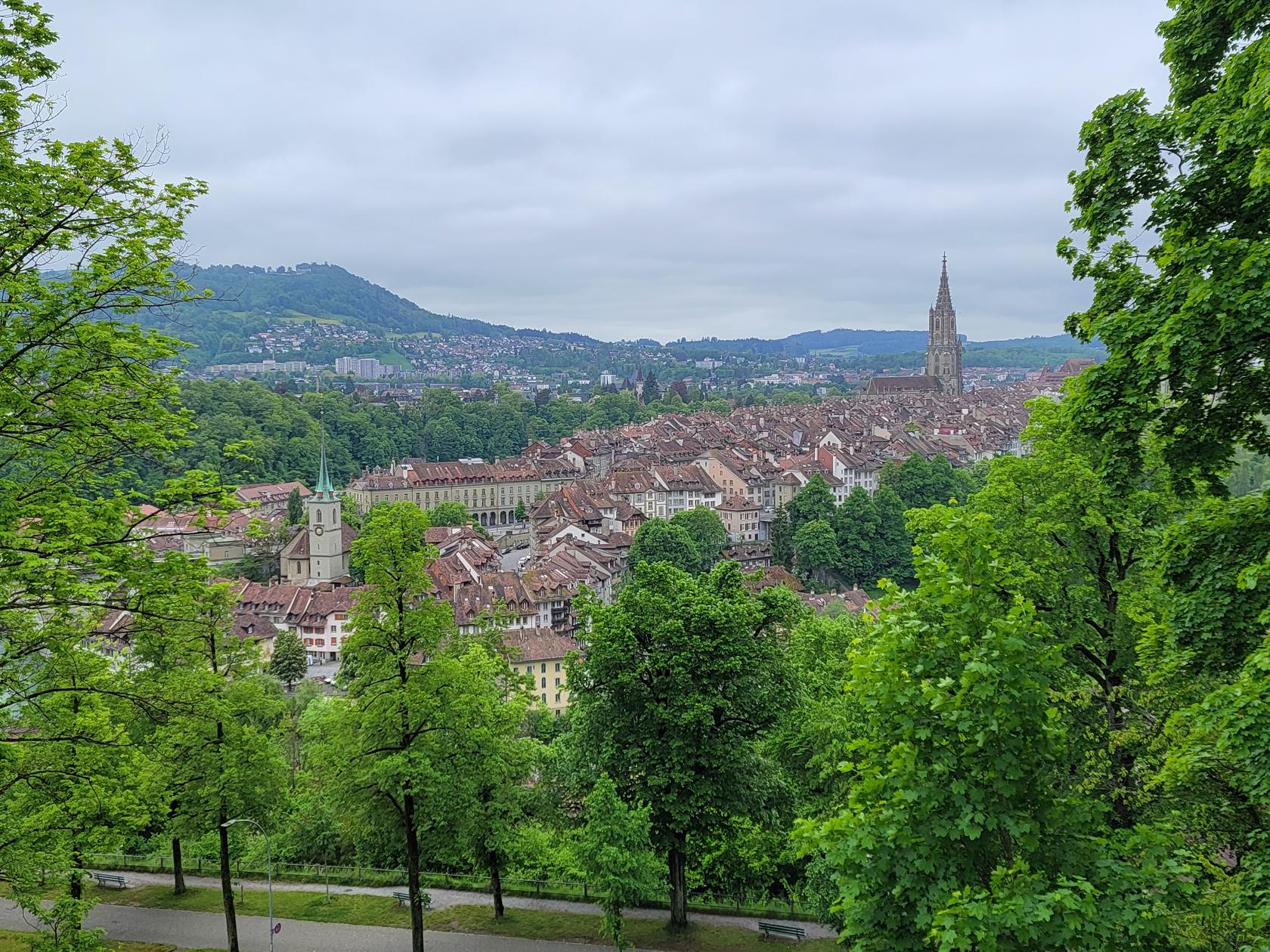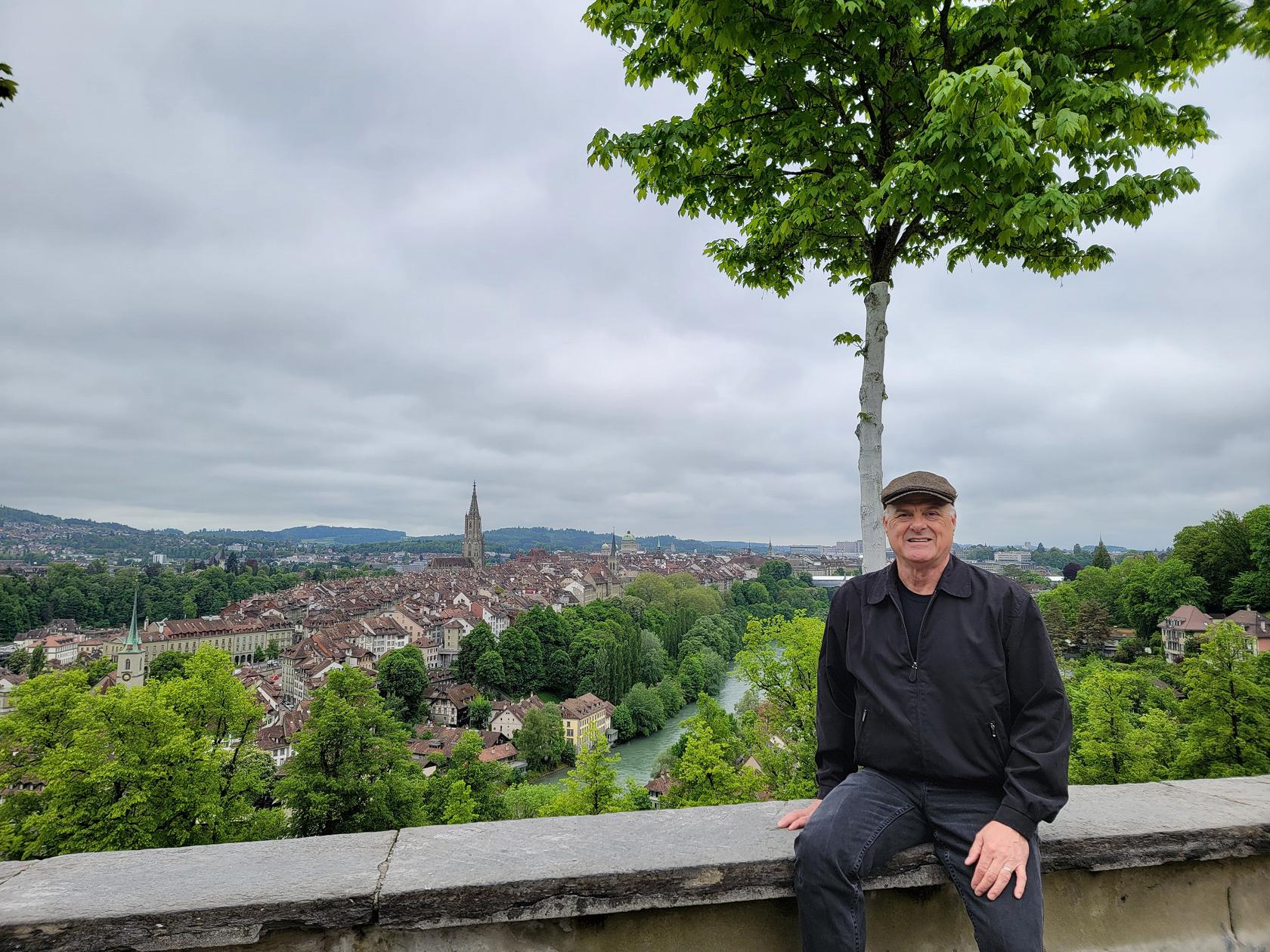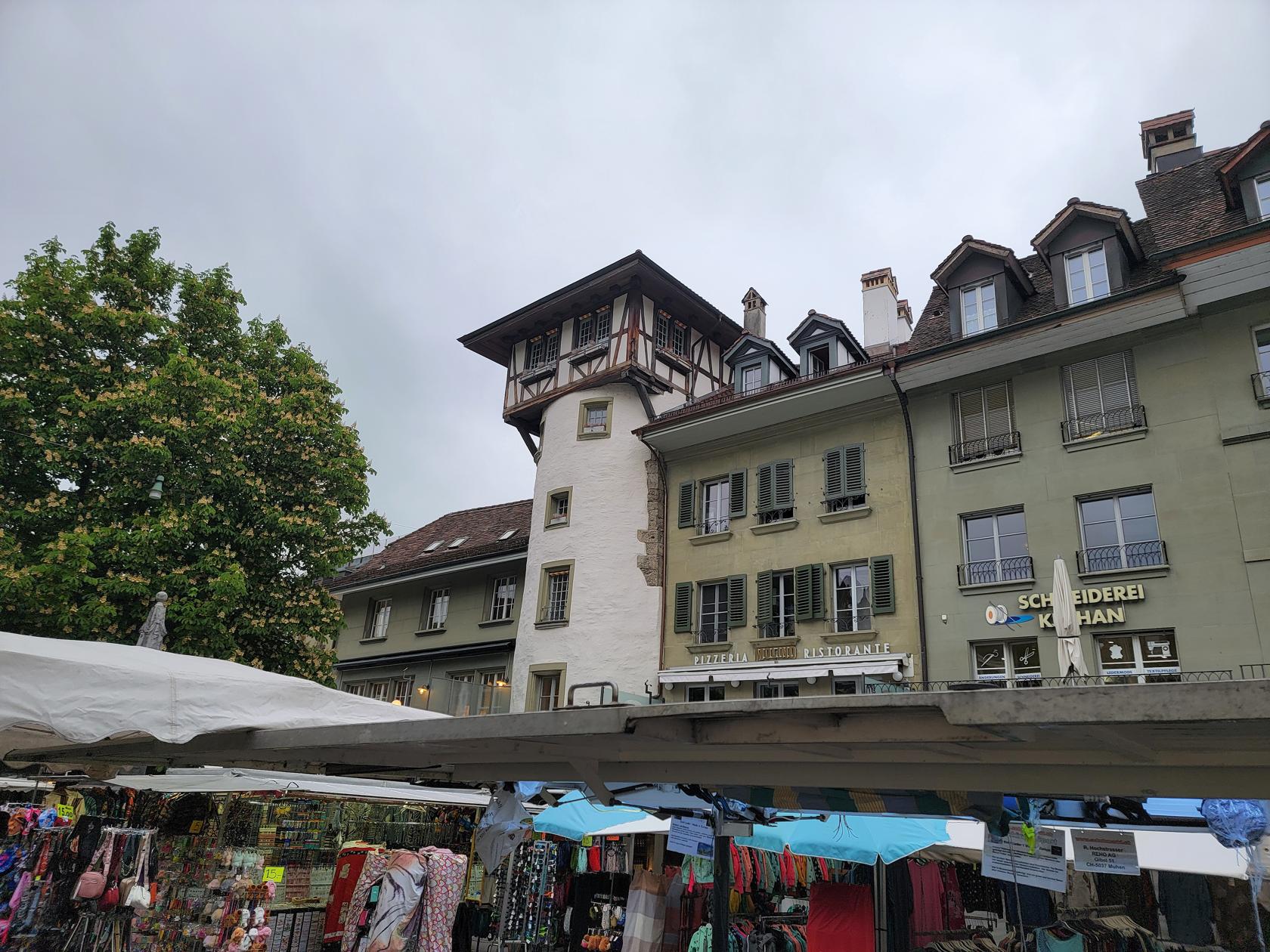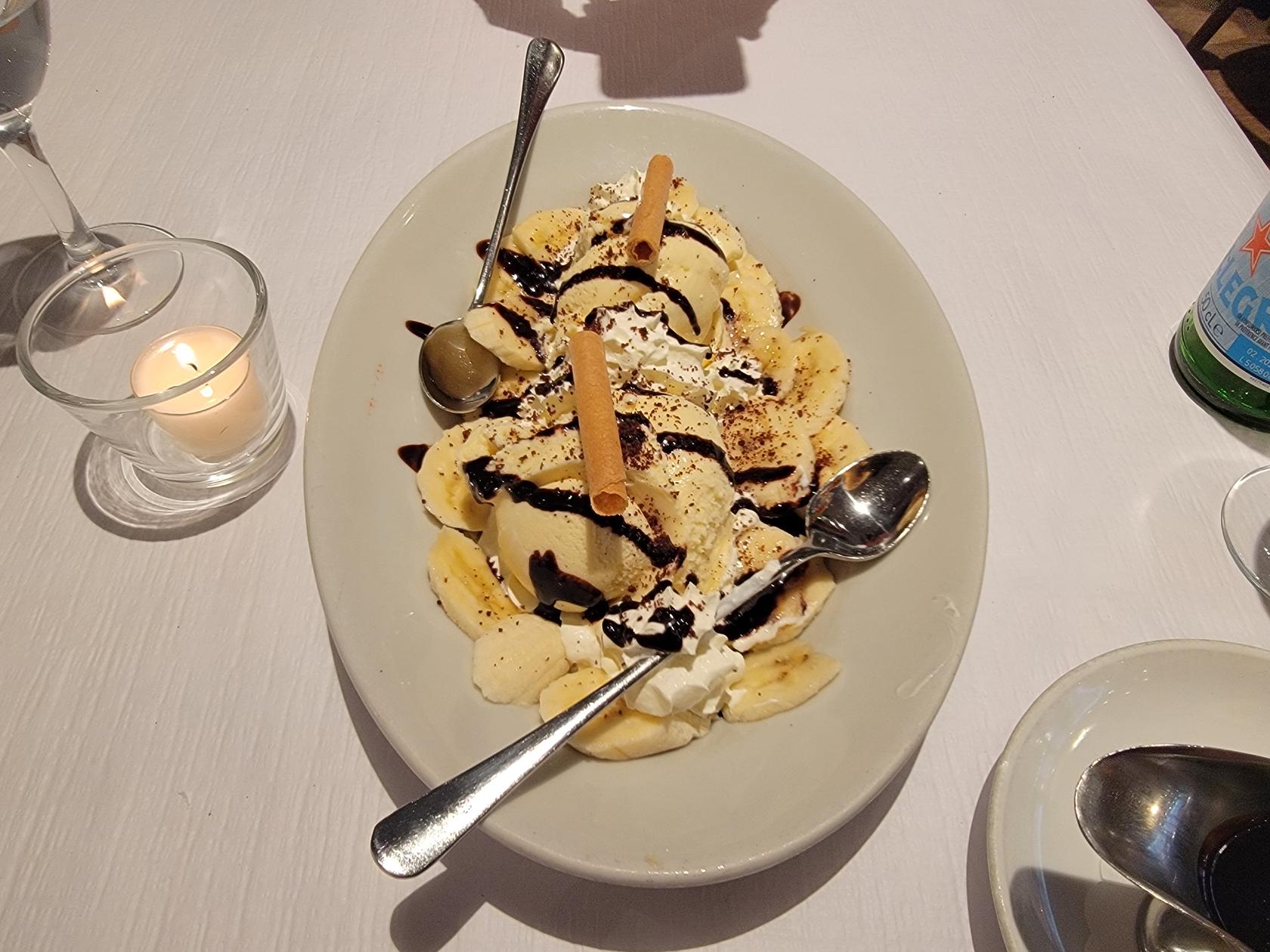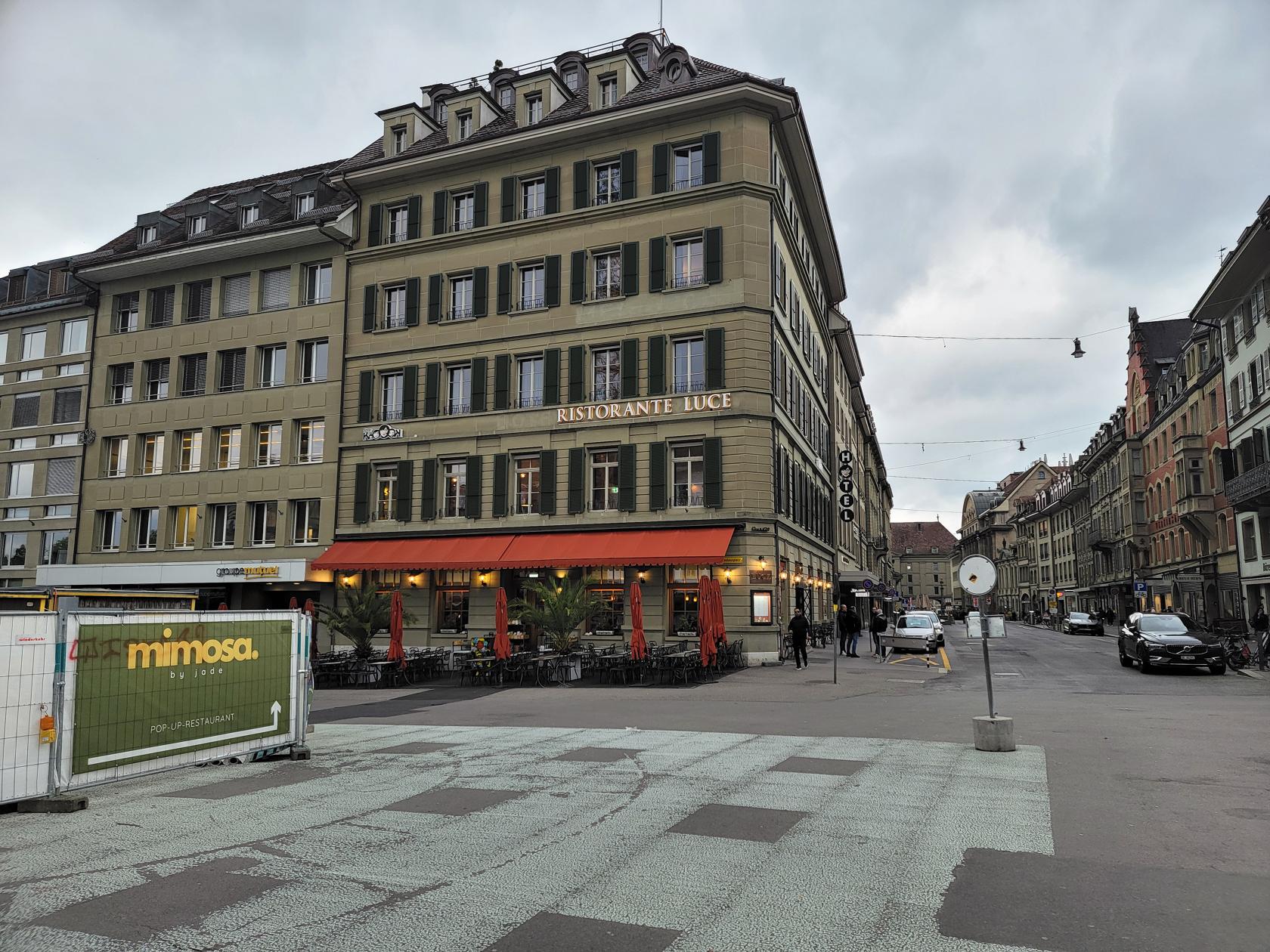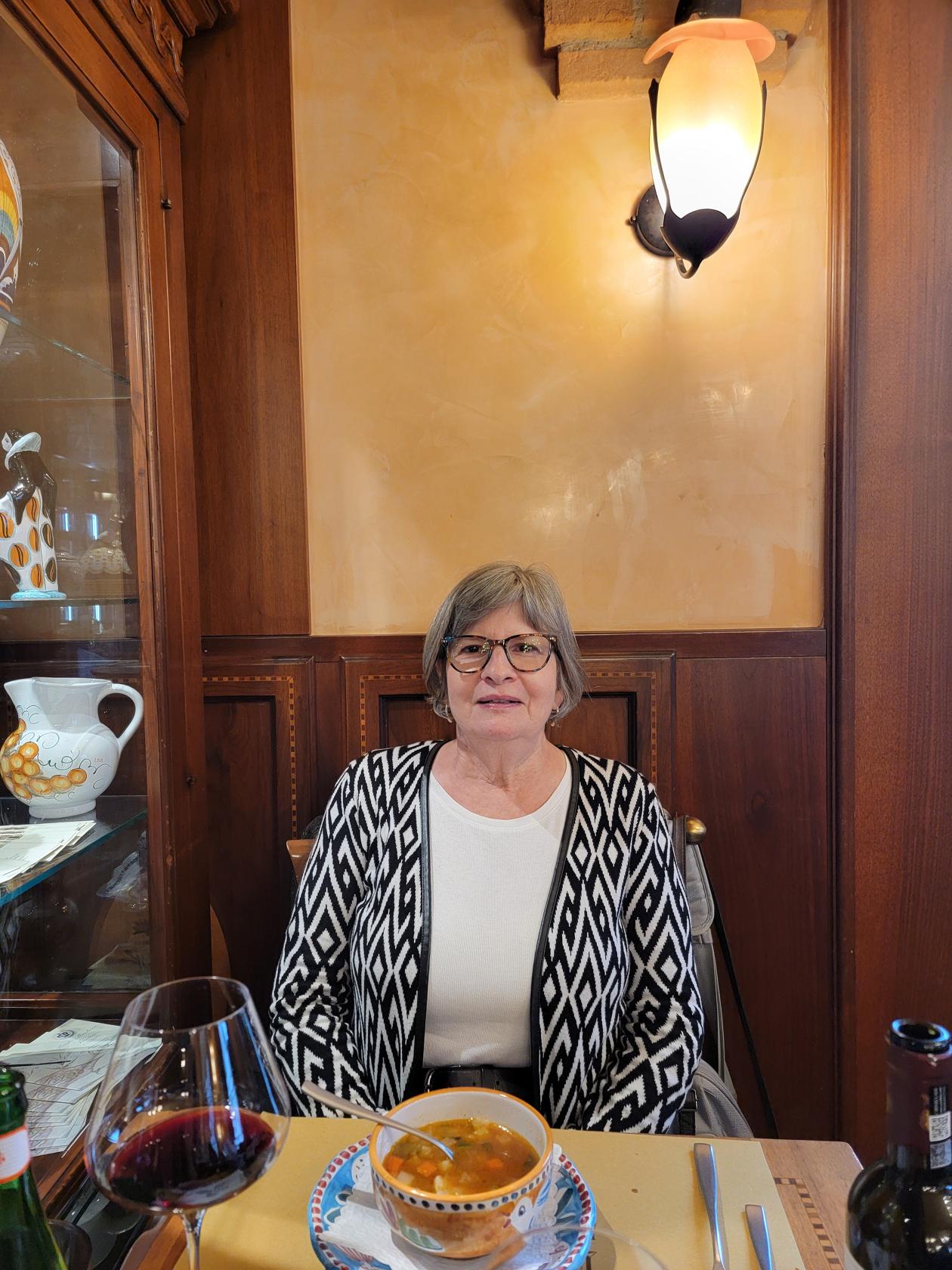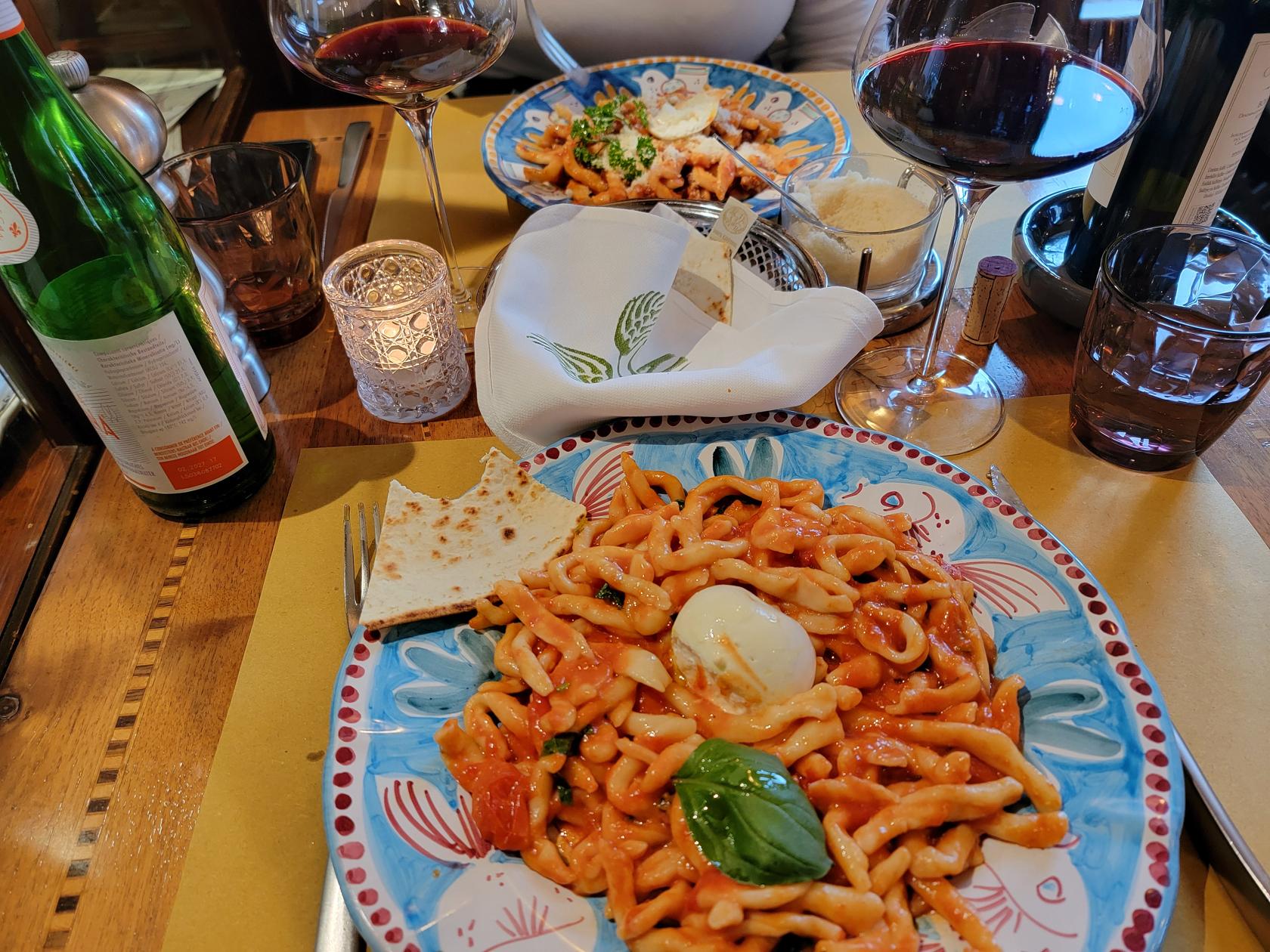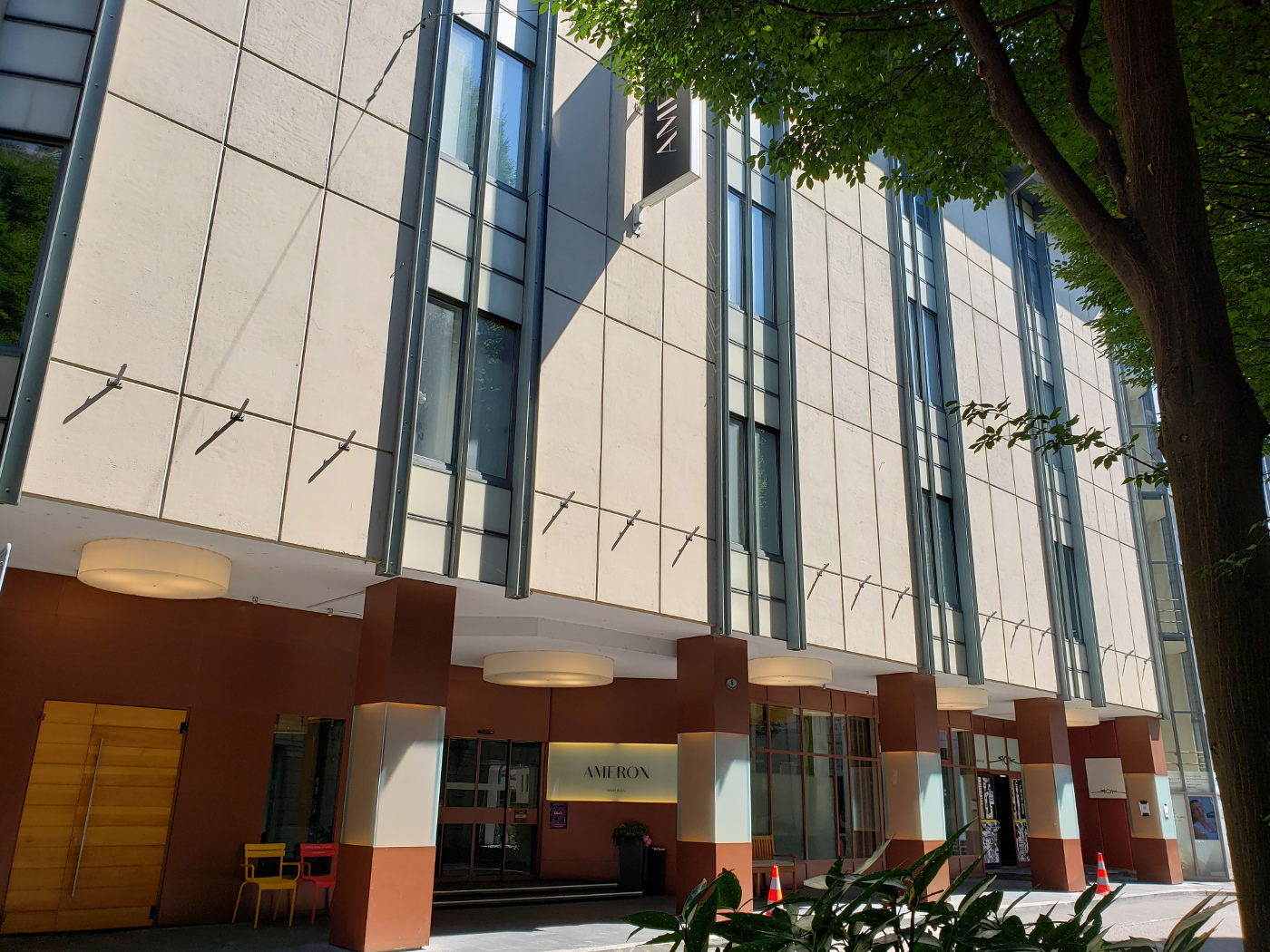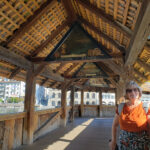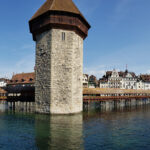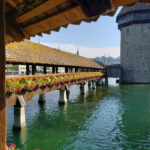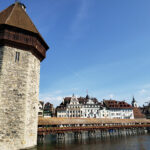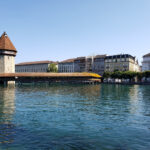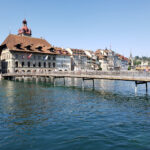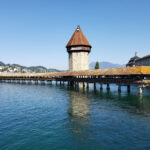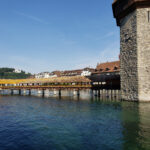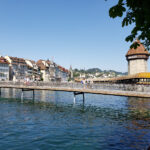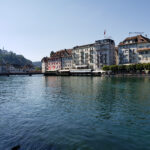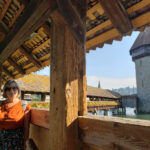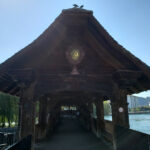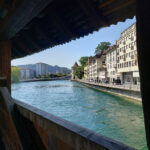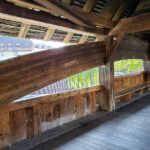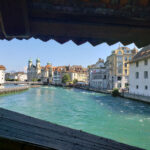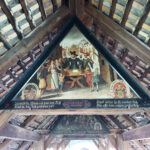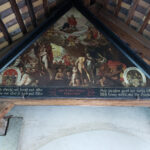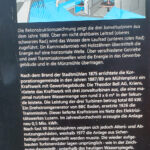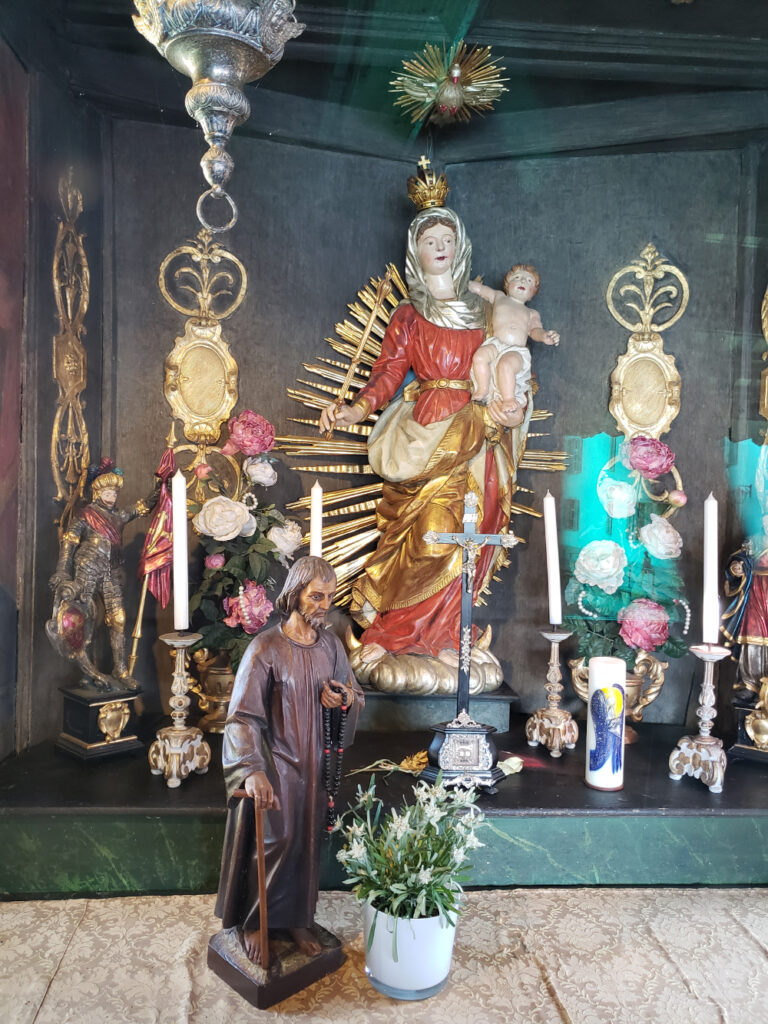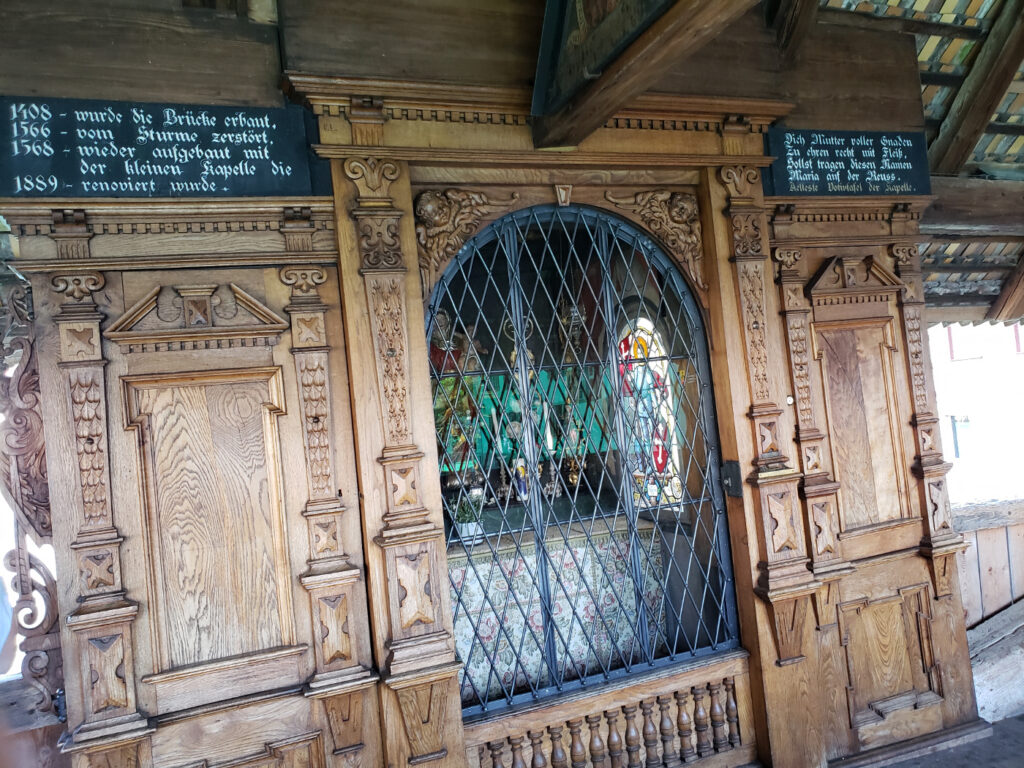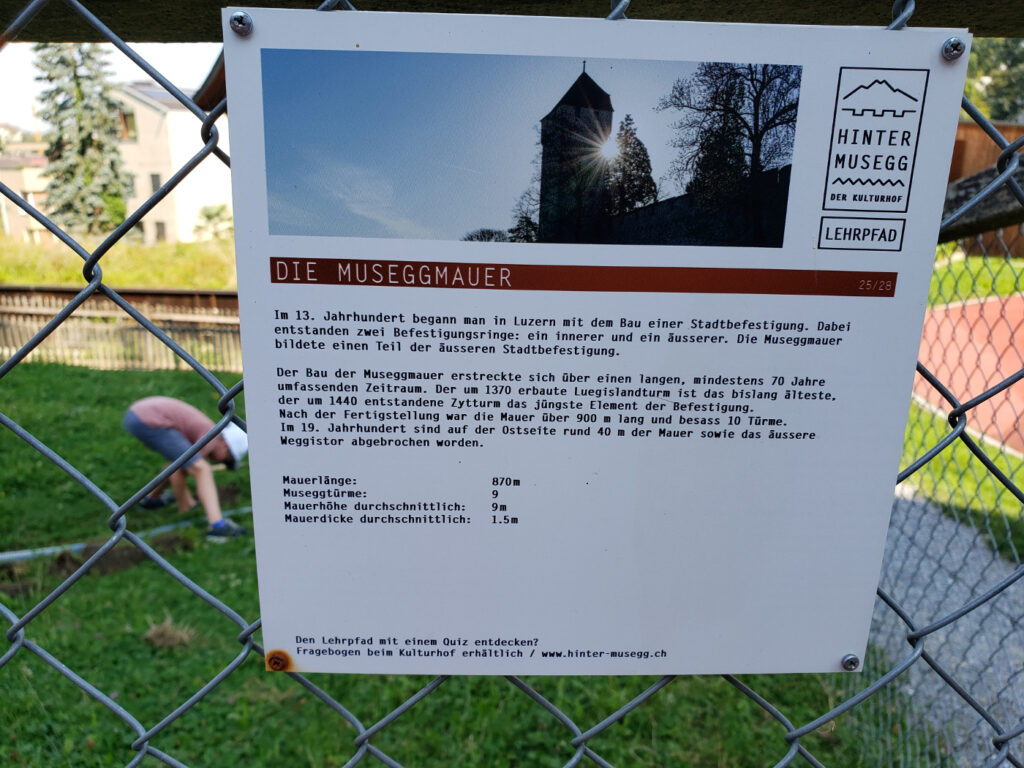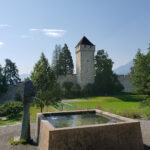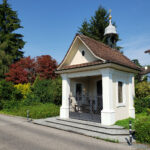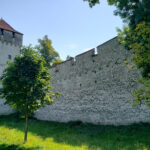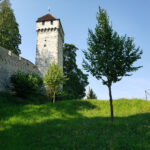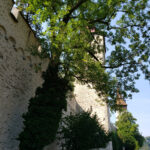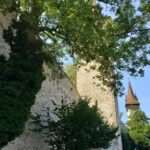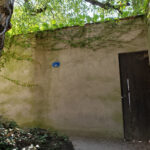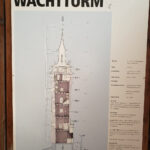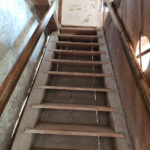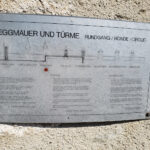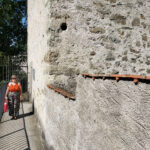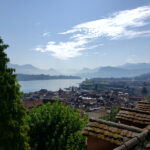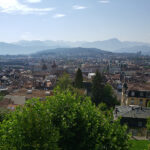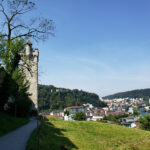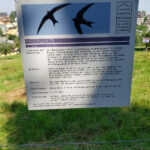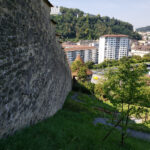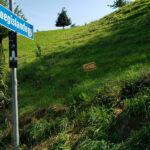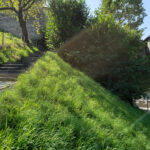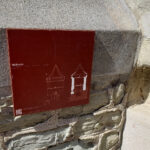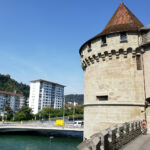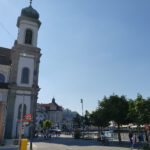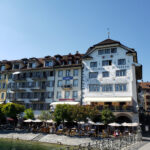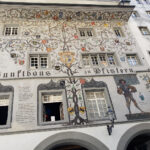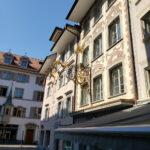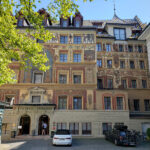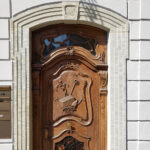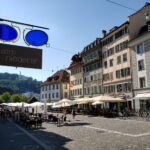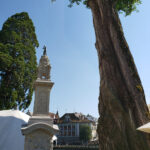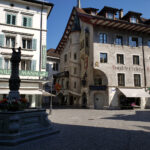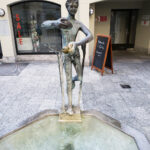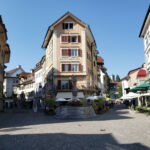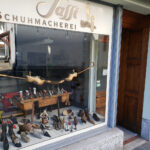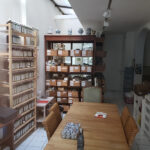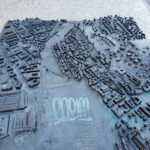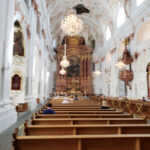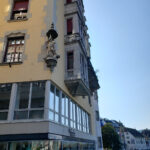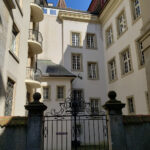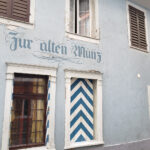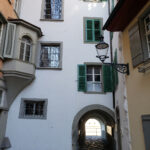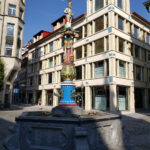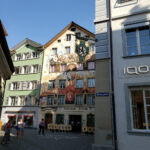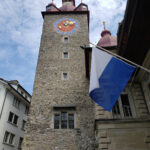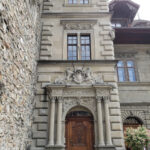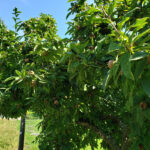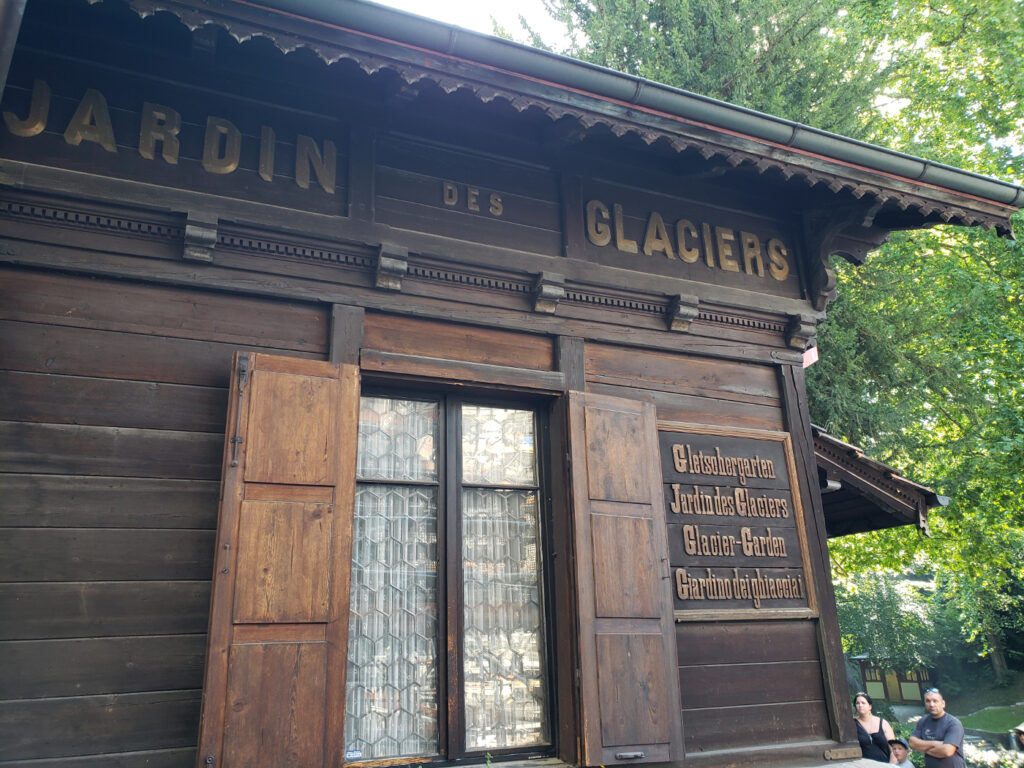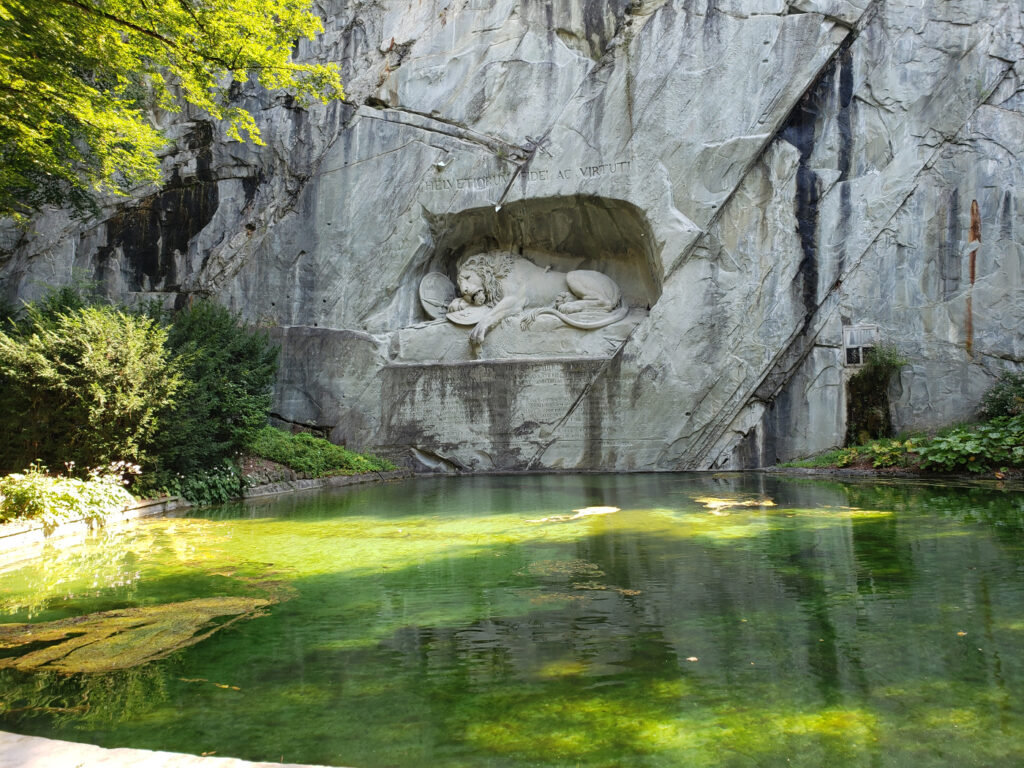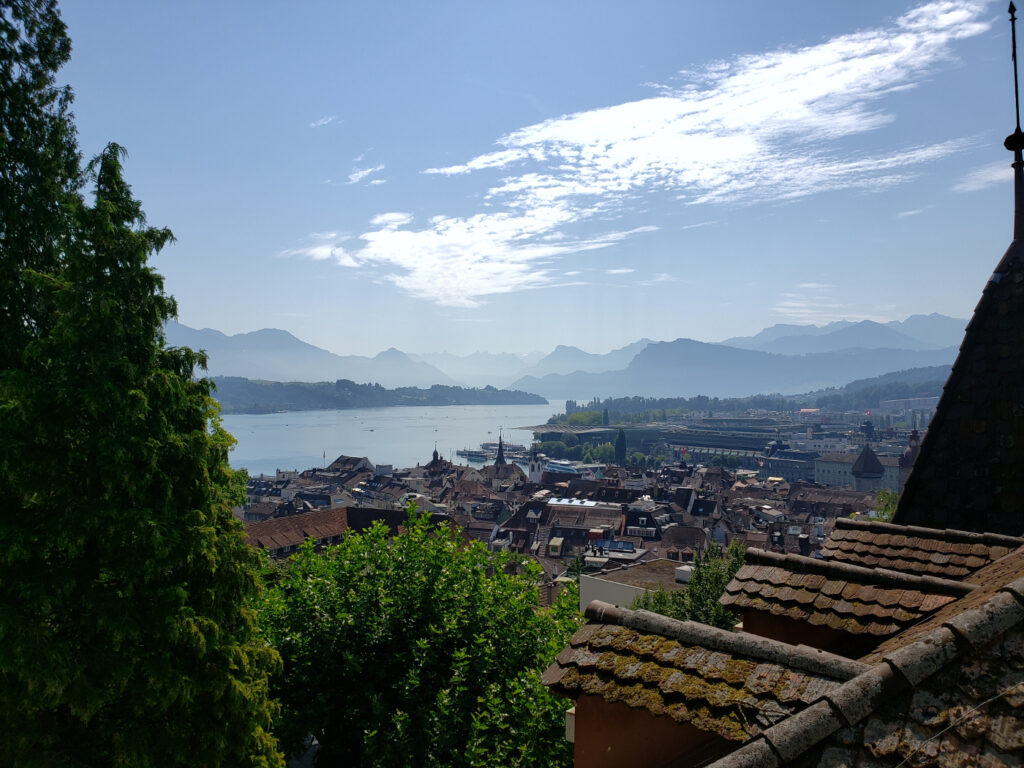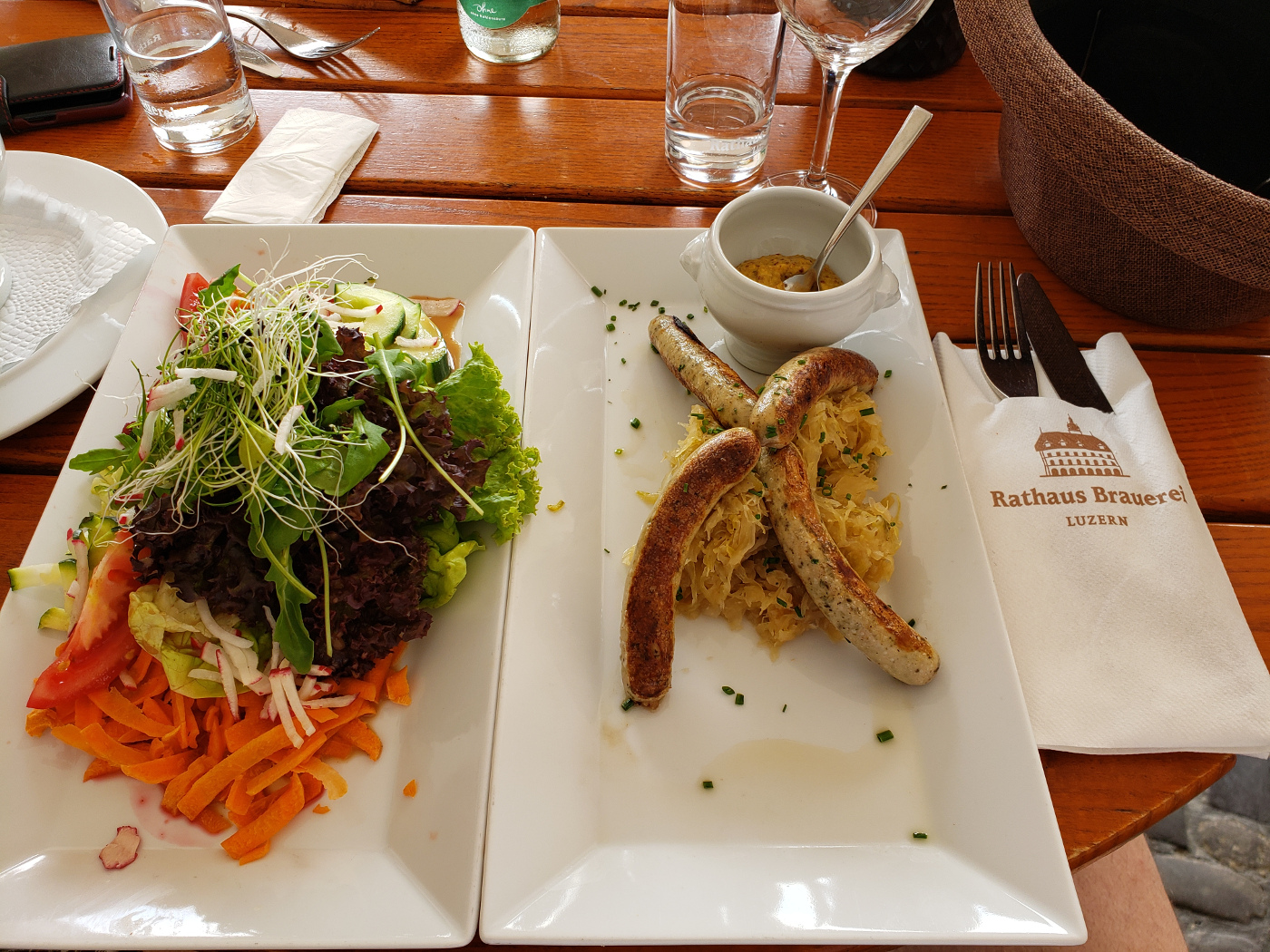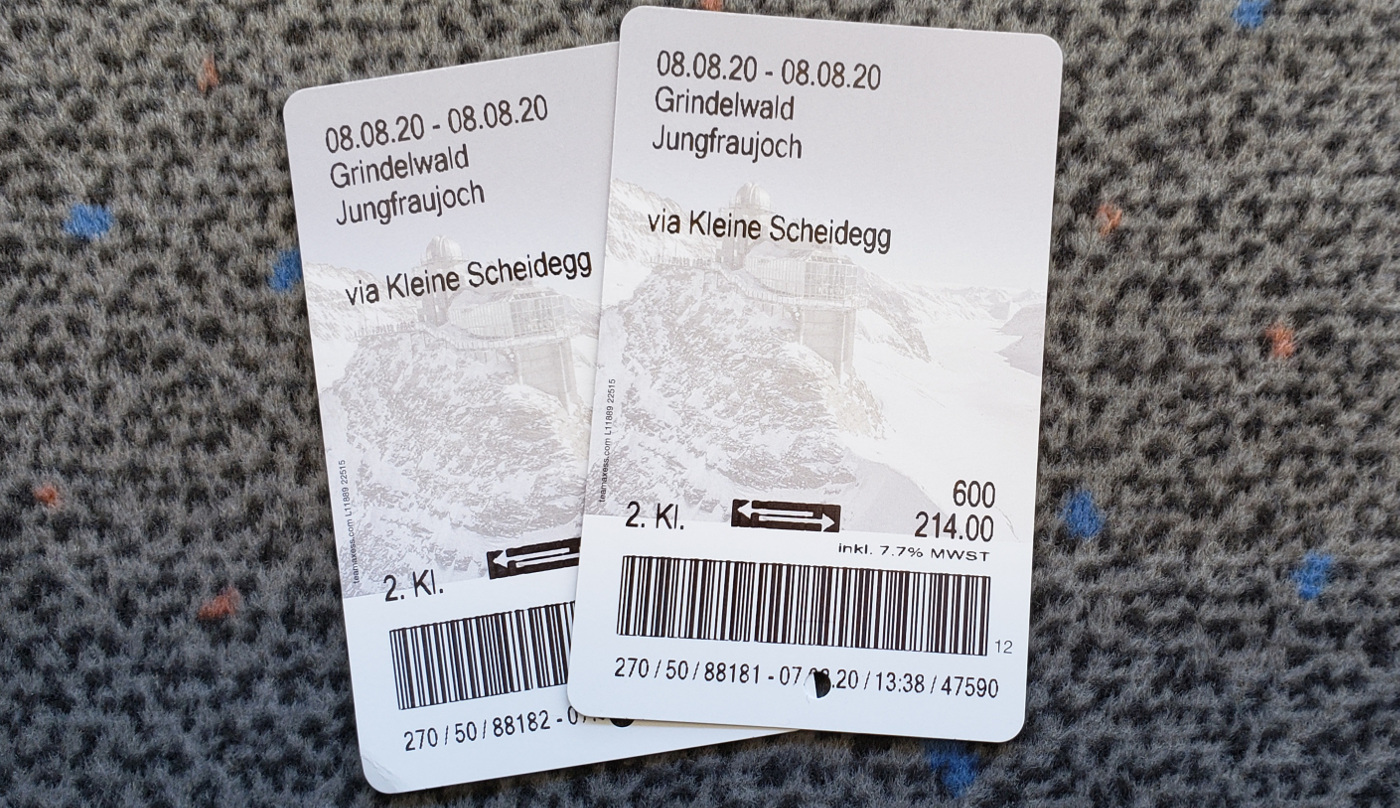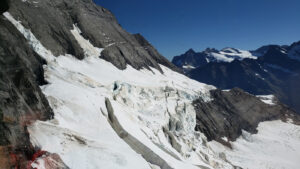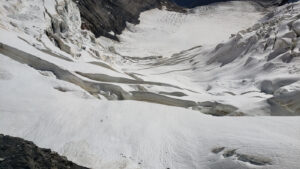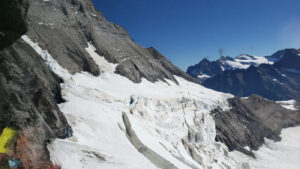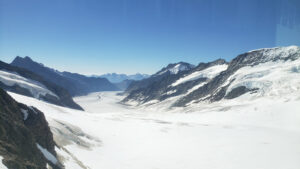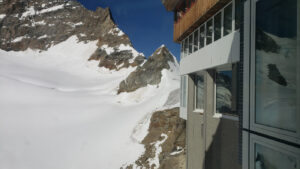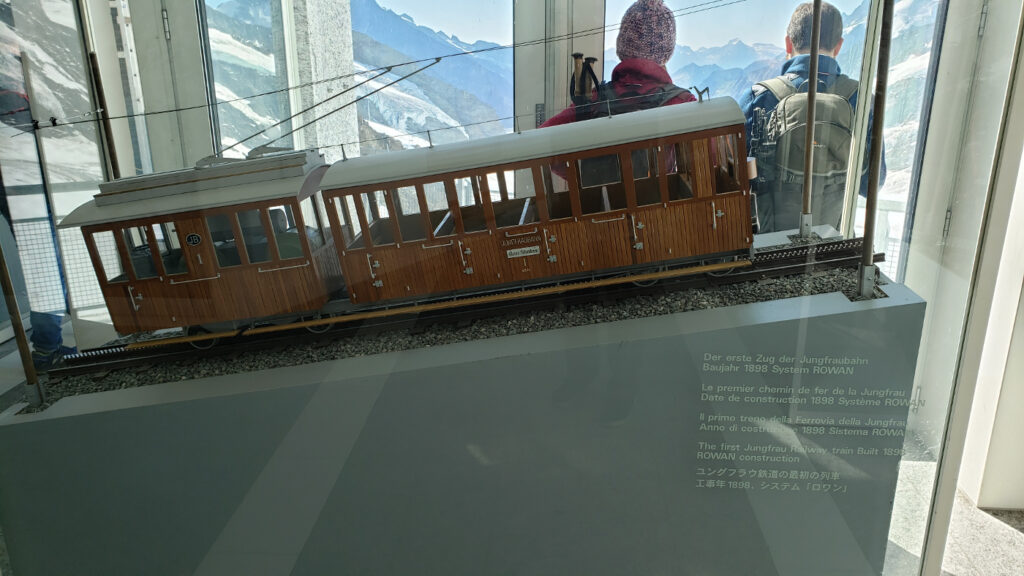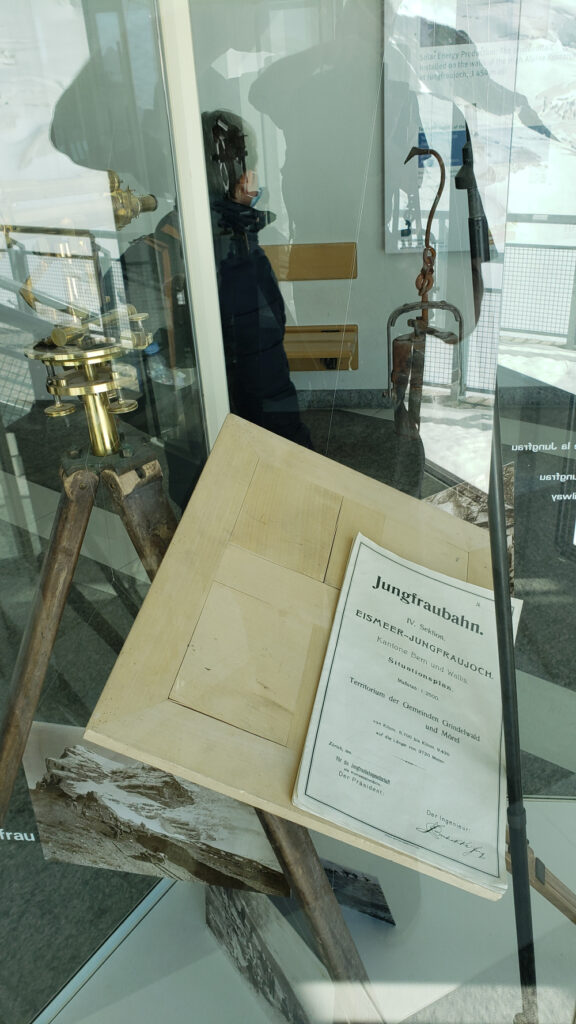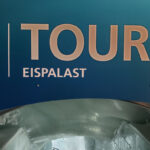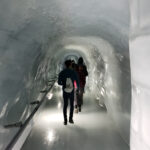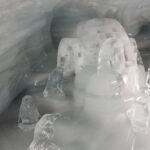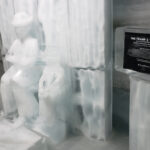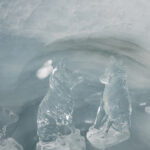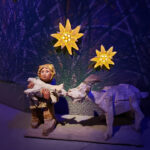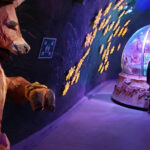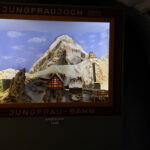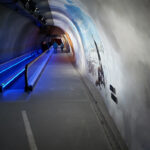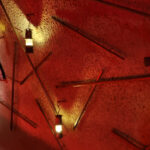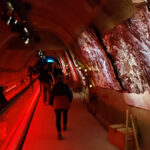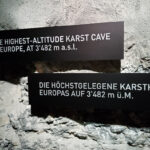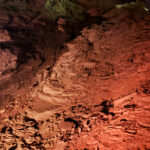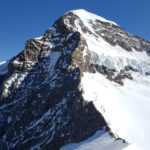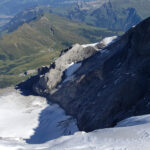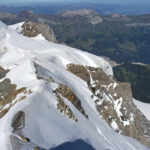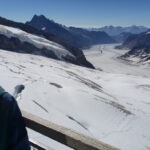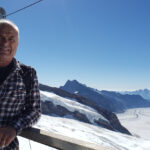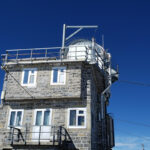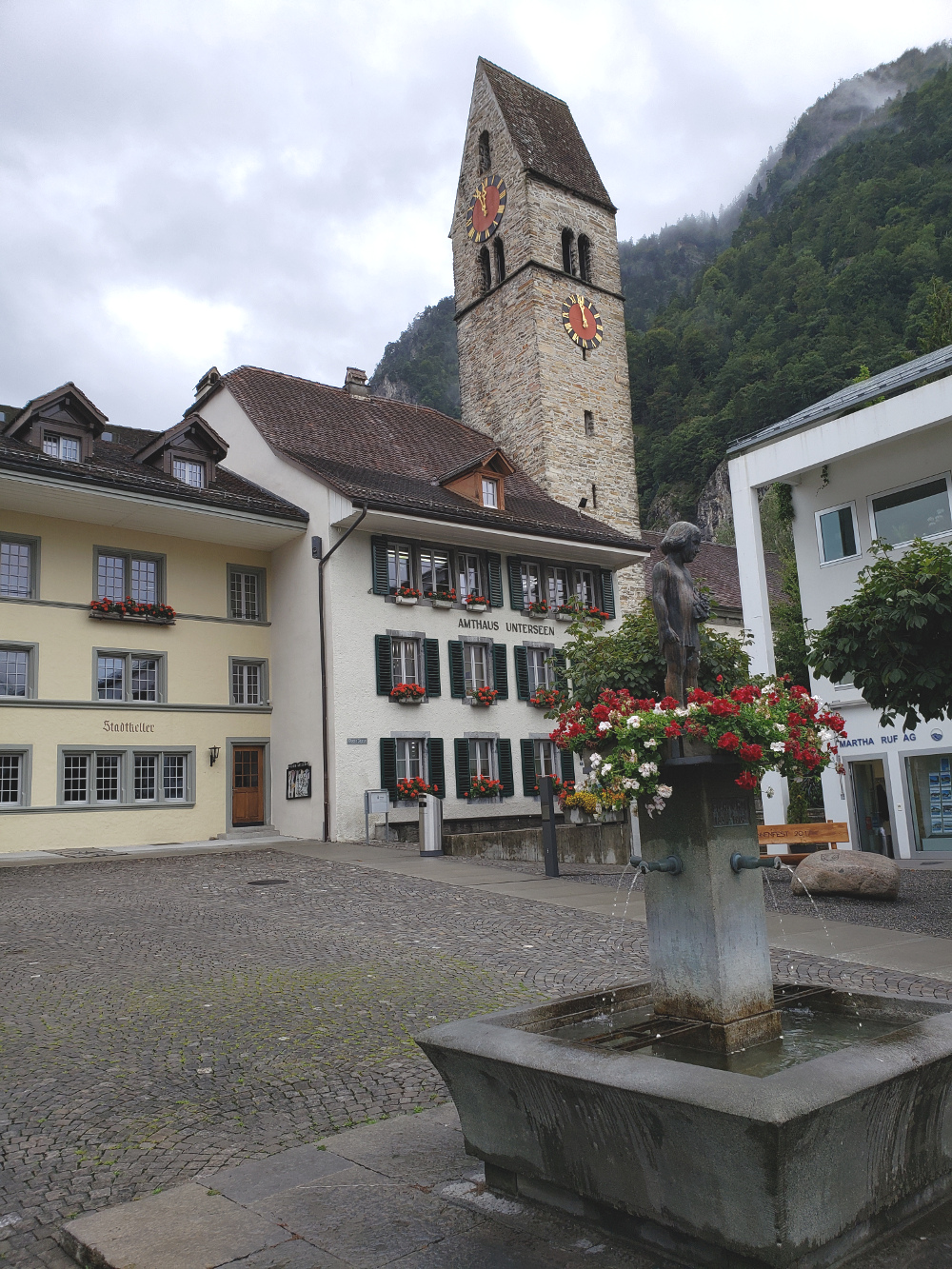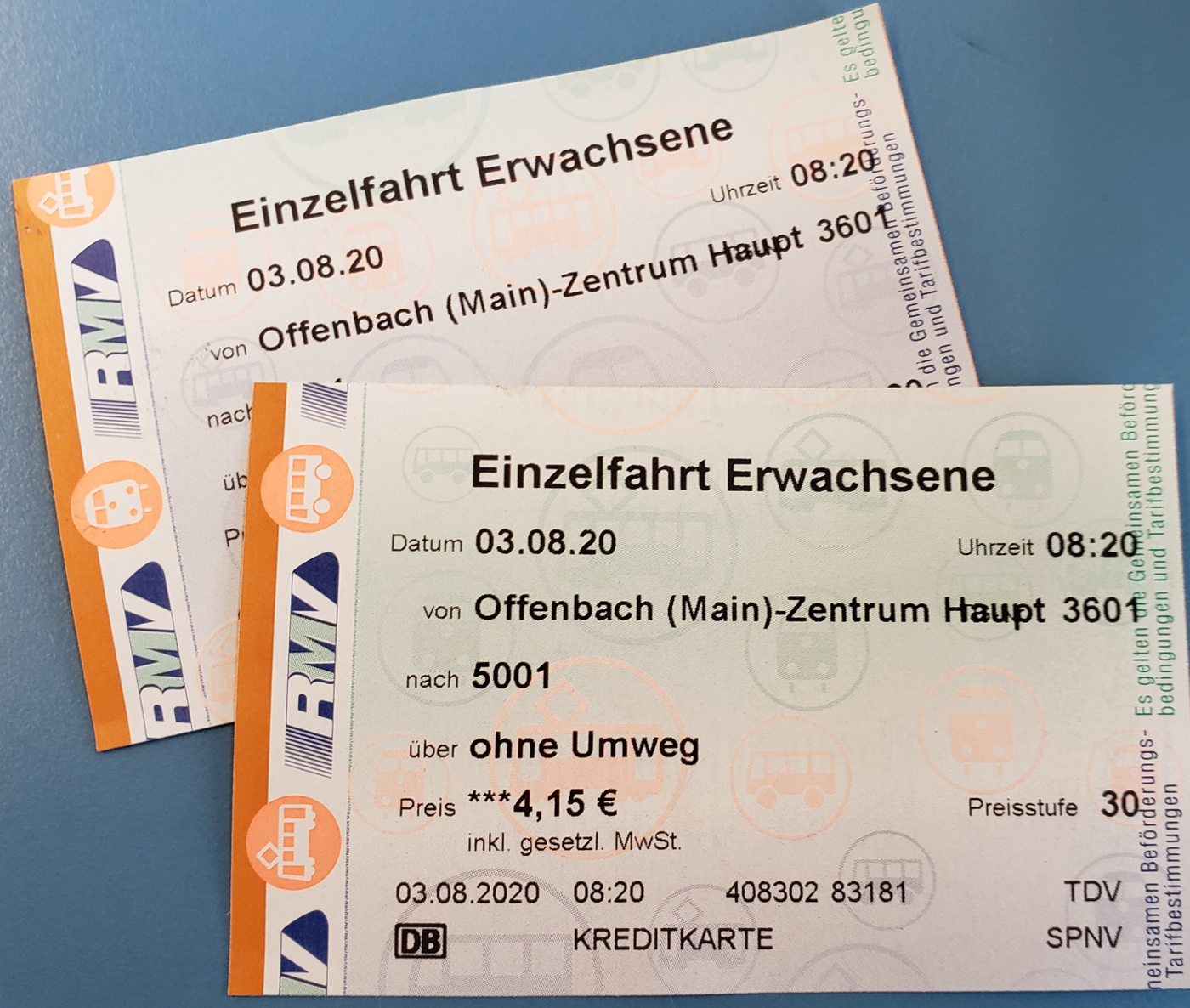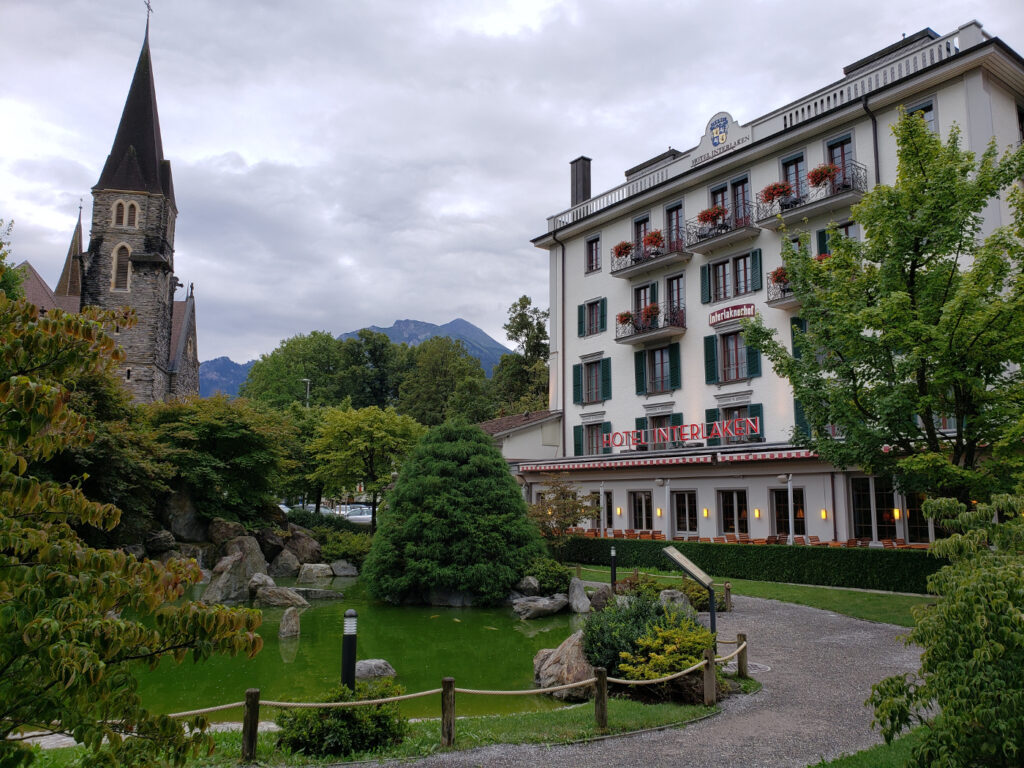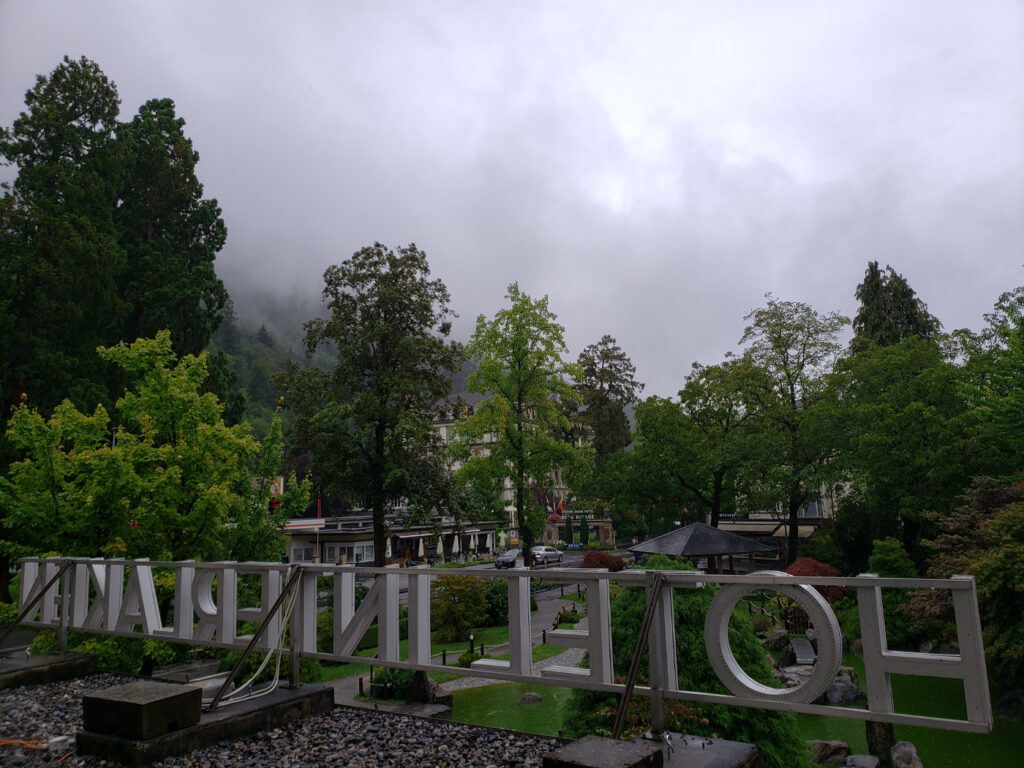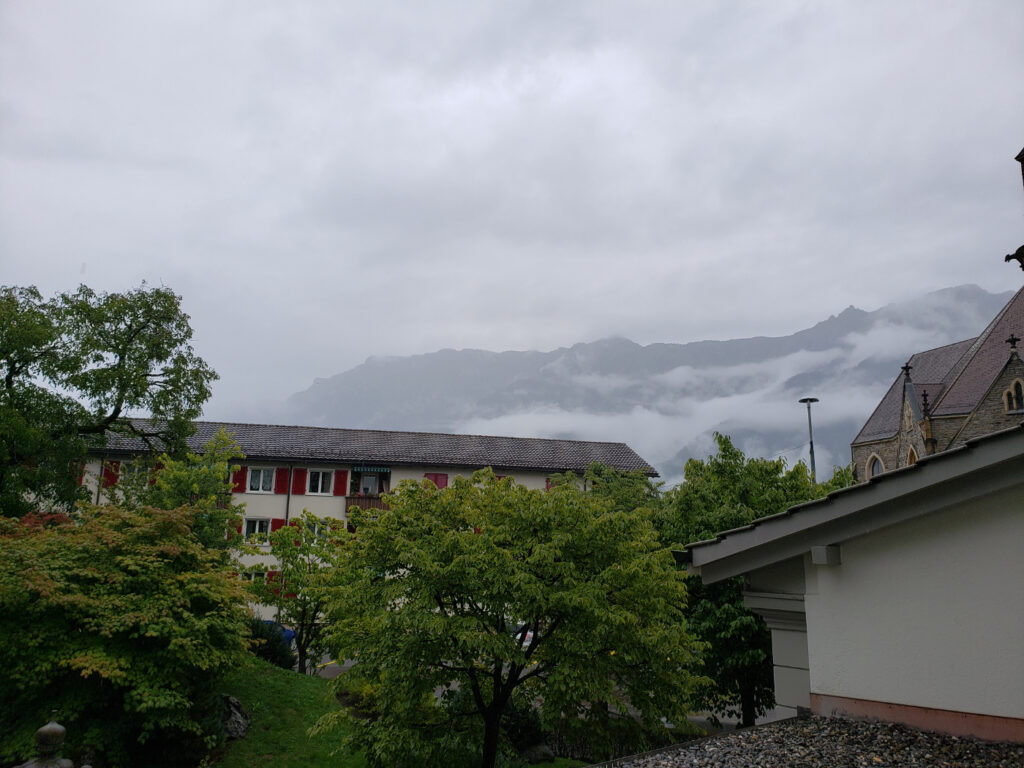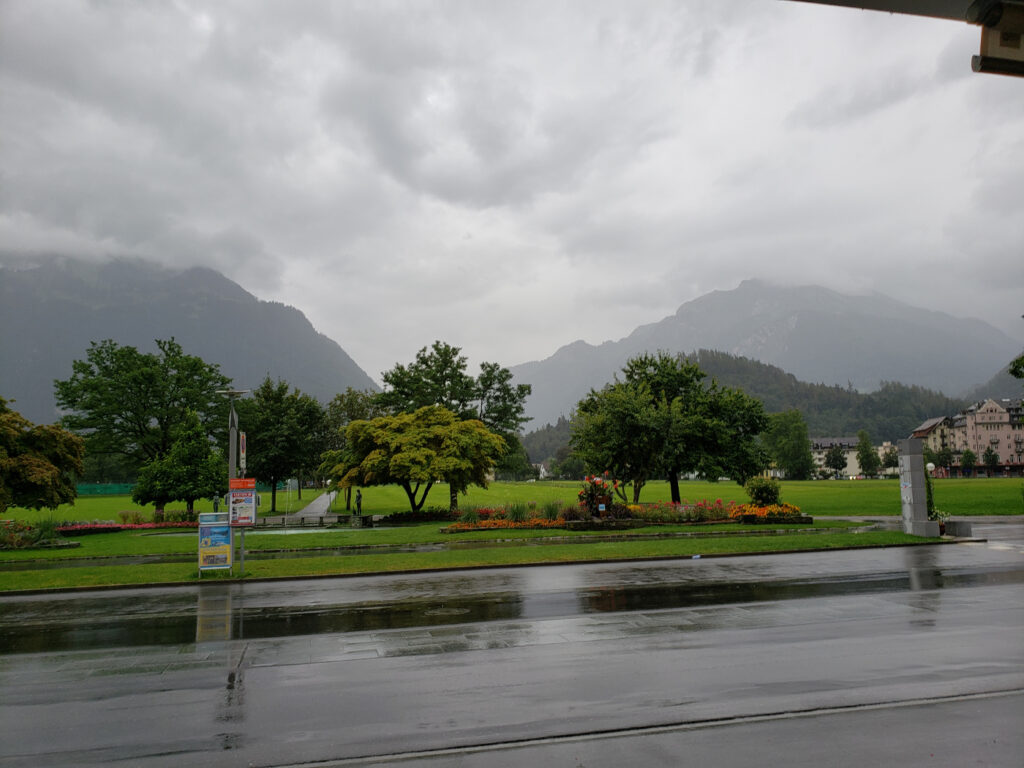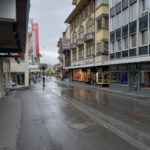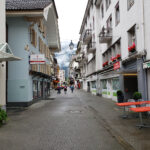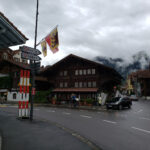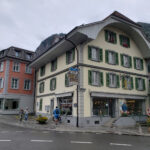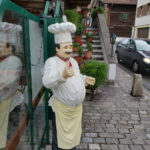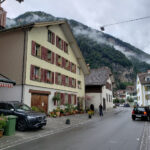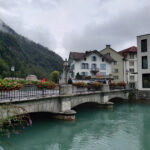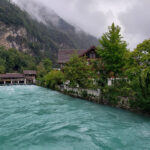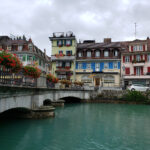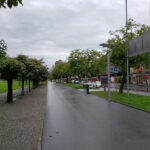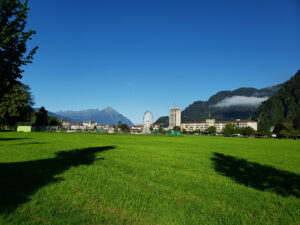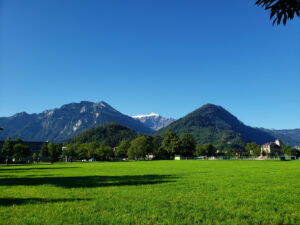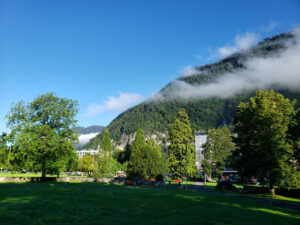Bern was originally settled by Swabians[1]The Zähringen noble family from around Freiburg im Breisgau in the twelfth century and quickly died out within a century. from the lower parts of Germany, it is the fifth largest in Switzerland and was initially surrounded by the Aare river on three sides, with fortifications protecting it’s west side.
Getting There
Bern does not have a commercial airport, so you will either have use Zürich‘s or Geneva’s and then take a train. We had already started in Geneva, so taking one of the ICE trains from Geneva to Bern was automatic. However, in typical SBB[2]Schweizerische BundesBahnen or Swiss train fashion, it was halted before leaving the Lake Léman area and we had to find another train to continue our two hour journey, which then turned into a three hour trip[3]There have been few times when traveling by train in Switzerland was a normal affair. It is getting to be more like the Deutscher Bahn.
The City
The old medieval city of Bern is rather compact, due to it being confined by the Aare river. The main train station is on the west side of the city, so it is probably best to find a hotel close to it. We stayed at the Hotel Savoy, three blocks away from the train station.
Walking from the train station to the Nydeggbrücke, via the Marktgasse of Kramgasse, should not take more than a twenty-five to thirty minutes without stopping. The main shopping avenue is the Marktgasse, which is lined with many watch stores and most other modern shops you expect to see in city that is heavily traveled. See the restaurant section below for where to go for food.
Brunnen Or Fountains
The city has a lot of brunnen, or fountains in English, especially down the middle of the Marktgasse. Most of these have figures or other mythical forms, stylized perhaps from some historical figure.
There is also the Lischetti-Brunnen, also known as the Postgassbrunnen or Upper Postgassbrunnen, which was erected in 1820 next to the Staatskanzelei (State Chancellery) and is to be used by anyone who wishes to experience being a fountain.
Hotel Savoy
A fairly good hotel on the Kramgasse, sharing an entrance with another store. We found it reasonably priced for a Swiss hotel and central for visiting the city. The breakfast is rather expensive, as it is in most Swiss hotels, at 30CHF per person. We found this unreasonable and ventured out each morning to stop at one of the many Konditoreien, or pastry shops, in the neighborhood. This option ran around 9-10CHF per person, but was only coffee and a pastry, which for use was sufficient.
Cathedrals And Churches
A few religious buildings of note in Bern are the Cathedral of Bern and the Church of Saint Peter and Paul.
Cathedral Of Bern
Church Of Saint Peter And Paul
Bridges And The Aare River
There are two central bridges that span the Aare at the tip of the city. The Untertorbrücke, the first one to be built and is shown on maps of the city from the seventeenth century, and the Nydeggbrücke, which carries the tram and modern vehicular traffic.
Bären Park
On one end of the Nydeggbrücke is the Bärenpark, or Bear Park. As early as the beginning of the sixteenth century the city has been known to have a Bärengraben, or Bear Pit, of some type or another. Ostensibly the city becoming eponymously named for the same in 1191 when the Duke of Zähringen killed a bear first on one of his many famous hunts. But seriously, this is just conjecture and there is more evidence that it was from a pre-existing toponym of Celtic origin, possibly berna, meaning cleft.
Einsteinhaus
On Marktgasse 49, visitors will find the Einsteinhaus, or the apartment that Albert Einstein lived in during his publication of his ground breaking theories of 1905, including his Special Theory of Relativity.
The Rosengarden Bern
One top of the hill on the other side of the Aare river is the park containing the Rose Garden, or Rosengarden. Unfortunately for us, the roses were not in bloom in May, so we were unable to enjoy their colors. However, there were other flowers, trees and bushes to be enjoyed in the park.
It is here, that Albert Einstein probably contemplated many of the problems around his Theory of Relativity, and a bench here so commemorates his efforts.
From this vantage point you get a very good view of the old Medieval city of Bern, with its many churches, bridges and old style houses.
Restaurants
The Bärenplatz and Waisenhausplatz are central areas for restaurants and have a good mix of local Swiss restaurants to Italian and other cuisines.
Santa Lucia Ristorante
Another Italian restaurant which has a very active lunch crowd. Here you can enjoy reasonable prices and a wide selection of Italian dishes, including pizza. Our first evening here we enjoyed the soup and spaghetti.
The second time we visited was for lunch, then I ordered a pizza, which was very good and typical of the Neapolitan style from Naples. The house wine is also very pleasant.
Ristorante Luce
On the corner of Zeughausgasse and Waghausegasse is the Italian restaurant of Ristorante Luce. If you are looking for higher end Italian food, look no further. The service here is also exceptional, though the seating was a bit cramped.
Here they serve very good Italian specialties and have an excellent wine list. Here you can find Strozzapreti, or Priest Strangler/Choker Pasta with Mozzarella. A rather large and somewhat gummy pasta with an very interesting history.
I can specifically attest to spending 150CHF for a 375ml bottle of Ornellaia 2019. A DOC wine from Italy with extremely high ratings which regularly fetches $250-$800 a bottle, a truly amazing wine. So if you are a true wine lover, your pallet might enjoy this restaurant.
References
| ↑1 | The Zähringen noble family from around Freiburg im Breisgau in the twelfth century and quickly died out within a century. |
|---|---|
| ↑2 | Schweizerische BundesBahnen |
| ↑3 | There have been few times when traveling by train in Switzerland was a normal affair. It is getting to be more like the Deutscher Bahn |

